Better Sailing


Sailboat Vs Yacht: What is The Difference?
Many boaters use the terms “sailboat” and “yacht” interchangeably when they are actually quite distinct. A yacht is a larger boat or ship that is used for recreational purposes. The term “yacht” is of Dutch origin, and it was initially described as a small, swift sailing vessel used by the Dutch navy to track down and catch pirates. A boat, on the other hand, is a smaller vessel that can range from a fishing boat to a sailboat in size. So, if you’re interested in this topic, this article will compare yachting with sailing in many ways. Like this, you will have a much better understanding of which option is best for you. Keep reading!
Sailboats and Yachts: Meaning
Firstly, it’s important to understand the meaning of each word. Generally, a boat is a form of watercraft that comes in a variety of shapes and sizes. A boat is a watercraft that is small enough to fit on a ship, which is typically less than 1,000 feet long. A ship is a huge vessel with a large carrying capacity that can transport other vessels. The size, shape, and capacity of a boat vary depending on its intended usage. Boats are most commonly employed for navigating places along the water’s edge or inland waterways like lakes and rivers, although they can be utilized on any water source. Boats can be used for a variety of purposes, including providing service to people and vessels on the water, recreational activities, commercial passenger, and cargo transportation across waterways.
So, a sailboat (sailing vessel) is a boat that is propelled primarily by the force of the wind on sails. Keep in mind that the term “boat” can cause some misconceptions about the vessel’s size. People may refer to it as a sailing ship rather than a sailing boat once it reaches a particular size. Also, boats are generally thought to be smaller than ships. A sailboat is a water-borne watercraft whose principal means of propulsion is the wind, which is captured and controlled by triangular-shaped pieces of cloth known as ‘sails.’ On the other hand, a powerboat is a watercraft with an internal combustion engine as its primary source of propulsion.
A yacht is most likely a vessel that is primarily used for personal rather than business purposes. There are yachts that you can hire for a week or more. This might add a little confusion as they are commercially owned but within the hire period, they are used by individuals for leisure purposes. Generally, people usually refer to sailboats as yachts or vice-versa. This is a common phenomenon nowadays, however, there are significantly more sailing yachts than motor yachts at the seaside/marina. If you want to specify a boat that is not largely powered by the wind, use the word motor yacht.
Sailing yachts and motor-powered yachts are the two forms of yachts available today. Yachts range in length from 26 feet to hundreds of feet. A cabin cruiser, or just a cruiser, is a luxury vessel that is less than 39 feet long. A superyacht is typically above 70 feet long. So, what is the definition of a mega yacht? They usually exceed 150 feet in length, but there is no top limit! Note that the world’s largest boat is 728 feet long, or 222 meters.
Let’s now check the main differences between a sailboat and a yacht:
Sails and Motor
The boat may be powered purely by the wind or by one or more inboard or outboard motors, depending on the model. While some larger boats may have very massive engines to provide genuine speed on the water, most yacht engines are far less powerful. Yacht engines are substantially larger, can produce far more power – up to 800hp in some circumstances – and can go many further distances.
If you’re searching for a vessel that’s easier to operate, you could argue that a yacht is a superior option. Sure, the computer components are more complicated, and there is more to manage, but sailing will be simpler. In stormy weather, managing a sail can be tricky. From inside the cabin, you can’t manage your sails. You may, however, operate your yacht from the cabin.
It’s a fact that sailboats will always have sails. After all, it’s their primary source of propulsion. The nail is what propels the boat forward by harnessing the wind. So long as the weather permits, sailing can be done anywhere, at any time. Yachting, on the other hand, has its own set of restrictions. A yacht will usually lack a sail, which can be viewed as a good or negative aspect, depending on your perspective.
The advantage of having a sail over only an engine is that you don’t have to worry about running out of fuel. Fuel is not only costly but also inconvenient and pollutes the environment. When on long voyages, you must always keep an eye on your fuel levels, or you risk breaking down at sea. The great thing with sailboats is that as long as there is wind, a sailboat can sail. If you have an extra sail onboard, you should be alright regardless of what occurs. You have a significantly lower chance of being left stranded at sea.
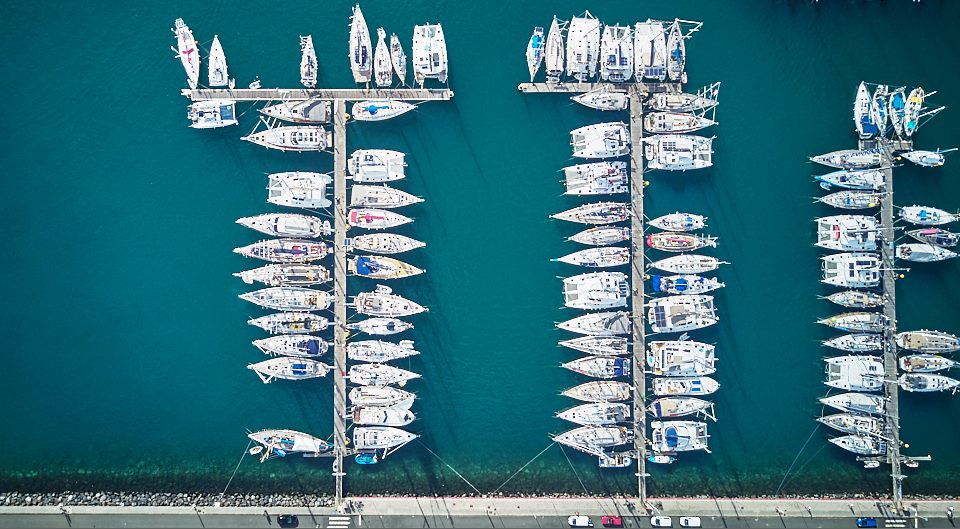
>>Also Read: Sailboats Vs Powerboats: Why Sailboats are Better
Size Matters
The size difference between a yacht and a sailboat is one of the most significant ones. Most of the time, a sailboat will almost certainly be smaller than a yacht. Of course, some sailboats are larger than others, but if we’re talking about average sizes, a yacht will be larger. The reason that size counts so much when deciding which boat to buy is that the available space is limited. So, if you opt for space note that the larger your boat is, the more space you’ll have. This may seem self-evident, but it is one of the most crucial aspects of your boat to which many people forget to give due consideration.
Generally, when it comes to boats, size will always matter. Except in cases where someone prefers overall better performance and speed. But, keep in mind that almost everything you do will be influenced by the size of your boat. The smaller the boat, the less storage space you have, the less space you have for emergency supplies, and even the less space you have for yourself. Regardless of the size of your boat, your sleeping quarters will most certainly be small. Also, depending on your height, every inch of a room may be crucial.
When there are more people on your boat than just you, size matters the most. If you intend to live alone on your yacht, you will have a significant space advantage. If there are three persons on board, you probably going to need more equipment and devices for cooking or for emergencies. All of this suggests that the sleeping space is the most significant distinction between living alone and living with people. If you live alone on a yacht that can sleep four people in theory, you will have a lot more storage and consequently space.
People on Board
The extent to which the crew will influence your decision is mostly determined by your budget and the size of the vessel you are considering buying. Meaning that if you’re intending to buy a sailboat, you won’t need any crew. Except for your family/friends that live on your boat with you, you basically are the entire crew. However, if you own a yacht, it’s an entirely different scenario.
If you intend to live aboard your yacht, you may require the assistance of one or two crew members. There will be plenty to do even if you are the most essential member of the team, i.e. the captain. This is because you might haven’t already mastered things like navigation, maintenance, plumbing, and engineering. So, a yacht often requires a complete crew to assist with navigation, maintenance, electronics and engineering, repairs, and sometimes even stewards to attend to the passengers.
In other words, having a sailboat means that you can take care of everything yourself. There are only a few computer components that will need to be repaired, and you are unlikely to have an engine. Repairing a sailboat isn’t easy in and of itself; it’s just easier for one person to handle. Meaning that it’s far easier to replace a sail than it is to fix an engine. In bad weather, a small sailboat is just easier to monitor than a large yacht. At the absolute least, another set of eyes will be probably required when sailing with a yacht.
Price also Matters
In general, yachts tend to be more expensive than sailboats. Occasionally, a great deal more. For a variety of factors, the most important of which are materials, design, and construction techniques. Note also that a boat’s price is likely to rise as it becomes more modern. Although this isn’t always the case, it is the vast majority of the time. If money is a key factor in deciding which boat to buy, here’s something to think about: just because a yacht is more expensive doesn’t mean you shouldn’t have one. If you have the cash, knowledge, and you know the kind of sailing you will be doing then go for a yacht!
Note also that a sailboat can be outfitted with a variety of amenities and conveniences. But, the sailboat doesn’t always include these features. This will mostly depend on the type of sailboat. As a result, buying a basic sailboat can save you a lot of money. However, most yachts will provide high end amenities. As a result, a motor yacht will cost significantly more than a regular sailboat. Sailboats are also smaller than yachts, which means you have a larger selection of less expensive boats to pick from when making your purchase. But, yachts often start in the six-figure range and can reach millions of dollars depending on the yacht’s size, age, and build quality.
Maintenance and Repairs
Yachts are frequently more expensive to maintain than sailboats. Meaning that boat engines require a great deal of upkeep, and the expense of fuel can be prohibitive for many individuals. For example, did you know that a gallon of diesel fuel in a yacht may only allow you to travel less than 1 nautical mile? If you’re going on a long voyage out to the sea, you can end up spending a lot of money on fuel. A sailboat, on the other hand, can take you wherever you want to go with very little fuel. Bear in mind also that a yacht’s insurance is more expensive than that of a sailboat. One of the main reasons is because it is classified as a yacht.
In addition to the boat’s price there are some other things to consider. The most important one is maintenance and repairs. A boat will always need these and it might need them once per month or once per year. It depends on the kind of repairs and on the way in which you “treat” your boat. Also, if you’re buying a used sailboat, you will need sometimes more research and more money for upgrades. It will be repainted, restored, and upgraded, although it will remain the same size. You should approach buying a boat in the same way that you would with a car. So, according to the size and kind of boat you want to buy, it’s important to keep in mind the price and extra costs as well.
While advanced marine electronics and navigation systems are available on some boats, they are more of a must for yachts. When doing transatlantic voyages, it is critical not only to be able to navigate with precision but also to be able to identify other boats or objects that you may not be able to see, as well as to comprehend your vessel’s performance.
When it comes to technology, it’s not just about whether you’re choosing a sailboat or a yacht. The age of the specific vessel is also something to consider. A sailboat that is more than ten years old may not be as technologically advanced as a brand new sailboat. Better technology can offer a lot of opportunities for you if you decide to buy a yacht. First and foremost, it can make working on your boat much more convenient. There’s no reason you couldn’t work remotely from your boat if you have the ability to set up a functional office with wifi.
Technology also brings up a lot of new possibilities for you when it comes to the act of sailing. A sailboat could traverse the Pacific or Atlantic, but it would be rather difficult. On the other hand, with a yacht, it can be a lot easier. In comparison to a sailboat, your yacht will have advanced navigational systems, warning and guidance systems, and many more safety features.
Sea, Lakes, or Rivers?
Bear in mind that in shallow waters, large yachts are unable to sail. A sailboat is a way to go if you plan on sailing in areas with shallow waters. In the Caribbean, for example, a yacht might be difficult to navigate. At the very least, it’ll be more difficult than sailing. A yacht, on the other hand, may travel to far more places than a sailboat.
A small sailboat might theoretically sail across the Atlantic. However, it can be quite risky, and your boat might not be able to withstand the strong winds and waves. Furthermore, if you’re aboard a sailboat, you can be the only one on board. This means that if the worst happens, far out at sea, there will be no one to aid you. You can do it, of course, but it is risky.
So, smaller boats may normally operate in calmer seas such as lakes, rivers, and shallow harbors. Larger boats, usually between 20 and 30 feet long, can equally navigate rougher ocean seas. A yacht, on the other hand, can sail in deeper ocean waters and handle more choppy seas. Yachts are significantly more ideal for lengthy ocean voyages due to their bigger size, high-tech electronics and guidance equipment, weather protection, and a variety of other characteristics.
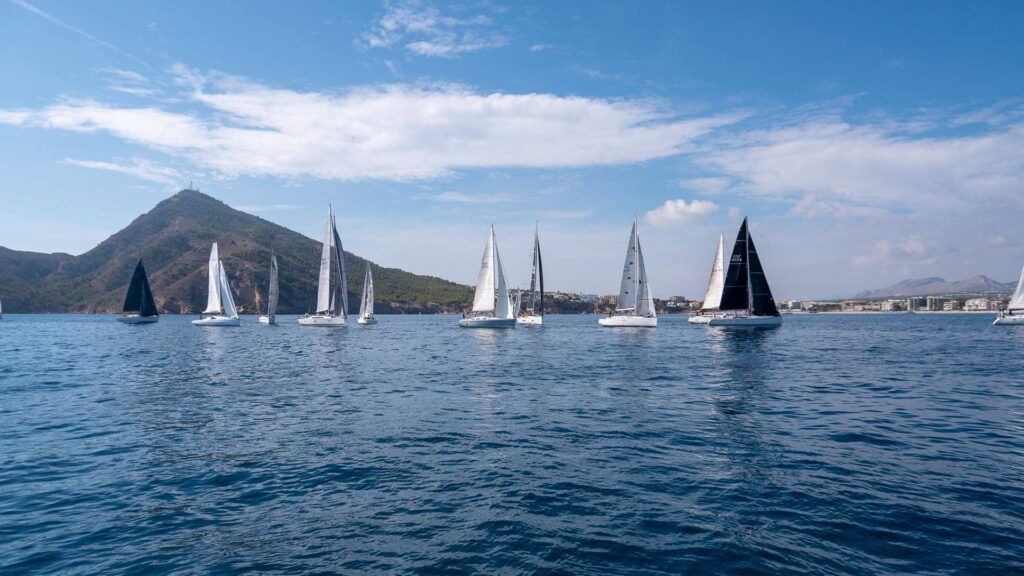
>>Also Read: Sailing Vs Boating: Why Sailing Is Better
Sailboat and Yatch Construction
Depending on the anticipated scale of production, sailboat makers can fabricate their own parts or order them. Masts, sails, engines, and metal fittings are common items provided by specialty vendors. Boatbuilders, on the other hand, create their own fiberglass hulls, using Gel coat polyester resin, a catalyst for the resin, woven fiberglass roving, and fiberglass. Wooden hull manufacturers create and shape their own wood in the same way. Note that the main building materials used in boat construction are aluminum, metal, wood, and fiberglass. The unique structure of each material offers a different design and usage as well as additional features to the way in which the boat is built.
Material considerations are important, whether they affect the cost or the durability of the product. Fiberglass, carbon fiber, and metals such as titanium will also be used to construct a boat. On the contrary, a sailboat will most likely be composed of wood or fiberglass. So, in case you value safety and sturdiness above all else, and money isn’t a big issue, a yacht will be significantly safer for you.
The material can also influence the way in which you make repairs. For instance, a wooden boat is much easier to repair than a metal boat. You can make some simple and quick repairs using wood, and they’ll probably last till you get to a marina. To do major repairs on a yacht, you’ll need a lot of specialized equipment and knowledge. Moreover, you may need to ask for a crew member to help you with this.
Sailboat Vs Yacht – Summary
As you can see there are many differences between a sailboat and a yacht. Nowadays many people tend to confuse or don’t be aware of the exact meaning and differences of these vessels, and it’s normal. But, we, as sailors, have to know the differences in order to understand which kind of boat is right for us. For example, if you want big spaces, luxury, or intend to liveaboard then you should opt for a yacht. But, if you want to experience the true joy of sailing, sail anywhere without worrying about polluting the environment or spending too much on fuel, then go for a sailboat! It will entirely depend on your needs and preferences so weigh the pros and cons of each one before making the decision.
In any case, I hope that you have now clarified the differences between these two and that you will make the right choice. I wish you all safe & enjoyable voyages!
Peter is the editor of Better Sailing. He has sailed for countless hours and has maintained his own boats and sailboats for years. After years of trial and error, he decided to start this website to share the knowledge.
Related Posts

Atlantic vs Pacific: Which is More Dangerous for Sailing?

The Ultimate Guide to Choosing the Best Fishing Line for Trolling

Lagoon Catamaran Review: Are Lagoon Catamarans Good?

Best Inboard Boat Engine Brands
- Buyer's Guide
- Destinations
- Maintenance
- Sailing Info
Hit enter to search or ESC to close.

Sailboat Vs Yacht? 14 Things To Consider (Before You Choose)
Making a choice between a traditional sailboat and a yacht can often be difficult and maybe even a little confusing.
This is because the term boat and yacht are often used interchangeably.
In this article, we’ll assume a yacht is a boat that is over 26 feet in length with high-end materials used in its interior.
Here are 14 things to consider when deciding between a boat vs. a yacht:
Table of Contents
1) What’s The Desired Use Of The Vessel?
One of the first thoughts to keep in mind is your desired use:
- What do you want to do with your new boat?
- Do you want to go racing or deep-sea fishing?
- Or will you simply be cruising in the boat?
People looking for a boat to race probably won’t want to get a yacht.
This is because yachts focus more on luxury than they do on speed and maneuverability. As a result, the amenities are usually heavier.
An existing yacht can be laid out as a fishing vessel, but it wouldn’t make much sense to do so. This is because you’d have to change the deck area to make it more conducive to fishing.
In this case, it would be better to start off with a sport fishing boat/ yacht for this purpose instead. Big ocean-going sport fishing boats are just a specialized type of yacht.
A cruising trawler/ pilothouse vessel is another specialized type of yacht that is less expensive than a large express motor yacht, and they can be just as seaworthy.
2) Amenities To Consider

If you’re searching for a boat that features many amenities, you may want to consider getting a yacht over the other types of boats.
A yacht will often have features such as large refrigerators, washing machines, and dryers.
A really big yacht may also feature recreation amenities like hot tubs and even full-size pools to swim in. In fact, a mega-yacht might even have a pool large enough to swim laps in.
If you’re not into swimming inside of your boat, you can still take advantage of water features on your yacht. I’ve seen yachts with koi ponds and even waterfalls built into them.
Another amenity that many yacht owners enjoy is a built-in movie theater. These movie theaters have large projectors, plush seating, and can even feature porthole windows.
People can even get a good workout while out on their yachts in their own fitness centers. These fitness centers can be as simple as a few cardio machines and some dumbbells, or they can be state of the art centers that feature everything a commercial fitness center might have to offer.
A sailboat yacht can also have these types of amenities. An example of this is the Sailboat Yacht A, see here . But sailing yachts in general do not have as much room for amenities as the same size of power yacht.
On top of this, a sailboat yacht is often designed for rough ocean passages. The spaces of these yachts will be smaller, such a tighter galley kitchen. This doesn’t offer as much space for cooking but it does make it easier to cook without falling over during rough weather conditions.
3) Comfort Vs. Bunk Beds
Motor yachts tend to be much more comfortable than the average sailing yacht as well. This is because these motor yachts boats are usually made primarily with comfort in mind.
You’ll notice that saloon living spaces have leather couches and recliners throughout and that even the beds tend to be a bit more spacious.
Even the offices or navigation stations inside of a motor yacht tend to be outfitted with the most comfortable desks and chairs.
For people who are searching for more active comfort options, a motor yacht can have massage parlors, salons, and even saunas built into them. A traditional sailing yacht usually won’t have options like these, but it will be more comfortable to sail in and to sleep in while out in rough seas.
One example is that a sailboat will have handrails and foot rails in strategic places.
On top of this, a sailboat will have bunks that are easy to get in and out of and that also have bed rails so that sailors do not roll out of them when the weather gets rough.
4) Sailing Skills Needed
When you’re choosing between a sailing yacht and a motor yacht, you may want to consider what your level of sailing skills are.
A yacht can be purchased as a sailing yacht or a power yacht but a sailboat is always going to rely on its sails for any long-distance voyage.
Also, sailboats can be purchased in a wide variety of sizes.
A sailing yacht is usually longer than 26’. As a result, a yacht might be harder to sail than a traditional sailboat.
In fact, it may be impossible for you to sail a yacht by yourself. People with larger yachts will have to hire a crew to help them out each time they want to go sailing.
Here’s our guide to how big you can go before you need a crew for your boat .
5) Where Do I Get The Most For The Money?
A sailboat can have a lot of luxuries and comforts built into it. However, a sailboat doesn’t have to have these amenities built into it. As a result, you can save a lot of money by purchasing a basic sailboat.
Yachts, on the other hand, will always have expensive amenities to consider.
Because of this, you’ll pay a lot more for a motor yacht than you will a typical sailboat.
Also, sailboats can be smaller than yachts so you have more inexpensive boats to choose from when making your purchase. Yachts on the other hand usually start out well into the six-figure range and can go up into the millions depending on the size, age, and build quality of the yacht.
A yacht may also be harder to find in your area.
This is especially true if you’re buying a sailing yacht. The scarcity of yachts compared to the abundance of sailboats drives the prices of yachts up even more. This means that if you’re looking to buy a yacht in a part of the country that doesn’t have very many yachts available, you may pay an even bigger premium as well. Of course, large motor and sailing yachts are almost always kept on an ocean coast or maybe the Great Lakes, no matter where the owner lives.
6) Ongoing Expenses To Factor In
Yachts can often cost more to maintain than sailboats.
This is especially true if you’re buying a motor yacht. Boat engines require a lot of maintenance and the fuel costs can be prohibitive for many people.
For example, did you know that you might only be able to travel less than 1 nautical miles on a gallon of diesel fuel in a yacht? Go on a long journey out to sea and you could end up spending a fortune on fuel. A sailboat, on the other hand, will get you to where you want to go without hardly any fuel at all.
Even the insurance on a yacht is more expensive than it is on a sailboat. One reason is simply because of its designation as a yacht.
Here’s a complete guide we’ve made with insurance cost for boats . It will help you get an idea of what to expect.
Insurance companies will charge more just because of this designation.
Another reason the insurance is higher is that yachts are usually more expensive to buy than a sailboat. Because of this, yacht owners need to cover a larger dollar sum on their yacht than a sailboat owner does.
One advantage in ongoing expenses that a motor yacht owner does not have to contend with is the expense of maintaining, storing, and replacing the sails. A sailboat’s sails must constantly be monitored for damages and stored safely out of the sun and saltwater whenever possible.
With a motor yacht, you don’t have these issues.
7) Distances Traveled Between Ports

Even large motor yachts will still have limits to how far they can travel between ports.
This is because they simply run out of fuel at some point.
Sailboat owners don’t have this issue as much.
A sea-worthy sailboat can travel for as long as the crew can manage. In this case, the only limiting factor might be the amount of food that the sailboat owner can bring along.
For this reason, people looking to circumnavigate the world often opt to buy a large sailboat rather than a motor yacht. This also saves them on fuel costs so they won’t have any distance limits due to budget constraints.
Even yacht owners that plan to travel along island routes may still have limits as to how far they can travel. This is because replacement parts can’t always be found worldwide.
As a result, a yacht owner might end up stuck in one place while they wait for the arrival of a skilled yacht maintenance tech or a specialty part to arrive from overseas.
8) The Ability to Trailer The Boat
As we said earlier, the minimum size for a yacht is 26’ long. The width of a 26’ longboat is usually well over 8’ wide. Eight-foot is the maximum width that is allowed on many U.S. roads.
Even more lenient states will only allow for a maximum width of 8.5 feet.
As a result of all of this, it is impossible to trailer a yacht. This makes storage and travels more complicated and more expensive. It also makes it a lot less convenient.
A person looking for a boat that they can trailer will be better off buying a small sailboat. The mast could be taken down so that the boat can be taken through bridges and tunnels without damage to the boat.
In fact, a sailboat can technically be purchased in models that are small enough to be transported on top of a vehicle or within a truck bed.
These sailboats are highly mobile and can be fun to use recreationally.
9) Available Space On The Deck(s)
Sailboats don’t always have a lot of deck space. This is because much of their deck space is taken up with the mast, sails, and rigging. As a result, people looking for a boat with a large deck to hang out on would be better off buying a motor yacht.
A yacht is often designed with deck space in mind. In fact, a yacht will prioritize lounging areas on the deck. A large sailing catamaran will have much larger deck areas than a monohull sailboat.
Because of this, a yacht becomes a more social boat that is great for cruising and dock parties.
The downside of this, of course, is that you’ll have a larger deck to clean up each day. A yacht’s deck often needs to be cleaned every day just to keep the saltwater from damaging it.
10) Cruising Vs Sailing
A sailboat owner gets to experience the thrill of sailing.
They get to become one with the boat as it heels on the water and runs with the wind. This experience is a dream come true for many sailors.
For others, this experience is miserable. These people may be prone to seasickness, they might not like the excitement of sailing, or they simply might feel like it is too much work to be fun.
Motor yacht owners, on the other hand, get to cruise along the water at a comfortable pace and they don’t have to rely on the wind to take them anywhere. A yacht owner will travel in comfort but they’ll never get to experience the exhilaration that the sailboat owner gets to experience.
If you’re an adrenaline junky, you’ll probably gravitate more towards buying a sailboat. On the other hand, if you like to relax on the water with your friends, you may be more suited to motor yacht ownership.
11) Crew Quarters
The owners of large yachts will often hire crews to manage their boats for them.
Because of this, you’ll find luxury accommodations on one end of the boat with crew quarters on the other end of the boat.
In fact, you may even find that larger yachts have captain’s quarters as well.
A captain’s quarters are usually well-appointed and the captain will have his or her own head on-suite. Crew quarters are usually smaller and you’ll often have three crew members sleeping in the same room with bunks.
Sailboats can also have crew quarters but many of them are more democratized.
What I mean by this is that instead of several luxury quarters and a few crew quarters, you’re more likely to find a sailboat with quarters that are more even in size and capacity and you’re less likely to find berths with heads built into them.
12) Desired Length
It isn’t possible to buy a tiny yacht. The smallest yacht that you can buy that is still considered a yacht is 26’ long.
Sailboats, on the other hand, come in many different forms and many different sizes.
You can buy large sailing yachts that rival the size of motor yachts or you can buy small sailing vessels that you can put on top of your vehicle.
This versatility in size makes sailboat ownership more universal. Most people can buy a sailboat even with a modest income. Yachts, on the other hand, are much bigger and much more expensive.
As a result, you’ll find that only people with higher incomes or with a lot of interest in yachting will be willing to spend the money it takes to invest in a yacht .
13) Want To Join A Yacht Club?

Some yacht clubs are yacht clubs in name only. These clubs will allow anyone with a boat to join the club.
In some instances, people can join these clubs without ever even owning a boat.
More serious yacht clubs will insist that you own a yacht.
In fact, they may even have minimum boat requirements. For example, you may have to own a newer yacht or you may have to own a yacht of a certain size.
Here’s everything you need to know before you consider joining a yacht club . It’s a great guide we’ve made to help you understand how these clubs work.
If you’re looking to join a local yacht club, you may want to check with the club before you make your yacht purchase.
It would be unfortunate if you bought a brand new yacht only to find out that it was a foot or two shorter than it needed to be to meet the requirements of the yacht club.
Sailors have other club options.
A person looking to join a sailing yacht club may need to buy a certain type of sailboat. For example, a sailing club may only accept sailors with monohull sailboats.
In this case, you’d want to check with your local sailing clubs before making your purchase.
14) Renting or Buying?
Yachts and sailboats don’t need to be purchased outright. Some people will rent their boats for specific trips.
This can be especially advantageous for people who want to take a long trip on a yacht.
The reason for this is that the rented yacht might also come with a fully-staffed crew. This crew will have experience with the boat you’re renting so you won’t have to worry about having them trained.
People looking for a sailboat instead might also find renting to be better than buying.
Here’s a guide we’ve made with a long list of examples on renting prices on sailboats .
For example, a person could rent a different type of sailboat each time they decide to go out for a day of sailing. This gives them many different experiences and eliminates the storage, insurance, and maintenance costs.
In fact, even people who are looking to buy might want to start off by renting a few times first. This will give the potential boat owner the chance to explore their options before making a long-term commitment.
Here’s another article we’ve made with more things to think about if you are considering whether to rent or buy a boa t.
Before deciding which type of boat to buy, it is a good idea to determine what needs you prioritize the most. If you’re looking for an economical vessel to take on long-distance voyages, you may want to consider a sailboat or sailing yacht.
Otherwise, you could go with a motor yacht which might make cruising more pleasant.
Click to share...

My Cruiser Life Magazine
Yacht vs Sailboat – A Definitive Guide
What exactly is a yacht, anyway? Does it have to be a motor boat? But what about large sailing yachts?
The term is confusing because it is used differently in different places. Sometimes, it’s a term only reserved for large motor yachts with multiple crew member teams.
Here is a look at my observations. You might find that the lines are different in your harbor, but this article should get you started.
Table of Contents
- Sailboat vs Yacht – What’s the Difference?
Six Things that Make It a Yacht
So what’s a yachtie, then, sailing yacht vs motor yacht, types of yacht — what makes it a megayacht, modern yachts, classic designs.
- What about Yacht Racing?
Sailing Yachts or Motor Yachts
Faqs – motor and sailing yachts vs sailboats.
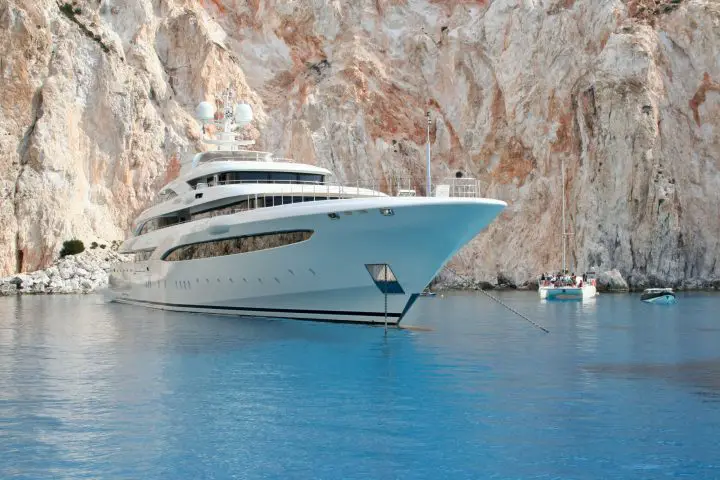
Sailboat vs Yacht – What’s the Difference?
Before diving in, it should be noted that there is some regional variation at play. For example, American and British sailors use the word yacht very differently.
First, the American definitions. From the Merriam-Webster dictionary, here are how sailboats compare to yachts.
Sailboat – A boat usually propelled by sail sailboat Boat – A small vessel for travel on water Yacht – Any of various recreational watercraft, such as a) a sailboat used for racing, or b) a large usually motor-driven craft used for pleasure cruising Merriam-Webster Dictonary
So right away, we can see a few trends that play out in the real world. For one, any term with the word “boat” is inherently generic. It could be a fishing boat, a work boat, or a pleasure boat. Likewise, it could be a sailboat or a motorboat.
On the other hand, a yacht is a special kind of boat. It is always for recreational and not commercial use. Sometimes it’s a sailboat used for racing, and sometimes a motorboat used for cruising.
From my personal experience on the water, I don’t disagree with this definition, but it leaves out a lot of nuances.
Across the Pond, the use of the word yacht is slightly different. In British usage, the words “yacht” and “sailboat” are used more or less interchangeably, with more sailors tending toward the word yacht. Here’s the definition according to the Cambridge English Dictionary.
Yacht – a boat with sails and sometimes an engine, used for either racing or traveling on for pleasure Cambridge English Dictionary
This sounds like the definition of a sailboat by US usage to my ear. But this is precisely how many Brits I have met in my travels refer to their boats—er, yachts.
Besides the dictionary definitions, we could look at how the term is used in the publishing world. For example, one of the most popular UK-based magazines is Yachting World . The magazine covers cruising boats, global sailing destinations, around the world races, and general sailing techniques. Its nearest US competitor is called Cruising World.
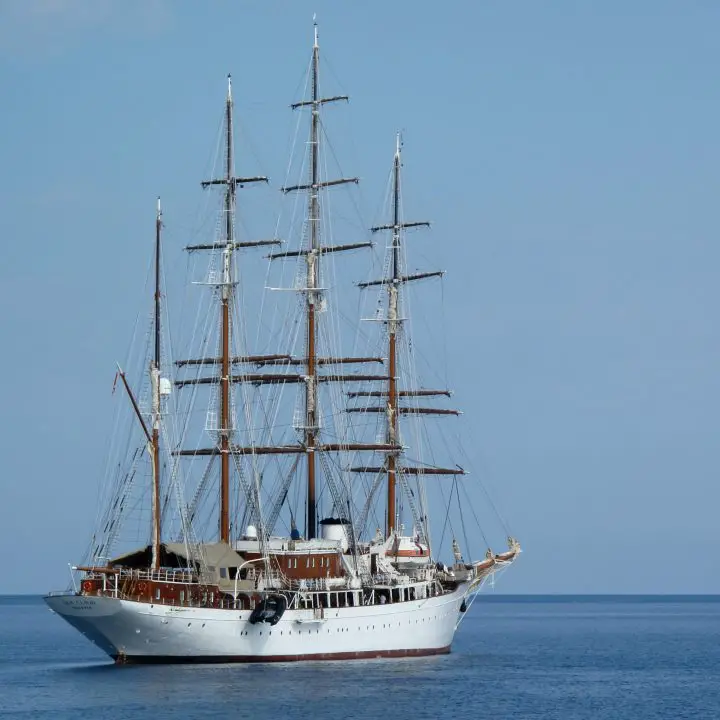
As a boater in South Florida, I became more aware of the differences between a boat and a yacht. You cannot navigate the waters between Fort Lauderdale, Palm Beach, and Miami for long without noticing a few other things that will qualify you as a yacht.
1. Yachts are nearly always operated by a professional crew who act as hosts for the owners and guests. There’s always a captain and chef, and usually stewards and deck hands too.
2. Yachts are flashy—they look expensive, and they are expensive. They shine, they’re always washed, and their wood and stainless glisten with perfection. After all, they have a full-time crew to tend to all of that.
3. While motor yachts are more common, there are plenty of beautiful sailing yachts on the water as well.
4. Yachts tend to be big. They need to be big enough for guests and crew to be comfortable. Plus, many are owned by business owners who use them to entertain.
5. Yachts spend much of their time with no guests/owners on board. Instead, the crew moves the yacht from one place to another, and the owner flies in to enjoy a few days a month onboard.
6. Many yachts are available for charter. While one person might own it and use it, they don’t spend all their time onboard. So when it’s still idle, it and its crew are leased out for days/weeks/months at a time.
Even within the subset of the motor yachts, there is significant variation and room for definition. To illustrate, some boats are designed to be sleek and modern, with the stately look of a yacht.
The term yachtie is commonly heard in port cities around the world as a person who gets off a yacht. Initially, this term was used only for wealthy owners or their guests. However, if you’re in a place where “yacht” means smaller boats, then any sailboat owner could be called a “yachtie.”
Nowadays, though, the term yachtie also could refer to the crew. Bravo TV’s Below Decks reality series focuses on the adventures and misadventures of the crews on these sorts of yachts.
More often than not, yachts are motorboats. But they aren’t just any motorboat. They are often sleek and fast ones that look like they just blasted out of the newest James Bond film.
There are also plenty of other styles of yacht on the ocean. Yachts take many shapes and forms since the best naval architects design them to suit whatever their clients want to do.
For example, some yacht owners use their boats to explore the Seven Seas. To do this, they might commission a custom expedition yacht or convert an old research vessel, fishing boat, or tugboat. These vessels are great for getting off the beaten track and taking any long trip.
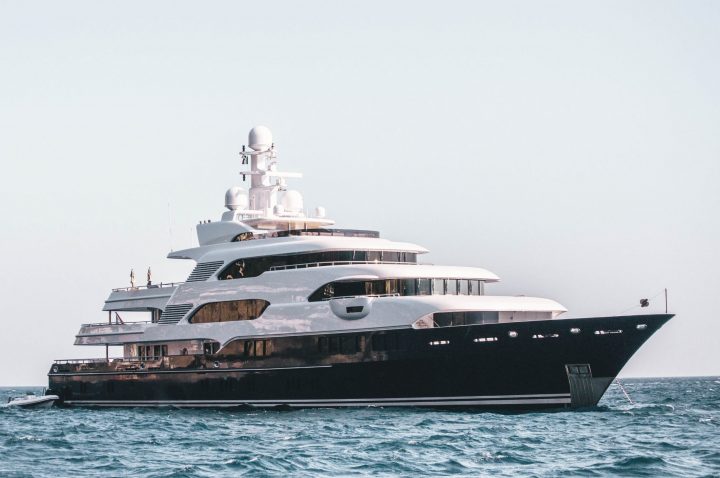
And similarly, some yacht owners want to sail. Some enjoy sailing for sailing’s sake, and others want their floating mansions to produce a smaller environmental impact by cutting down on their use of fossil fuels.
There are classic sailboat superyachts, like the three-masted schooner EOS . The EOS is the second-largest pure sailing yacht in the world at 305 feet (95 meters) long. She was launched in 2007 and is owned by movie billionaire Barry Diller and his wife, fashion designer Diane von Fürstenberg.
But you can’t compare the motor yacht vs sailing yacht without mentioning some of the other ultra-modern takes on the classic sailboat. The Maltese Falcon is a well-known sailing superyacht with three masts. But unlike the conventional schooner rig found on the EOS, the 288-foot (88-meter) Maltese Falcon has DynaRig technology . It looks like a square-rigger from the 1800s, but the masts can rotate, allowing it to sail upwind.
And for those who are still pondering sailing vs motor yacht design, you can’t miss Sailing Yacht A . Sailing Yacht A is sometimes noted as the largest sailing yacht in the world, but due to its unusual design, it is actually a “sail-assisted yacht.” In other words, this boat has sails, but it needs to run the motor to make way—the sails only help the motors.
How Big Is a Yacht?
With varying meanings worldwide, no single definition for the word yacht exists. Many brokers and charter companies loosely define a yacht as being at least 80 feet (24 meters) long.
In an industry where the lowest entry-level model needs to be big, luxurious, and fancy—how do different naval architects and boat makers differentiate themselves? In other words, how can a yacht be more than just a yacht?
The answer, of course, is to be a SUPER or a MEGA yacht. There’s no agreed-upon definition of what precisely these terms entail, but make no mistake–it takes a big yacht.
Worth Avenue Yachts, a global yacht broker and charter specialist company, postulates that a superyacht is at least 78 feet long (24 meters).
Furthermore, mega yachts are even grander. They start around the 200-foot (60-meter) line and keep getting bigger from there. The largest megayacht in the world is the 592-foot (180-meter) AZZAM . AZZAM was launched by Lürssen Yachts in 2013 was built for the President of the United Arab Emirates.
Yacht Aesthetics
So we’ve touched on the fact that yachts are usually pretty big, and in some cases really, really big. But there’s another thing that sets them apart from the typical sailboat, too. Yachts look different.
Generally, there are two aesthetics or looks that yachts take on, forming something of a motor yacht debate. Of course, this isn’t an inclusive list. Many designers work to make a statement with their yachts. The look of the finished vessel is a statement and an advertisement for the builder.
There are many yachts built that are designed right from the drawing board to turn heads. The most common way they do this is by making them modern and sleek, even futuristic at times.
Designers and builders put the latest technologies into yachts to appeal to early adopters of new technologies. What CEO or celebrity doesn’t want to own the world’s fastest yacht ?
And then there are futuristic-looking ones with forward-thinking designs. Boat International collected some of the craziest-looking yachts that are worth a look.
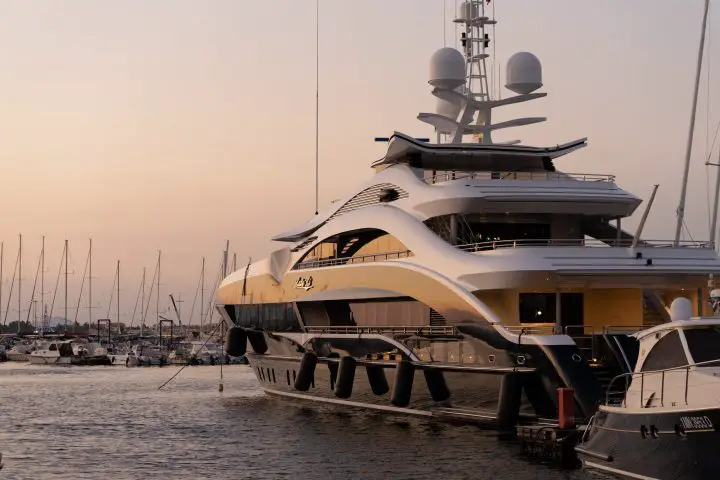
The yachts above get their title as yachts thanks to their value and size. But there’s another classification that you should consider—those yachts that get their name for their air of traditionalism.
Perhaps they are well-cared for or restored wooden hulled yachts from the 1920s or 30s. Many of these classics are sailing yachts , but that isn’t always the case.
In some cases, they are modern fiberglass or metal-hulled boats built recently and designed by contemporary designers. But their owners wanted that classic yacht aesthetic, so they created something that appears older than it is. Here’s a look at some of the nicest classic yachts out there.
What about Yacht Racing?
The older, more traditional British use of the word yacht seeps into everyday American English in a few places.
They’re more common on the international stage, so beyond the everyday use of yacht terms in the US, these particular uses harness a more global view of the word.
One such example is in the term yacht racing. Yacht racing sounds fancy, and it usually is, but it is entirely about sailboats. Yacht racing is usually done at a yacht club, another term that focuses on an older use of the word.
In the heydays of the yacht club, the line between the sort of crewed megayachts you see today and the person sailboat was blurrier. Fewer people had boats, and those boats that the wealthy could afford were divided between large crewed vessels and those small private boats kept at clubs. And, of course, one of the favorite activities at the yacht clubs was yacht racing.
Yacht clubs are still a thing, but they are less a part of everyday boating in the US than they used to be. Yacht clubs range from a local, passionate small boat sailing community to exclusive, elite social clubs with little to do with yachts.
Yacht racing is an international sport, although even the Olympics refer to it now as “sailing.” The oldest trophy in sports is the America’s Cup , and the competition for it is the pinnacle event in yacht racing.
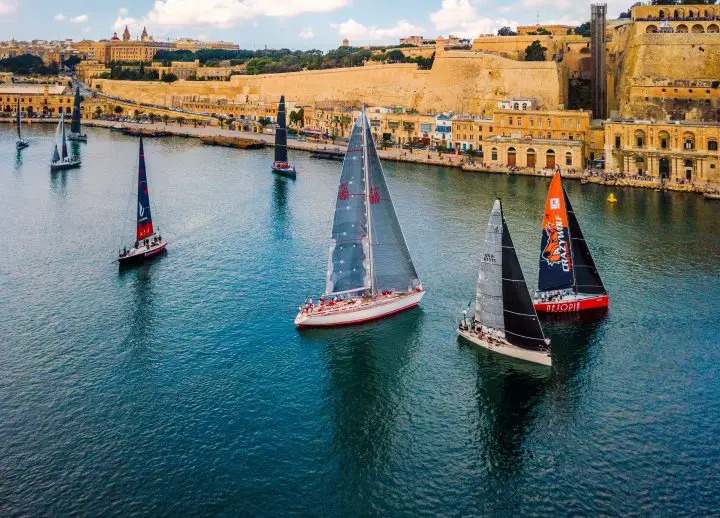
So how do you tell a yacht from other boats? It depends on several factors, but unlike a lot of things in boating, there really isn’t a right or wrong answer. If you want to call your new 20-foot pontoon a yacht or even a ship, go right ahead. However you want to enjoy life, the weather, sun, wind, or adventure, only one thing is for sure. Owning a boat makes it better!
To learn more about other boats and their comparisons, check out: Catamaran vs Pontoon
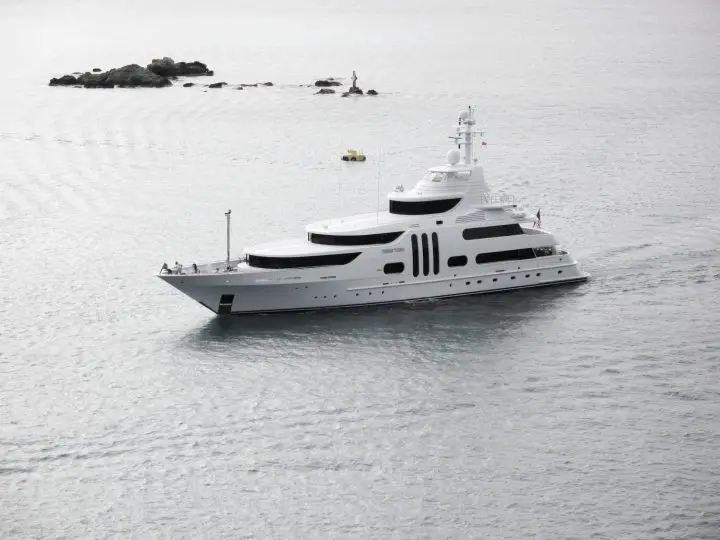
At what point does a sailboat become a yacht?
There is no definitive line where a sailing boat can be called a yacht. To some extent, you can use the word sailboat to describe any private, recreational sailing vessel. This is how the word is used in many parts of the world.
In the United States, the word yacht is usually reserved for crewed luxury vessels. To count as a yacht by this definition, the boat would need to be very high-end, sleek, and expensive. In short, it’s probably not a yacht if it’s under about 80 feet or so.
Are yachts or sailboats more expensive?
Yachts are more expensive, but it’s all in the definition of the word. In the US, the understood definition of a yacht is a luxurious sailboat or motor yacht. More often than not, yachts are big enough to require a professional crew.
On the other hand, a sailboat is any vessel that uses sails for power. So a yacht could be a sailboat, but not all sailboats are yachts. By the US definition, most sailboats are small and far from the lavish luxury you’d find on a yacht. But in some parts of the world, “yacht” is used interchangeably for a sailboat of any value.
Is a 40 foot sailboat a yacht?
The answer depends on where you are from. In parts of the world heavily influenced by British English tradition, the word yacht is often interchangeable with sailboat. If this sounds right, then a 40-foot sailboat could definitely be a yacht.
But in the US, the word yacht is usually reserved for large, lavish, and expensive vessels with professional crews—the types owned by celebrities and the super-wealthy. If this sounds more like your neighborhood, chances are a 40-foot sailboat is just a sailboat. On the other hand, if it doubles or triples in size and gets a crew, it might be bordering on yacht territory.
Is a sailing yacht cheaper than a yacht?
In general, the purchase price of yachts are roughly equal. While sailboats have more rigging and equipment, motor yachts have larger engines, so the prices are closer than you might imagine. There are too many variables to generalize when it comes to operating costs. In general, though, a fast-moving powerboat will always cost more than a slow-moving sailboat due simply to fuel costs.
If you’re thinking about chartering and want to compare the prices of sail versus power, companies like The Moorings Charters allow you to browse various destinations and boats. For example, a one-week charter on a 42-foot sail catamaran in the BVI starts at around $9,400. For comparison, that same charter on their smallest power catamaran, a 43 footer, starts at $11,070.
Matt has been boating around Florida for over 25 years in everything from small powerboats to large cruising catamarans. He currently lives aboard a 38-foot Cabo Rico sailboat with his wife Lucy and adventure dog Chelsea. Together, they cruise between winters in The Bahamas and summers in the Chesapeake Bay.
Yacht vs Sailboat: What's the Difference?
Explore the key differences between yachts and sailboats in our latest blog post. Perfect for travelers deciding on their next nautical adventure.
The world of boats is complicated to decipher because of how many types, models, and brands exist. Yachts and sailboats are two essential types of boats that are immediately recognizable by anyone. With that said, the yacht vs. sailboat debate ultimately comes down to several distinguishing factors between the two.
The main difference between yachts and sailboats is that sailboats have sails and yachts don’t. Sailboats are also smaller than yachts, feature fewer amenities, and cannot move quite as fast. Yachts are also much more expensive to purchase and maintain, and maintenance costs 20% of the initial cost each year which can cost tens of thousands of dollars.
It’s much easier to transport a sailboat than a yacht because yachts have to be shipped on a cargo deck. Conversely, you can attach the average sailboat to a trailer and tow it to a port. Follow along as we highlight the key differences between yachts and sailboats.
What Is The Difference Between a Yacht And a Sailboat?

The main differences between yachts and sailboats come down to size, amenities, and build . They serve the same purpose, but yachts and sailboats differ quite a bit when it comes to design. While not interchangeable, many prospective buyers struggle with whether or not to buy a yacht or a sailboat.
The yacht vs. sailboat debate has been discussed for decades, and it is ultimately subjective. However, many key differences can sway your opinion before you make a big purchase. Let’s take a look at the difference between yachts and sailboats and see why they matter.
Sails are the most immediately clear difference between yachts and sailboats. Sailboats always feature sails, but that’s not usually the case with yachts. The sail on a sailboat helps propel the vessel and is useful whether your boat has an engine or not .
Standard yachts lack sails because it would alter their appearance. Yachts are supposed to look sleek and luxurious which wouldn’t work as well with a sail. With that said, sailing yachts feature sails and are more often used for racing than cruising.
One of the downsides of traditional yachts is that you don’t get the aerodynamic boost that you would get with a sail . If you have a high-powered engine, this isn't a problem, but it will have to work harder without a sail under poor weather conditions.
The average sailboat is smaller than the average yacht. For example, the average yacht measures 78 feet long and the average sailboat measures 30 feet long . Yachts can be as small as 40 feet long or they can even exceed 100 feet long.
The world’s largest yacht measures 511 feet long and it is unsurprisingly owned by a multi-billionaire . Both yachts and sailboats vary in width depending on the floor plan and how many cabins they feature. Sailboats are generally slender because they feature a small galley and don’t typically include a cabin.
A superyacht is defined as a yacht that is 79 feet long or longer. However, you won’t find many superyachts out on the sea because they cost at least $3,000,000 in most cases.
Yachts are almost always much more expensive than sailboats. The difference in cost comes down to the many amenities that yachts are known for as well as the motor and size. Yachts start at $500,000 on the low end, but they can exceed $10,000,000 for superyachts over 79 feet long .
The more expensive a yacht is, the more expensive it will be to maintain because of the fuel demands and part replacements. There is more variety in cost when it comes to sailboats because they are a broad category of vessels. For example, a sailboat with no motor will cost thousands of dollars less than one that is motorized.
A motorized sailboat can cost as much as $250,000 or more whereas one without a motor may only cost $3,500 . Luxury sailboats with cabins can cost $500,000 but without the powerful performance of a yacht. With that said, sailboats cost less to maintain so even buying a high-end vessel may be a worthy investment.
Yachts have a higher capacity than sailboats because of how much bigger they generally are. There are often multiple decks on a yacht which makes it easy to host a large group of guests. Standard yachts can only accommodate 10-12 people, but large superyachts can hold more than double that in some cases .
Sailboats can typically hold 5-10 people, but it depends on the size of the vessel. You can calculate the capacity for a sailboat or yacht by multiplying the length and width and then diving that number by 15. Otherwise, you can simply refer to the capacity as recommended by the manufacturer.
It’s worth noting that boat manufacturers can only provide approximate estimates for capacity. They base the capacity on an average of 150 pounds per person, but that doesn’t apply to everybody.
Yachts are superior to sailboats when it comes to amenities in most cases. Sailboats sometimes feature a few amenities, such as a cabin or bathroom. However, yachts are considered luxury boats, so they are more likely to include special amenities such as built-in speakers and even TVs in some cases .
Some yachts even feature swimming pools and hot tubs, but they come at a premium price. They typically feature at least one deck to accommodate guests and some even feature helicopter pads . You won’t find nearly as many amenities on a sailboat because sailboats are more for practical use.
Larger sailboats may include a private deck and retractable sunshade. Otherwise, there isn’t usually enough space on a sailboat to include luxury amenities such as movie screens and infinity pools.
If you’re looking for a boat with comfortable quarters, then a yacht is ideal for you. Sailboats feature quarters in some cases as well, but yachts specifically emphasize comfort and luxury. Some yachts feature multiple cabins that can be used for lounging and sleeping alike .
You will also find larger cabins in yachts than sailboats which makes them much more comfortable. Yachts also often feature crew quarters because they sometimes require staff to operate the vessel. Sailboats are usually much smaller than yachts, and the cabins are suitably smaller as well.
You won’t likely find many sailboats with crew quarters unless it is a motorized vessel . Many manufacturers let you customize the floorplan and design for a yacht or sailboat. You can add a cabin to a boat that typically wouldn’t feature one, but it will delay how quickly you get it by up to a year or more in some cases.
Performance
Yachts are also faster than sailboats in most cases because of the powerful motor . Sailing yachts offer the best of both worlds because of the aerodynamic boost paired with the motor. Sailboats can still reach high speeds without a motor, especially if the wind is in your favor.
However, sailboats are faster than motorized yachts in some cases and can even reach speeds up to 12 knots or more. Yachts can operate at 10 knots at least, but massive yachts cannot usually maintain a high speed for long. High-performance yachts from bands such as Foners can reach speeds up to 70 knots, but that is rare .
Luxury yachts that measure 30-40 feet long can run at 30 knots in some cases as well. Otherwise, heavy yachts with an underpowered motor may only run at 10-20 knots.
It typically costs more to dock a yacht than a sailboat, but it depends on the size. Marinas charge varying rates to dock based on the location and the size of your boat. Boat length is one of the biggest cost factors, and they typically charge $10-$50 per foot of the vessel .
Yachts and sailboats can be similar in length, but yachts are often longer and wider making them more expensive to dock. Many yachts are considered liveaboard boats which can also add to the cost of docking at a marina. Marinas charge an extra fee if you plan to live on your yacht while docked, and not all of them even allow it .
You will also likely need to pay an extra fee to have your yacht or sailboat pumped at the marina. This is more common with yachts because they almost always feature at least one bathroom, but some sailboats do as well. Pumping may cost as little as $10-$20, but it’s better than having to empty your tank.
Maintenance
Maintenance is a reoccurring cost no matter what type of boat you have. With that said, you will likely need to spend much more to maintain a yacht than a sailboat. Motor sailboats may still require expensive maintenance, but it’s much less than for a yacht.
Yachts require routine maintenance to ensure that the motor and engine can continue to run smoothly. It costs 20% of the buying price per year to maintain the average yacht, and that adds up quickly . Yachts often cost over $1,000,000, so you could potentially spend up to $200,000 per year in fuel and maintenance in that case.
Traditional sailboats only cost an average of $3,500 per year to maintain, but they can cost as little as $1,500. Your maintenance costs may exceed $5,000 per year for a sailboat if it is motorized . Even still, it costs tens of thousands of dollars less per year to maintain the average sailboat than a yacht. It also costs much more to insure a yacht than a sailboat.
Sailboats can typically travel further without needing to stop than yachts. That is because yachts need to refuel which can limit how far you can travel from a port. However, motor sailboats have the same distance limitations as yachts because they rely on fuel.
Traditional sailboats don’t feature motors so they can essentially travel as far as possible until the crew needs to return. Sailing yachts may be able to travel further than standard yachts because of the aerodynamic boost . This can put less stress on the engine which can help save fuel to let you travel further.
Transportation
It’s much easier to transport a sailboat to a port or dock than a yacht. In many cases, you simply cannot trailer a yacht and you need to ship it as deck cargo. You can expect to spend at least $1,000 to ship a yacht as cargo, but it can cost much more for long distances .
Sailboats are easier to transport because you can attach them to a trailer and tow them to a port in most cases. You can tow a sailboat with a trailer as long as it is 22 feet long or smaller. Otherwise, you may need to have your sailboat shipped as cargo like you would need to for a yacht.
Yacht Pros and Cons

Yachts are understandably desirable to many, even if they may seem unattainable. Even still, yachts are complicated just like any type of boat and they have various pros and cons. Let’s take a look at the positive aspects of owning a yacht.
First and foremost, yachts are spacious and comfortable which makes them better than most boats. They almost always feature a large galley and at least one cabin that offers plenty of room. The luxurious appeal of yachts is that they come with many amenities making them akin to a mobile hotel on the water .
Yachts also feature powerful motors that are necessary to move their massive weight. You can fit at least 10 people on a yacht and over 20 on some huge models. This makes them the best boat to take out onto the water if you plan to entertain a large group of people.
- Comfortable cabins
- Plenty of deck space
- Convenient amenities
- Can reach high speeds
The high cost of docking at a marina is one of the biggest downsides of owning a yacht. They are so massive that spending a fortune on docking fees and club memberships is unavoidable. This is especially true if you plan to join a yacht club which can cost $7,000 or more per year depending on where you live.
Another key downside to a yacht is that they are a poor investment. The exorbitant cost of yearly maintenance paired with the depreciating value after using a yacht makes it nearly impossible to turn a profit . It can cost hundreds of thousands of dollars each year to maintain a yacht depending on how much you use it and how much the initial cost was.
- Maintenance costs a fortune
- Expensive to dock
- Requires a lot of fuel
- Needs to be shipped
Sailboat Pros and Cons

Much like yachts, sailboats aren’t without their problems. With that said, sailboats are also incredible vessels and continue to improve with each generation. Let’s take a look at the pros and cons of sailboats.
You can easily maintain a sailboat without spending nearly as much as you would on maintaining a yacht. That is because the engine on a sailboat is much simpler than one on a yacht which makes maintenance easier . You also get a boost from the wind as you move through the water with a sailboat because of how aerodynamic they are.
Another benefit of sailboats is that the engine doesn’t roar loudly likely a yacht does. This helps create a calm atmosphere for everyone on the boat which is essential when you are at sea. Most importantly, sailboats are inarguably much more affordable than yachts so they are easier for the average person to attain.
- Aerodynamic design
- Quiet operation
- Reasonably affordable
- Easy to maintain
One of the biggest downsides of sailboats is that they rely on great weather to operate at the optimal level. This is especially true if your sailboat isn’t motorized or simply has a weak engine that can’t keep up with bad weather. Sailboats are also usually much slower than yachts because their engines are less sophisticated.
They can also be difficult to steer in many cases, especially if you are new to sailing . You will also need to replace the sails several every 10 years or 4,000 hours of use, whichever comes first. Finally, sailboats aren’t known for having great amenities, such consider a yacht if you want luxury features.
- Can’t always reach high speeds
- Doesn’t feature many amenities
- Relies on great weather
- Difficult to steer
- Must replace sails
What Qualifies a Boat To Be a Yacht?

The criteria for a yacht are dubious and frequently, debated, but they typically measure at least 30-40 feet long . Yachts are also almost exclusively luxury boats that feature more amenities than a sailboat, fishing vessel, or pontoon. Most yachts feature cabins, a bathroom, a kitchen, a dinette, and a comfortable galley.
Yachts also typically lack sails, but there are sailing yachts on the market but they are a more recent addition to the world of boats. They also have a unique look that you can recognize right away even if you are unfamiliar with other vessels. Yachts often feature diesel engines that are powerful enough to move such a massive boat, and some of them come with multiple engines .
Can a Yacht Cross The Ocean?
Not all yachts can cross the ocean, but many of them can. It ultimately comes down to the fuel source and what kind of engine your yacht has . Yachts with multiple engines in particular can easily cross the ocean up to 3,000 miles in many cases.
It’s important to check the recommended nautical mileage of your yacht via the manufacturer before you attempt this. Many people live on their yachts, and in this case, supplies are an important factor to consider. It can take over a week to sail 3,000 miles depending on how many stops you make and how fast your yacht is .
In this case, you will need to make sure that your yacht has enough food and supplies to last you for at least a week. Ideally, you should plan a route that will let you stop at ports to refuel, pump your bathroom, and get more supplies to last for the rest of the trip. If this isn’t possible then it’s worth reconsidering and sailing a different route if you’re unsure about your yacht’s capabilities.
Is a Yacht Better Than a Sailboat?
Yachts are better than sailboats if you value amenities and speed . Sailboats don’t always include an engine, but when they do, it’s usually less impressive than a yacht’s engine. However, the sail on a sailboat gives it an aerodynamic boost that yachts simply don’t have.
Yachts are a poor investment compared to a sailboat because of how much they cost to maintain. You may have to spend up to 20% of the initial cost of a yacht per year to maintain the yacht. Overall, yachts and sailboats both have many pros and cons, but sailboats are a more affordable option if you are on a budget.
Kit Evans is a seasoned marine journalist and naval architect, bringing over 20 years of multifaceted experience in the boating industry to his writing and consultancy work. With expertise ranging from boat design and marine surveying to charter operations and vessel restoration, Kit offers unparalleled insights into all aspects of maritime life. When he's not penning articles for top boating publications or hosting his popular YouTube channel, Kit can be found sailing his lovingly restored 1960s Columbia 29 on the Chesapeake Bay, embodying his commitment to both preserving nautical heritage and embracing modern innovations in boating.
Recommended Reads

Best Boat Brands for Leisure: Ranked by a Marine Journalist
From luxurious yachts to versatile day cruisers, navigate the waters of boat buying with insider knowledge and hands-on experience.

The 25 Best Things to Do in Sarasota, FL
From powdery beaches to world-class art, Sarasota blends coastal charm with cultural sophistication for an unexpectedly diverse Florida getaway.

3 Days in Miami: The Perfect Miami Itinerary
Discover sun-soaked beaches, vibrant art scenes, and Cuban-infused culture in this tropical metropolis. Follow this 3-day Miami itinerary for best results!

Top 25 Things to Do in Miami
From art deco glamour to Little Havana's sizzle, Miami serves up a spicy blend of cultures, cuisines and cutting-edge cool.
Trending Reads

15 Best Lobster Boat Tours in Maine
Explore the top 15 lobster boat tours in Maine for an unforgettable experience. Learn to catch lobster, enjoy marine life sights, and more. Ideal for travelers!

How Much Does Freedom Boat Club Cost?
Explore Freedom Boat Club costs state by state! Learn about membership fees, benefits, and why it's a budget-friendly option for boating enthusiasts.

20 Best Liveaboard Marinas in North Carolina
Explore the top 20 liveaboard marinas in North Carolina, perfect for travelers seeking a unique on-water living experience with all amenities included.
Your trusted source for travel guides, tips, and insights since 2020. Empowering adventurers with expert advice for smarter, more rewarding journeys.

Ridetheducks.com is reader-supported. When you buy through links on our site, we may earn an affiliate commission. Learn more
Sailboat vs Yacht
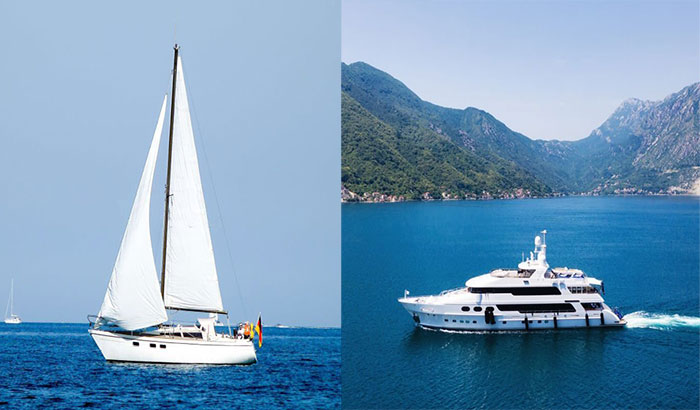
Most people envision a sailboat as a small, private vessel ideal for traveling around lakes and coasts. A yacht, on the other hand, is a much larger and more luxurious sort of sailboat. In fact, a sailboat with a length of more than 40 feet can be considered a yacht.
So, which one should you go with for your next sea adventure? Let’s look at the distinctions between these two types of boats.
What is a Sailboat?
What is a yacht, sailboat vs yacht: main differences.
Sailboats are watercraft that use sails to harness the power of the wind to propel them across the water. Some sailboats can be propelled by electric motors or even paddles, but most rely on sails for movement.
Sailboats have been used for centuries to cross oceans and explore new lands. They are a popular form of transportation today, both for recreation and commercial purposes.\
Sailboats come in a variety of shapes and sizes, from small dinghies to large ocean-going vessels.
| Sailing Dinghies | < 15 feet | Sailing |
| Cruising Catamaran | 25 – over 50 feet | Cruising for extended periods |
| Beach Catamaran | 14-20 feet | Daysailing |
| Cruising Sailboat | 16 – over 50 feet | Large-group cruising |
| Daysailer | 14 – 20 feet | Daisailing |
| Motorsailer | 35 feet | Power and sail cruising |
| Racer-Cruiser | >25 feet | Overnight cruising |
| Racing Sailboats | 20->70 feet | Fast cruising |
However, they all share some common features.
They typically have a flat bottom so they can stand up on their own when they are not sailing, and they have a keel that runs the length of the boat to provide stability.
The sails are made of fabric or plastic and are supported by masts, booms, and yards.
Sailboats also have rudders or steering fins to help them navigate in windy conditions.
The rudder is a small hinged panel at the back of the boat that can be turned left or right to steer the vessel. It is controlled by a tiller, which is a bar attached to the rudder that is used to turn it.
Some sailboats also have keel-mounted rudders, which are more effective than traditional rudders in windy conditions.
The sails on a sailboat are supported by masts, booms, and yards. The mast is the tall pole that holds up the sails, and the boom is the horizontal beam that extends from the mast to the edge of the sail. The yard is a shorter pole that sits perpendicular to the boom and helps to support the sail.
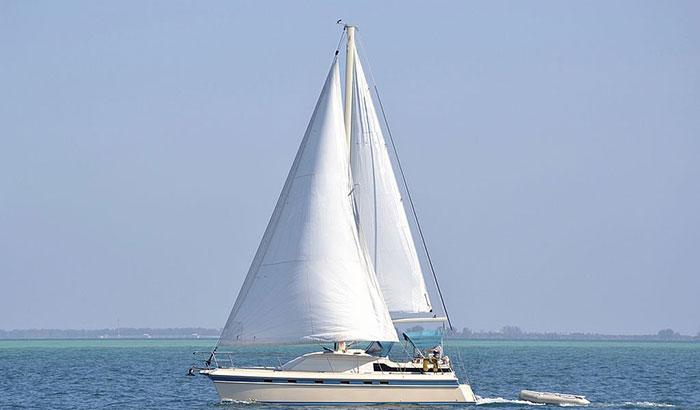
A yacht is a large and luxurious boat that is used for pleasure trips, especially on the ocean. Some features that make yachts so luxurious are their size, the materials they are made out of, the number of decks they have, and the different amenities they offer.
One of the reasons yachts are so popular is because they offer a lot of space. They can be as large as 100 feet long or more, making them perfect for cruising around in style.
Plus, many yachts have multiple decks, each with its own unique features and purposes. This makes sailing on a yacht feel like an event, rather than just a simple boat ride.
Many yachts come equipped with luxurious amenities, such as Jacuzzis, bars, and even cinemas. This means that you can enjoy your time on the water in complete comfort and style.
| Sailing Yacht | Sailing (via sails and wind) | Superyatch > 78 feet long Mega Yachts > 260 feet long |
| Motor Yacht | Sailing (via motors) | |
| Gulet Yacht | Sailing (sails and motors) | |
| Catamaran Yacht | Sailing | |
| Open Yacht and Cruiser | Entertaining and cruising | |
| Luxury Yacht | Entertaining | |
| Sports Yacht | Cruising, fishing, and watersporting |
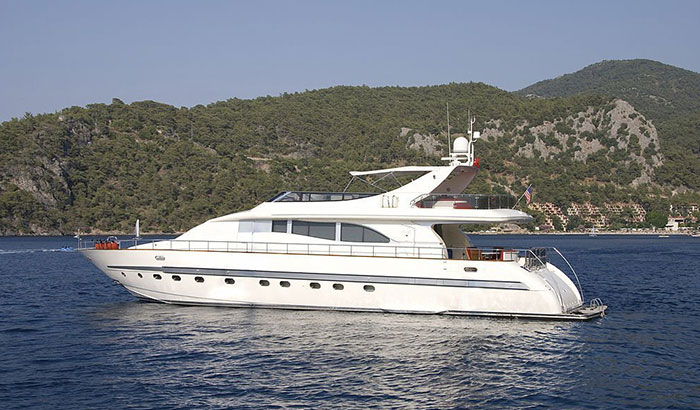
So, what is the distinction between sailboats and yachts? There are numerous characteristics that distinguish the two varieties.
The terms “sailboat” and “yacht” both describe a watercraft, but they have different meanings. A sailboat is a vessel that uses sails to move through the water, while a yacht is a more luxurious type of vessel that is typically used for recreation or racing.
Sailboats have been around for centuries, while yachts are a more recent development. Sailboats are typically made of materials like wood or fiberglass, while yachts are often made of more expensive materials like metal or carbon fiber.
Furthermore, the yacht is produced with advanced technology in terms of navigational systems. It will be much safer when sailing and cruising with a yacht in deep ocean water due to the guidance and warning system incorporated in a yacht. Meanwhile, newer models of sailboats will have better technology than old ones.
Both sailboats and yachts come with safety features, however, you can definitely find more of these features on an expensive yacht.
Sailboats are more commonly used for recreational purposes, while yachts are often used for luxury vacations.
Sail boats, because of their size, can travel well in shallow water such as lakes and rivers. Meanwhile, a yacht is mostly at sea, running more safely when faced with choppy water.
Sailboats typically have one or two masts, while yachts can have up to four. Sailboats also tend to be smaller than yachts, and they usually don’t have as many amenities. Yachts are often equipped with things like air conditioning, televisions, and wine cellars.
A sailboat has a single mast that supports the sails, while a yacht has multiple masts. Sailboats typically have a shorter length and width than yachts, and their hulls are round or V-shaped.
Yachts are often wider and longer than sailboats, with sharply angled bow and stern sections.
Sailboats are typically less expensive than yachts, with the average sailboat costing around $10,000. Yachts can cost anywhere from $50,000 to millions of dollars, depending on their size and features.
Sailboat vs yacht, hopefully, you are no longer confused about these two very different vehicles, offering distinct types of experience on the water.
If you want a simple, affordable watercraft that you can use for recreational purposes, a sailboat is the way to go. If you’re looking for a luxurious vessel that you can use for luxury vacations, a yacht is the better option.
Keep in mind that yachts are typically more expensive than sailboats. However, sailboats and yachts are both great ways to enjoy the water!
Leave a Comment Cancel Reply
Your email address will not be published. Required fields are marked *
Save my name, email, and website in this browser for the next time I comment.

What’s the Difference Between a Sailboat and a Yacht?

Have you ever been out on the open water, feeling the wind on your face as you glide across the waves? If so, then you may have wondered what the difference is between a sailboat and a yacht.
Whether you are a seasoned sailor or a novice looking to dip your toes in the water, understanding the differences between these two types of vessels is essential.
In this article, we will compare sailboats and yachts across several different categories.
We will look at size, cost, amenities, usage, and crew requirements to help you decide which type may be right for you.
Read on to learn more.
Table of Contents
Short Answer
Sailboats and yachts are both types of boats, but there are significant differences between them.
Sailboats are typically smaller, more affordable, and used for recreational sailing.
Yachts are typically much larger, more expensive, and are used for luxury trips and leisure activities.
Sailboats rely on sails and the wind to move, while yachts are powered by motors, though some yachts also have sails.
Yachts also usually have more amenities than sailboats, like larger cabins and more luxurious features.
Overview of Sailboats
Sailboats are the quintessential vessel for recreational sailing.
They come in a variety of sizes, shapes, and designs, all of which are intended to provide an enjoyable experience for those aboard.
While there are exceptions to every rule, sailboats typically have one or two masts, and fewer sails than a yacht.
This simplified design makes them ideal for weekend sailors, beginner sailors, and those looking to enjoy an afternoon of sailing with family and friends.
The key feature of a sailboat is its maneuverability.
This is because the sails create the thrust that propels the boat forward and can be steered by adjusting the sails to catch the wind.
This makes sailboats ideal for sailing in tight spaces or exploring coastal areas, and they are often the preferred vessel of those who enjoy racing.
Due to their lightweight design, sailboats are often more affordable than yachts, making them an attractive option for those looking to get into sailing.
The smaller size also makes them easier to maintain and store, making them a great choice for those looking to enjoy a day out on the water without the hassle of a larger vessel.
Overview of Yachts

Yachts are luxurious vessels that are typically larger than sailboats and are used for both recreational and commercial purposes.
Yachts are equipped with multiple masts and sails, as well as many advanced features such as air conditioning, electric winches, and other amenities.
Yachts are also more expensive than sailboats, and require a larger crew for navigation and maintenance.
Yachts come in a variety of sizes and styles, ranging from small, sailing vessels to large, motorized yachts.
Many yachts are also equipped with luxurious interiors such as state-of-the-art kitchens, comfortable living spaces, and extravagant design elements.
Yachts also often feature modern technology such as advanced navigation systems, satellite communications, and entertainment systems.
Furthermore, yachts can be used for a variety of activities such as fishing, cruising, racing, and even entertaining.
Yachts can also be used for commercial purposes such as transporting goods or providing services.
Yacht charters are also popular, allowing people to rent a yacht for a day or an extended period of time.
Yacht owners are responsible for taking care of their vessel, which includes regular maintenance and repairs.
Yacht owners must also be aware of the laws and regulations that govern them in each country or region they are sailing in.
Additionally, yacht owners must be prepared to handle any emergency situations that may arise while on the water.
Overall, yachts are luxurious vessels that are larger than sailboats and are used for both recreational and commercial purposes.
Yacht owners must also be aware of the laws and regulations that govern them in each country or region they are sailing in, as well as handle any emergency situations that may arise while on the water.
Ultimately, yachts are a great way to enjoy the sea, and provide a unique and luxurious experience.
Size Comparison
When it comes to size, theres no mistaking the difference between a sailboat and yacht.
Sailboats tend to be significantly smaller than yachts, usually ranging from 10-30 feet in length.
Depending on the type of sailboat , they may have one or two masts and a few sails.
On the other hand, a yacht is much larger, with sizes ranging from 30-90 feet in length.
Yachts have multiple masts and a greater number of sails, allowing them to navigate the rougher waters of the open ocean.
Aside from being larger than a sailboat, a yacht also usually features more advanced features that make it more luxurious.
This includes air conditioning, electric winches, and other amenities that make the experience more comfortable.
Additionally, yachts are also more expensive than sailboats due to their size and additional features.
As a result, they require a larger crew for navigation and maintenance.
In conclusion, the main difference between a sailboat and a yacht is size, cost, and amenities.
Sailboats are smaller and typically used for recreational purposes, while yachts are larger, more luxurious vessels that can be used for both recreation and commercial purposes.
Furthermore, yachts have more advanced features like air conditioning, electric winches, and other amenities, and they are also more expensive and require a larger crew for navigation and maintenance.
Cost Comparison

When it comes to cost, sailboats and yachts are two completely different beasts.
Sailboats are typically the more affordable option, with smaller sailing vessels like dinghies and catamarans being available for a few thousand dollars.
Yachts, on the other hand, can cost hundreds of thousands of dollars or even millions, depending on the size, amenities, and features.
Yachts also require a greater investment in terms of crew and maintenance, so they come with a greater financial burden.
If youre looking for a recreational vessel to take out on the open water, sailboats are the more budget-friendly option.
Yachts are more suitable for those who want to use their boat for commercial purposes or luxury cruises, as they are far more expensive and require more upkeep.
In terms of cost, sailboats are the more accessible option, while yachts are the more luxurious and expensive choice.
Amenities Comparison
When comparing the amenities of sailboats and yachts, there are several key differences.
Sailboats typically have limited onboard amenities, such as basic electrical power and a small galley.
They can often be operated with a single person, and are generally used for recreational purposes.
Yachts, on the other hand, have substantially more amenities than sailboats.
These include air conditioning, electric winches, generators, and other luxuries.
Yachts are often much larger than sailboats, and require a larger crew for navigation and maintenance.
Many yachts also have multiple masts and more sails than a sailboat, allowing them to move faster and more efficiently.
Additionally, yachts are typically more expensive than sailboats, and require more upkeep and maintenance.
Ultimately, the main difference between sailboats and yachts lies in the amenities they offer.
Sailboats are typically smaller, simpler vessels used mainly for recreational purposes, while yachts are larger, more luxurious vessels that can be used for both recreational and commercial purposes.
Additionally, yachts have more advanced features, require a larger crew, and are more expensive than sailboats.
Usage Comparison

When it comes to the differences between a sailboat and a yacht, one of the key distinctions is how they are used.
Sailboats are generally used for recreational purposes, such as sailing for leisure and recreational racing.
Yachts, on the other hand, are typically used for both recreational and commercial purposes.
For instance, yachts can be rented out for luxury cruises, chartered for private parties, or used for commercial fishing.
Additionally, yachts can be used for scientific research, marine transportation, or even used as floating hotels.
As such, yachts are much more versatile than sailboats and can be used in a variety of ways.
Crew Requirements
When it comes to crew requirements, there is a stark difference between sailboats and yachts.
Sailboats generally require a smaller crew, as they are typically used for recreational purposes and are not as large as yachts.
On the other hand, yachts require a larger crew, as they are larger, more luxurious vessels that can be used for both recreation and commercial purposes.
For instance, the crew of a yacht may include a captain, a first mate, several deckhands, a mechanic, and a chef.
Additionally, the crew of a yacht must have the skills to operate and maintain the vessel, as well as the knowledge to navigate the waters.
Furthermore, yachts require a larger crew due to the more advanced features they possess, such as air conditioning, electric winches, and other amenities.
Ultimately, the crew requirements for sailboats and yachts are very different, and the size and scope of a boat will determine the size of its crew.
Final Thoughts
In conclusion, sailboats and yachts have many differences, from size and cost to amenities and crew requirements.
Sailboats are smaller and usually used for recreational purposes, while yachts are larger, more luxurious vessels that can be used for both recreational and commercial purposes.
Ultimately, understanding the differences between sailboats and yachts can help you make an informed decision when selecting a vessel.
So, why not go out and explore the seas and experience the difference between these two impressive vessels for yourself!
James Frami
At the age of 15, he and four other friends from his neighborhood constructed their first boat. He has been sailing for almost 30 years and has a wealth of knowledge that he wants to share with others.
Recent Posts
When Was Banana Boat Song Released? (HISTORICAL INSIGHTS)
The "Banana Boat Song" was released in 1956 by Harry Belafonte. This calypso-style song, also known as "Day-O," became a huge hit and remains popular to this day for its catchy tune and upbeat...
How to Make Banana Boat Smoothie King? (DELICIOUS RECIPE REVEALED)
To make a Banana Boat Smoothie King smoothie at home, start by gathering the ingredients: a ripe banana, peanut butter, chocolate protein powder, almond milk, and ice. Blend the banana, a scoop of...
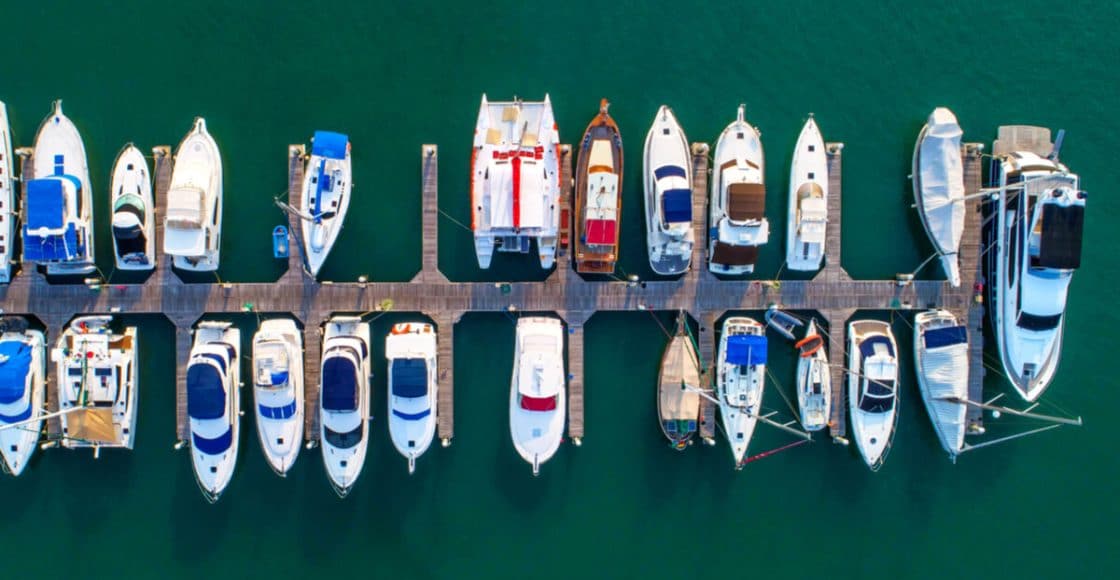
Yachts vs. Boats: What are the Differences?

Table of Contents
Last Updated on April 13, 2022 by Boatsetter Team
Many people use the words “boat” and “yacht” interchangeably, and some lean on the latter to make their ride sound more impressive. But what are the key differences between boats and yachts?
First, let’s look at some broad definitions of a boat, a yacht, and other related vessels.
- “Boat” can refer to just about any kind of vessel— towboat , fishing boat , center console , houseboat , and so on.
- “Dinghy” designates a small boat with a human or wind means of propulsion including a rowing dinghy or sailing dinghy. It also refers to a tender to a bigger boat or yacht.
- “Ship” is a large commercial boat, often used for distance travel and transport of goods or passengers – cruise ship, container ship, etc.
- “Yacht” is typically a larger boat with luxury amenities used as a recreational vessel— motor yacht , sailing yacht .
- “Superyacht” is a large yacht and is often also called a mega yacht . The delineation used to be at 80-feet but again, with today’s size creep, anything under 100 feet would just simply be called a yacht.
So, yacht or boat? Let’s dive deeper into the elements that differentiate a boat from a yacht.
Own a Boat or a Yacht? Learn How to Offset the Cost of Ownership by Listing on Boatsetter
Size of the Vessel
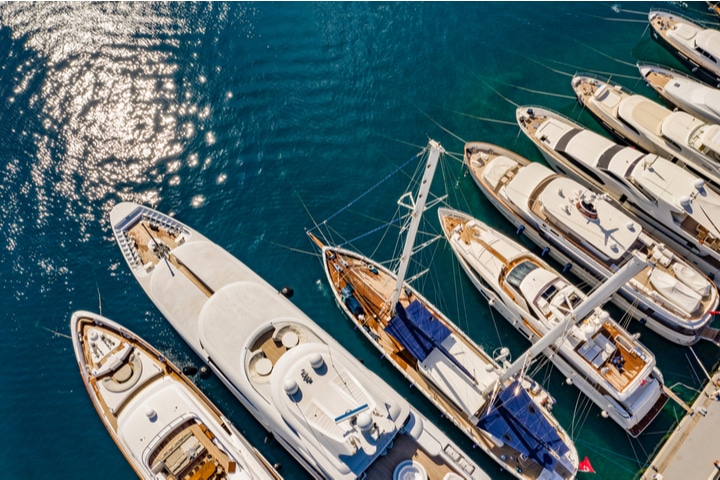
Some place a hard line at 35 feet. Below that, you have a boat and above, it’s a yacht. However, that’s an artificial differentiator.
Just 30 years ago, a 30-foot boat was considered large and could have been a yacht but as recreational boats grow longer, the term yacht has been pushed up the scale.
That said, a well-kept 40-foot boat designed for recreation can technically still be called a yacht (although larger vessels are likely to cost more, price isn’t a good indicator of yacht status primarily because it fluctuates with brand, age, and amenities).
Check out local yacht rentals near you to understand how size plays a difference.
What it’s Used For
A yacht is a vessel designed for recreational purposes. It generally operates on open waters (rather than small lakes or rivers) and has accommodations for overnight guests.
A cruise ship, on the other hand, accommodates a large number of passengers in a commercial setting whereas a yacht carries a smaller number (of paying or non-paying) passengers for private recreation.
Onboard Technology
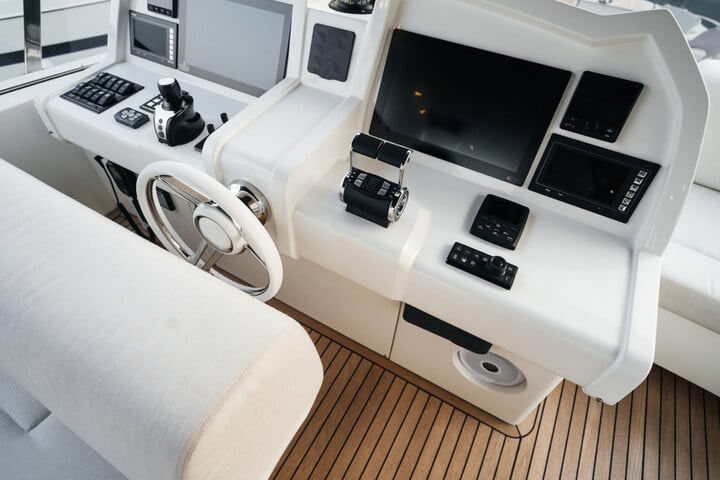
Advanced technology for navigation, communications, and system operation as well as redundant systems for safety can be found on a yacht that is likely to venture farther.
Again, there are caveats because today’s towboats that are fun day boats also feature technology such as GPS and digital switching that integrates many electrical and electronic features.
Propulsion Types
This is a tricky one. “Yacht” comes from the Dutch word “jaght” which referred to a sailing vessel that was used by the navy to capture pirate ships and later for recreation by the affluent.
Today, a yacht can be a large sailing vessel or a motor yacht. All larger yachts will have a motor for propulsion whether they have sails or not. Sailboats by design have smaller motors so trying to put a horsepower minimum on yacht propulsion is simply inaccurate.
Some define a yacht as having multiple crews to operate the vessel and tend to passengers or guests. The larger the yacht, the more crew will be required to navigate, maintain and service the vessel. That said, a couple who owns a 50-footer can call their boat a yacht although it’s owner-operated.
Luxury and Amenities
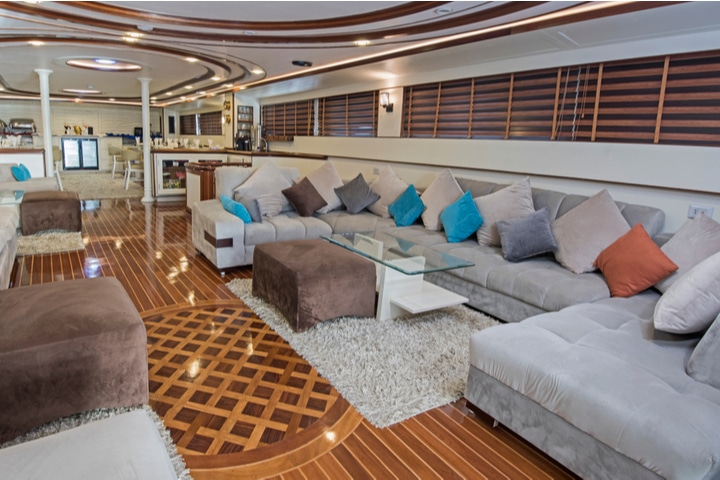
This is perhaps the best measure of a yacht. If the vessel offers accommodations, a galley , a head , and is luxurious in its presentation, it’s most likely a yacht.
That said, there are lots of center console fishing boats and towboats that are pretty nicely equipped these days and they wouldn’t be called a yacht.
All yachts are boats, but not all boats are yachts—and the lines are blurry. The word yacht elicits images of posh seafaring experiences while a boat evokes ideas of fun and perhaps work. Do some research to learn what size and type of boat or yacht is best for you .
To a degree, the point at which a boat becomes a yacht is in the ear of the beholder but if you focus on size, amenities, and the type of use, you’ll be able to discern the difference. Then all that remains is to find a way to spend time and have fun on any kind of vessel.
Browse All Available Boat & Yacht Rentals Across the Globe

Zuzana Prochazka is an award-winning freelance journalist and photographer with regular contributions to more than a dozen sailing and powerboating magazines and online publications including Southern Boating, SEA, Latitudes & Attitudes and SAIL. She is SAIL magazines Charter Editor and the Executive Director of Boating Writers International. Zuzana serves as judge for SAIL’s Best Boats awards and for Europe’s Best of Boats in Berlin.
A USCG 100 Ton Master, Zuzana founded and manages a flotilla charter organization called Zescapes that takes guests adventure sailing at destinations worldwide.
Zuzana has lived in Europe, Africa and the United States and has traveled extensively in South America, the islands of the South Pacific and Mexico.
Browse by experience

Explore articles

Boatsetter's Holiday Photo Contest: Owner Edition

Fishing in Fort Lauderdale Guide
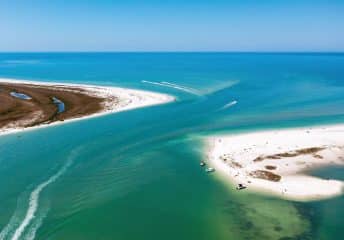
Caladesi Island Boating Guide: Everything You Need to Know

Memorial Day Sail: Trending Destinations & Unique Boats for an Epic Long Weekend
Types of Sailboats: Essential Guide for Every Sailor
Sailboats have been an essential part of human history, contributing to exploration, trade, and leisure. With a myriad of designs and sizes, these versatile vessels cater to various purposes and preferences. The defining characteristics of sailboats come from their rigging, sails, and hull design.
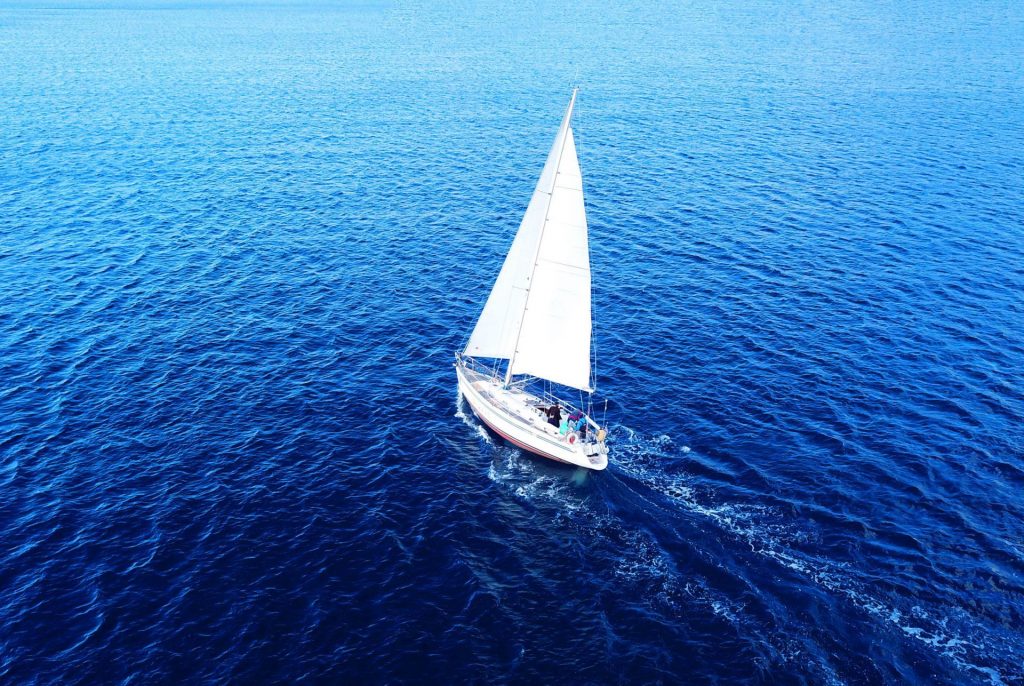
The basics of sailboat design play a significant role in the classification and function of these vessels. Hull shapes, keel types, and construction materials contribute to the speed, stability, and maneuverability of sailboats. Additionally, rigging and sails come in various shapes and sizes, which influence sailing performance and handling.
Key Takeaways
- Sailboats are classified by hull design, rigging, and sails that serve specific purposes.
- Designs and materials have a direct impact on the performance and handling of sailboats.
- A wide range of sailboat types exists, which cater to different needs and preferences.
Basics of Sailboat Design
Sailboats come in various shapes and sizes, designed for different purposes and sailing conditions. One can classify sailboats based on hull types, keel types, and mast configurations. This section will briefly discuss these basic components of sailboat design.
There are mainly two types of hulls: monohull and multihull.
- Monohull : This is the traditional and most common type of sailboat hull. It consists of a single hull, providing stability through the use of a keel or centerboard. Monohulls come in various shapes and sizes, suitable for various sailing conditions.
- Catamaran : Catamarans have two parallel hulls of equal size, offering increased stability and speed compared to monohulls. They are commonly used for cruising and racing.
- Trimaran : Trimarans have three hulls, with a larger central hull and two smaller outrigger hulls. This design offers even more stability and speed than catamarans.
The keel is an essential component in sailboat design, helping with stability and performance. There are various keel types, including:
- Full keel : This traditional design features a long and wide keel that extends along the boat's bottom. It offers good tracking and stability but sacrifices speed and maneuverability.
- Fin keel : Fin keels are shorter and deeper than full keels, providing a better combination of stability and maneuverability. These are common in modern monohull sailboats.
- Bulb keel : A bulb keel features a fin keel with a heavy bulb at the bottom, which concentrates the boat's weight, increasing stability and performance in rough conditions.
- Swing keel or centerboard : Swing keels and centerboards can be raised or lowered, allowing the boat to adapt to different water depths and sailing conditions. They are common in smaller boats and racing sailboats.
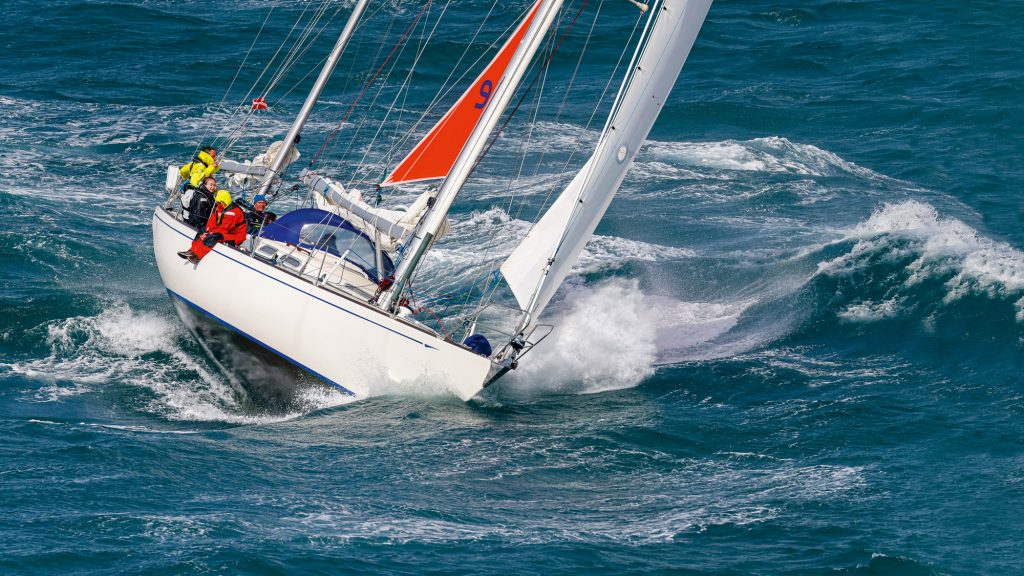
Mast Configuration
The mast configuration affects the sail plan and overall performance of a sailboat. Some common mast configurations include:
- Sloop : This is the most popular mast configuration and features a single mast with a mainsail and a headsail. The simple design makes it easy to handle and suitable for various sailing conditions.
- Cutter : Similar to the sloop, the cutter also has a single mast but carries two headsails, providing more sail area and better performance in heavy weather.
- Ketch : A ketch configuration has two masts: a taller main mast and a shorter mizzen mast. This design offers more flexibility in sail combinations and better balance in different sailing conditions.
- Yawl : Similar to a ketch, a yawl also features two masts but the mizzen is located further aft and is smaller. This design provides better balance and control, particularly in downwind sailing scenarios.
In conclusion, the basics of sailboat design involve selecting the appropriate hull type, keel type, and mast configuration for the desired sailing performance and conditions. Understanding these concepts can help sailors make informed decisions when choosing a sailboat or planning their sailing adventures.
Rigging and Sails
When it comes to sailboats, the rigging and sails play a crucial role in the boat's overall performance and capabilities. This section will briefly cover popular rig types and sail types seen on different sailboats.
There are several types of rigs commonly found on sailboats:
- Sloop : Sloops are the most common type of rig found on modern sailboats. They have a single mast with a mainsail and a single headsail, typically a genoa or jib.
- Ketch : Ketches have two masts, with the main mast taller than the mizzen mast situated aft. They carry a mainsail on the main mast and a mizzen sail on the mizzen mast. Ketches benefit from easier handling and reduced sail area under strong winds.
- Yawl : Similar to ketches, yawls have two masts, but the mizzen mast is smaller and sits further aft, behind the rudder post. Yawls are often chosen for their graceful appearance and improved balance.
- Schooner : Schooners have two or more masts, with the aft mast(s) typically taller than the forward mast(s). Schooners can handle more sails, offering increased sail area for better performance, especially downwind.
- Catboat : Catboats are single-masted sailboats with a single, large mainsail and no headsails. They have a wide beam, which provides stability and ample space for passengers.
- Cutter : Cutters are similar to sloops but carry two headsails, usually a jib and staysail. Cutters may have multiple headsails for increased versatility in various wind conditions.
In addition to the types of rigs, there are also several types of sails used on sailboats, including:
- Mainsail : The primary sail attached to the back of the main mast. It is typically raised on a track or luff groove and managed by a combination of halyard, sheet, and boom vang.
- Genoa : A large triangular sail that overlaps the mainsail, typically used in light winds to provide additional surface area for better performance.
- Jib : A smaller, non-overlapping triangular sail attached to the forestay. Jibs are easier to manage than genoas and are used in a variety of wind conditions.
- Spinnaker : A large, lightweight sail used primarily for downwind sailing . Spinnakers are often brightly colored and shaped like a parachute to catch wind efficiently.
- Staysail : A smaller sail typically used in cutter rigs, positioned between the main mast and the forestay. Staysails provide additional sail area and versatility in varied wind conditions.
Understanding the relationship between sail and rigging can help sailors optimize the performance of their sailboats. With various options for rig types and sail types, each sailboat can be configured to meet the unique needs of its skipper and crew.
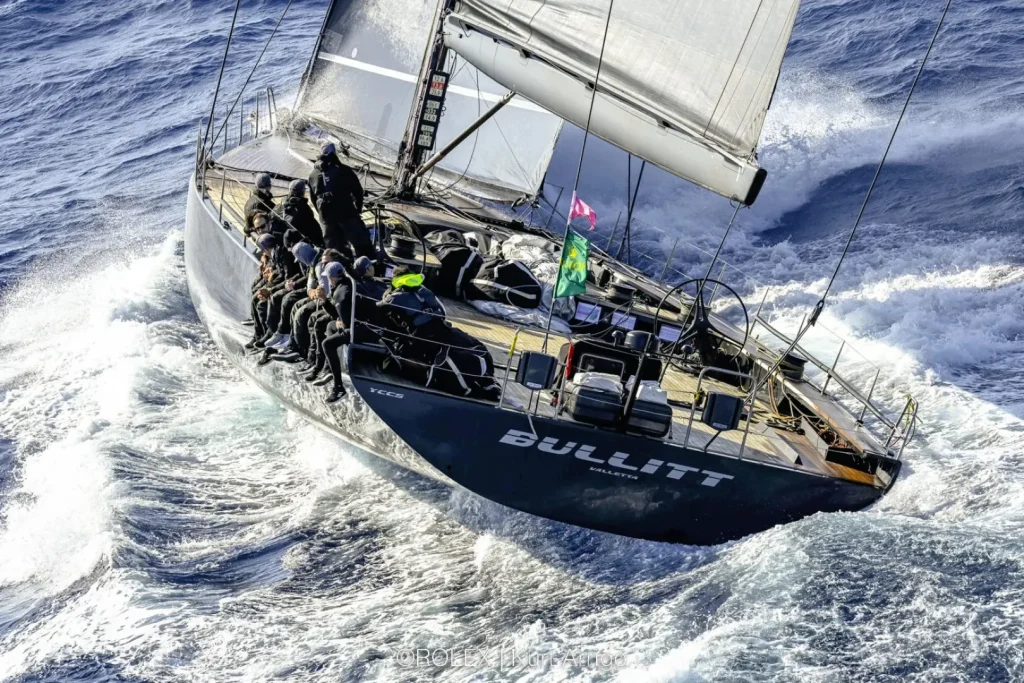
Classes and Types of Sailboats
Monohulls are the most common type of sailboats, consisting of a single hull that provides stability and balance. They come in various sizes and designs, depending on their intended use. Some popular monohull sailboats include the Optimist , Finn, and Sunfish, which are frequently used for racing and recreational sailing. Monohulls tend to have a deeper draft, requiring more water depth than their multi-hull counterparts.
Multihulls, also known as multi-hull sailboats, are a more modern innovation in sailing. They feature two or more hulls connected by a frame or bridgedeck. This design offers increased stability and speed over monohulls. Some common types of multihulls are catamarans (with two hulls) and trimarans (with three hulls). Due to their wider beam and shallower draft, multihulls are particularly suitable for cruising in shallow waters and provide more living space on board.
One-Design Sailboats
One-Design sailboats are a specific class of racing sailboats in which all boats are built to the same design specifications, ensuring that the competition focuses on the skill of the sailor rather than the design of the boat. These boats must adhere to strict rules and standards, with minimal variations allowed in terms of hull shape, sail area, and rigging. Some popular one-design sailboats include the Enterprise and the aforementioned Optimist and Finn sailboats.
Dinghies and Skiffs
Dinghies and skiffs are small, lightweight sailboats that are often used for sailing classes, short-distance racing, or as tenders to larger boats. Dinghies usually have a single mast with a mainsail and sometimes a small jib. Some popular types of sailing dinghies include the Optimist, which is specifically designed for children, and the versatile Sunfish sailboat. Skiffs, on the other hand, are high-performance sailboats primarily used for racing. They have a larger sail area relative to their size and typically include features such as trapezes and planing hulls, which allow for faster speeds and greater maneuverability.
In conclusion, there are various classes and types of sailboats, each with its own unique features and characteristics. From the simplicity of monohulls to the stability and speed of multihulls, and from the fair competition of one-design sailboats to the excitement of dinghies and skiffs, there is a sailboat to satisfy every sailor's preferences.
Sailboat Size and Use
When exploring the world of sailboats, it's important to understand their different sizes and purposes. Sailboats can be categorized into three main types, each with unique characteristics and uses: Day Sailers , Racing Sailboats, and Cruising Sailboats .
Day Sailers
Day Sailers are small sailboats typically ranging from 10 to 24 feet in length. These boats are perfect for short sailing trips and are easy to maneuver for beginners. They have limited accommodations on board, providing just enough seats for a small group of people. Some popular day sailer models include the Laser, Sunfish, and Flying Scot. Lightweight and agile, Day Sailers are often used for:
- Recreation: casual sailing or exploring nearby waters with family and friends
- Training: beginner sailing lessons or practicing sailing techniques
- Competition: local club races or interclub regattas
Racing Sailboats
Racing Sailboats are designed to provide maximum speed, maneuverability, and efficiency on the water. Sizes may vary greatly, from small dinghies to large yachts. Key features of racing sailboats include a sleek hull shape, high-performance sails, and minimalistic interiors to reduce weight.
Career racers and sailing enthusiasts alike participate in various types of racing events , such as:
- One-design racing: all boats have identical specifications, emphasizing crew skill
- Handicap racing: boats of different sizes and designs compete with time adjustments
- Offshore racing: long-distance racing from one point to another, often around islands or across oceans
Cruising Sailboats
Cruising Sailboats are designed for longer journeys and extended stays on the water. They typically range from 25 to 70 feet in length and provide comfortable accommodations such as sleeping cabins, a galley, and storage spaces for supplies and equipment. Sailing cruisers prioritize stability, comfort, and durability for their voyage.
Here are some common types of cruising sailboats:
- Cruiser-racers: These boats combine the speed of a racing sailboat with the comfort and amenities of a cruising sailboat. They are ideal for families or sailors who enjoy participating in racing events while still having the option for leisurely cruises.
- Bluewater cruisers: Designed for handling the world's most demanding ocean conditions, bluewater cruisers are built with a focus on sturdy, self-reliant sailboats that can withstand long-distance voyages and challenging weather conditions.
- Multihulls: Catamarans and trimarans are gaining popularity in the cruising world for their typically more spacious interiors and level sailing characteristics. With two or three hulls, multihulls offer high levels of stability and speed for a comfortable cruising experience.
Understanding the differences between various sailboat types will help potential sailors select the perfect vessel for their sailing goals, skills, and preferences. Day Sailers, Racing Sailboats, and Cruising Sailboats each have their unique features, catering to distinct uses and sailing experiences.
Advanced Sailboat Features
Sailboats have evolved over time, and many advanced features have been developed to enhance performance and safety. In this section, we will discuss some of the key advanced features in modern sailboats, focusing on performance enhancements and safety/navigation.
Performance Enhancements
One critical component that impacts a sailboat's performance is the type of keel it has, which affects stability, resistance, and maneuverability . There are several kinds of keels such as fin keel , wing keel , and bulb keel . Fin keels offer low drag and high efficiency, making them suitable for racing sailboats. On the other hand, wing keels provide better stability at low speeds, while bulb keels provide a lower center of gravity to enhance overall stability and comfort during long voyages.
Another feature that contributes to a sailboat's performance is its sails and rigging. The jib is a triangular sail at the front of the boat, which helps improve its upwind performance. More advanced sailboats use a combination of shrouds , which are the supporting cables running along the sides of the boat, and stays , the cables that help hold the mast in place, to create a stable and efficient rigging system.
A sailboat's performance can also be influenced by the presence of a centerboard or daggerboard , which can be adjusted to optimize stability, maneuverability, and speed. When racing or navigating in shallow waters, retractable centerboards and daggerboards are particularly useful as they provide better performance and versatility.
Safety and Navigation
Safety and navigation onboard a sailboat relies on a combination of advanced gear and equipment. A modern sailboat is usually equipped with:
- GPS and chartplotters to assist with navigation and planning routes
- VHF radios for communication with other vessels and authorities
- Radar to detect obstacles, weather systems, and other vessels
- AIS (Automatic Identification System) which helps monitor nearby vessel traffic
The design of a sailboat's hull, rigging, sails, and hardware also contribute to its safety. The boom , the horizontal pole that extends the sail, should be properly secured and designed to avoid accidents while sailing. The keel , whether it's a fin, wing, or bulb keel, plays a vital role in the overall stability and safety of the sailboat. The choice of keel should be based on the intended use of the sailboat and the prevailing sailing conditions.
In summary, advanced sailboat features significantly improve the performance, safety, and navigation capabilities of modern sailboats. Innovations in keel design, rigging systems, and onboard navigational equipment have undoubtedly contributed to the overall enjoyment and safety of sailing.
Sailboat Ownership
Buying Considerations
When considering buying a sailboat , it is important to understand the different types of sailboats available and the purpose each serves. Sailboats can be broadly categorized into three types:
- Racing sailboats: Designed for speed and performance, with minimalistic interiors and advanced sail systems.
- Cruising sailboats: Built for comfort and longer trips, featuring more spacious interiors and amenities.
- Daysailers: Smaller, easy-to-handle boats that are often used for short trips and recreational sailing.
Prospective boat owners should consider factors such as boat size, type, budget, and intended use (solo vs. family sailing, charter operations, etc.). It's also essential to evaluate the availability of necessary gear and the level of experience required to handle the chosen sailboat.
Maintenance and Upkeep
Sailboat ownership involves maintenance and upkeep to ensure the boat remains functional, safe, and holds its value. Some common maintenance tasks include:
- Hull cleaning and inspection: Regularly inspect the hull for damages and clean off any growth to maintain performance and fuel efficiency.
- Antifouling paint: Apply antifouling paint to prevent marine organisms from attaching to the hull, which can negatively impact the boat's performance.
- Engine maintenance: Check and replace engine oil, inspect cooling and fuel systems, and clean or replace air filters.
In addition to regular maintenance, sailboat owners should also be prepared to replace or repair critical systems and components, such as:
- Sails: Monitor the condition of your sails and replace them as needed to maintain performance and safety.
- Rigging: Regularly inspect and maintain the standing and running rigging, and replace worn or compromised parts.
- Electronics and instruments: Ensure navigation systems, radios, and other electronic equipment are functioning properly.
Taking proper care of a sailboat can be time-consuming, and some owners may choose to charter their boats when not in use as a way to offset ownership costs. Others may opt for hiring professionals to manage routine maintenance, particularly when sailing solo or with limited sailing experience.
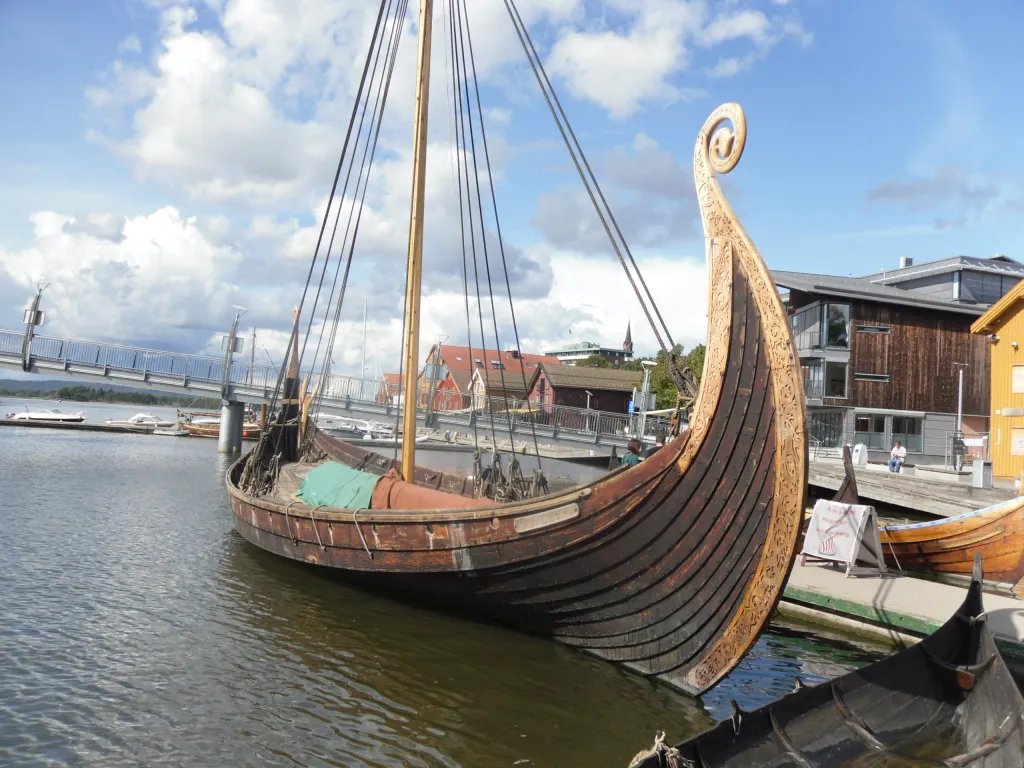
Historical and Special Sailboats
Tall ships and gaffers.
Tall Ships are large, traditionally rigged sailing vessels with multiple masts, typically square-rigged on at least one of their masts. Some examples of these ships include the clipper, brig, and square-rigged vessels. The clipper is a fast sailing ship known for its sleek hull and large sail area, while the brig features two square-rigged masts. Square-rigged ships were known for their impressive sail area and could cover large distances quickly.
Gaffers are a subset of historical sailing vessels with a gaff mainsail as their primary sail type. This gaff-rig is characterized by a spar (pole) that extends the top edge of the mainsail, giving it a quadrilateral shape to optimize wind coverage. Gaff mainsails were commonly used in England and influenced the development of other sailing vessels.
Classic and Antique Sailboats
Classic and antique sailboats refer to older, traditionally designed sailing vessels that have been preserved or restored. They often feature wooden construction and showcase a variety of rigging types, including gaff rigs and square rigs. These historical sailboats have unique designs, materials, and techniques that have since evolved or become rare.
Here are some examples of antique and classic sailboats:
- Sloop : A single-masted sailboat with a Bermuda rig and foresail
- Cutter : A single-masted vessel with a similar rig to the sloop, but with additional headsails for increased maneuverability
- Ketch : A two-masted sailboat with a smaller mizzen mast aft of the main mast
In summary, historical and special sailboats encompass a wide range of vessel types, from large, multi-masted tall ships to smaller, single-masted gaffers and classic sailboats. These vessels reflect the rich maritime history and the evolution of sailing techniques and designs over time.
Sailboat Culture and Lifestyle
Sailboat culture and lifestyle encompass a variety of aspects including racing events, leisurely cruising, and exploring new destinations. The main types of sailboats include racing yachts, cruising sailboats, and motorsailers, each offering a unique experience for sailors.
Regattas and Racing Circuits
A popular aspect of sailboat culture involves participating in regattas and racing circuits . These events create a competitive atmosphere and develop camaraderie among sailors. Racing sailboats are specifically designed for speed and agility , and sailors often team up to compete in prestigious races such as the Rolex Sydney Hobart Yacht Race or the America's Cup. Yacht clubs play an essential role in cultivating this competitive sailing environment.
Sailboat Charter and Tourism
Another facet of sailing culture is the sailboat charter and tourism industry, which allows people to experience the cruising lifestyle without owning a sailboat. Charters are offered for various types of sailboats, from family-sized cruising vessels to luxurious superyachts . Yacht sailing provides tourists with a unique travel experience, as they can explore diverse destinations, immerse themselves in local cultures, or simply relax on the open water.
Cruising sailboats are designed to provide comfortable living spaces and amenities, making them perfect for longer journeys or exploring remote destinations. Motorsailers, on the other hand, are equipped with both sails and engines, offering versatility and convenience for sailors.
Some popular sailing destinations include the Caribbean, Mediterranean Sea, and the South Pacific. These regions offer beautiful scenery, rich cultural experiences, and ideal sailing conditions.
The sailboat culture and lifestyle attract individuals who enjoy adventure, exploration, and camaraderie. From competitive racing events to leisurely cruising vacations, sailing offers diverse experiences that cater to a wide range of interests.

Frequently Asked Questions
What are the distinguishing features of different sailboat classes?
There are various sailboat classes, each with its own distinguishing features. Monohulls, for example, are the most common type of sailboat and have a single hull. Multihulls, such as catamarans and trimarans, have two or three hulls, respectively. These differences in hull design often affect the boat's stability, speed, and maneuverability.
Which sailboat types are best for novice sailors?
Novice sailors often benefit from starting with smaller, more manageable boats. Sailing dinghies and daysailers are popular choices due to their simple rigging and ease of handling. These boats typically have a single mast and a limited number of sails, making them ideal for beginners to learn sailing basics.
What are common types of small sailboats ideal for day sailing?
For day sailing, small sailboats such as sailing dinghies, day sailers, and pocket cruisers are ideal options. These boats usually range between 12 and 25 feet in length and offer simplicity, ease of handling, and portability. Examples of common day sailing boats include the Sunfish, Laser, and O'Day Mariner.
How do the purposes of various sailboat types vary?
Sailboats serve different purposes based on their design, size, and features. Daysailers and dinghies are ideal for short trips, sailing lessons, and casual outings. Racing sailboats, with their lighter weight and streamlined design, are built for speed and competition. Cruising sailboats, on the other hand, are designed for longer voyages and often include living quarters and additional amenities for comfortable onboard living.
What is considered the most popular class of sailboat for recreational use?
The most popular class of sailboat for recreational use often varies depending on individual preferences and local conditions. However, monohulls are commonly preferred due to their widespread availability, versatility, and affordability. Within the monohull class, boats like the Sunfish, Laser, and Catalina 22 are popular choices for their ease of use and adaptability to various sailing conditions.
Could you describe a sailing dinghy designed for two people?
A two-person sailing dinghy typically has a simple rig with a single mast and one or more sails, making it easy to handle for both experienced and novice sailors. The RS Venture , for example, is a popular choice for two-person sailing. It features a spacious cockpit, durable construction, and simplicity in its rigging and control systems. These characteristics make it an excellent option for recreational sailing, training, and even racing.
Related Articles
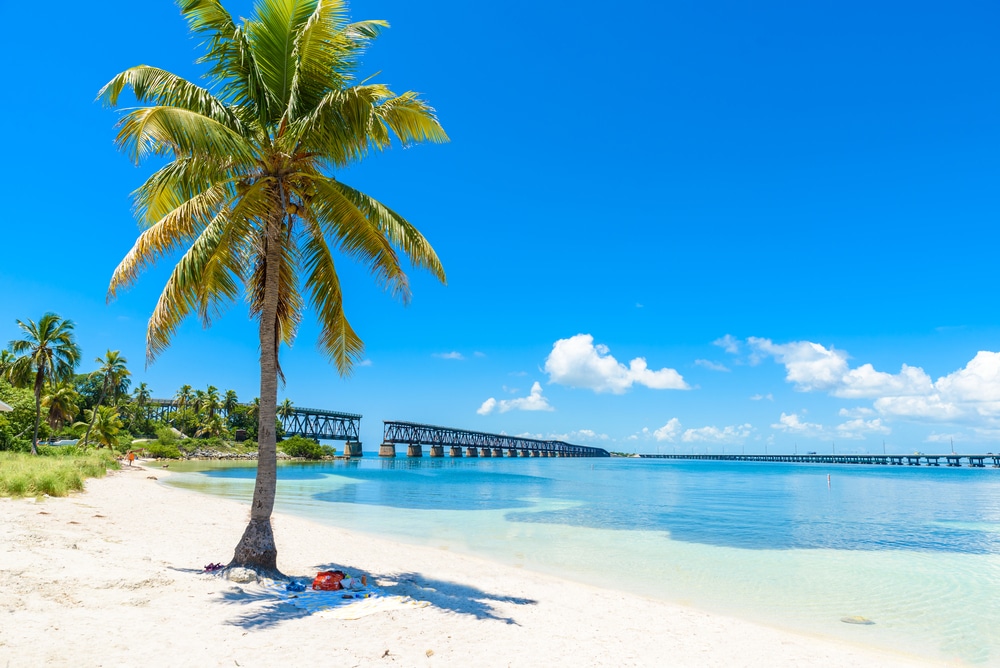
Bahia Honda State Park: Discovering Florida's Pristine Beaches and Natural Beauty
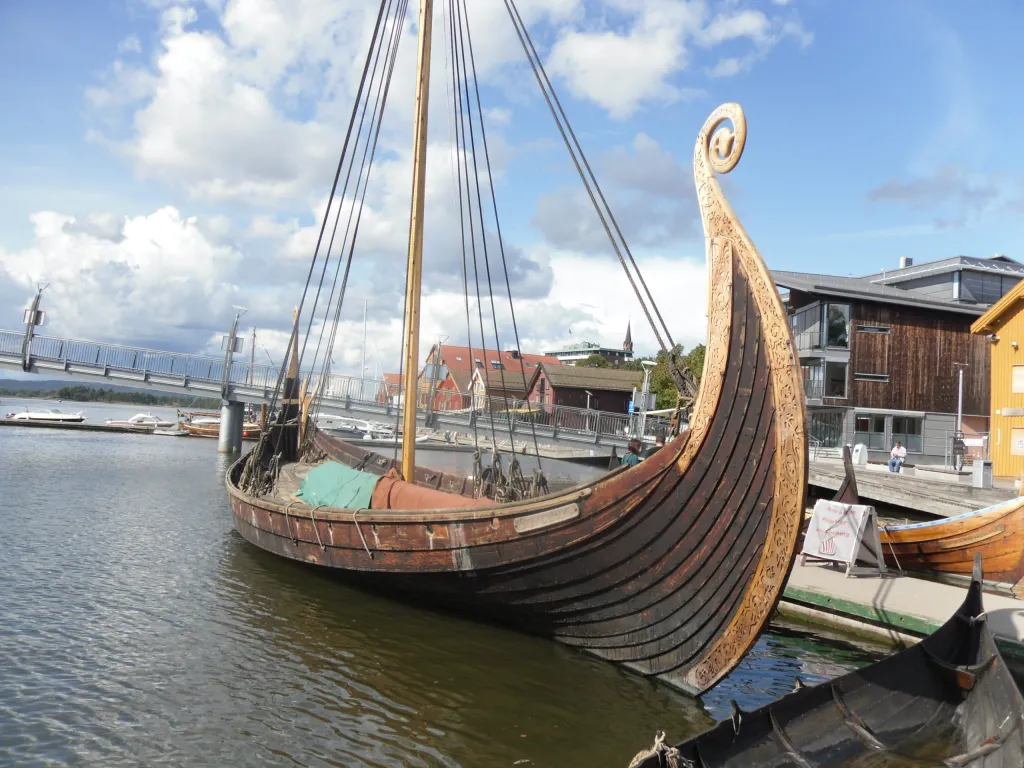
Oseberg Viking Ship: Unveiling the Splendor of Norse Maritime Heritage

Top 5 Lund Boat Models 2024: Best Picks for Every Angler

Fishing Boats for Sale: Expert Guide to Best Picks 2024
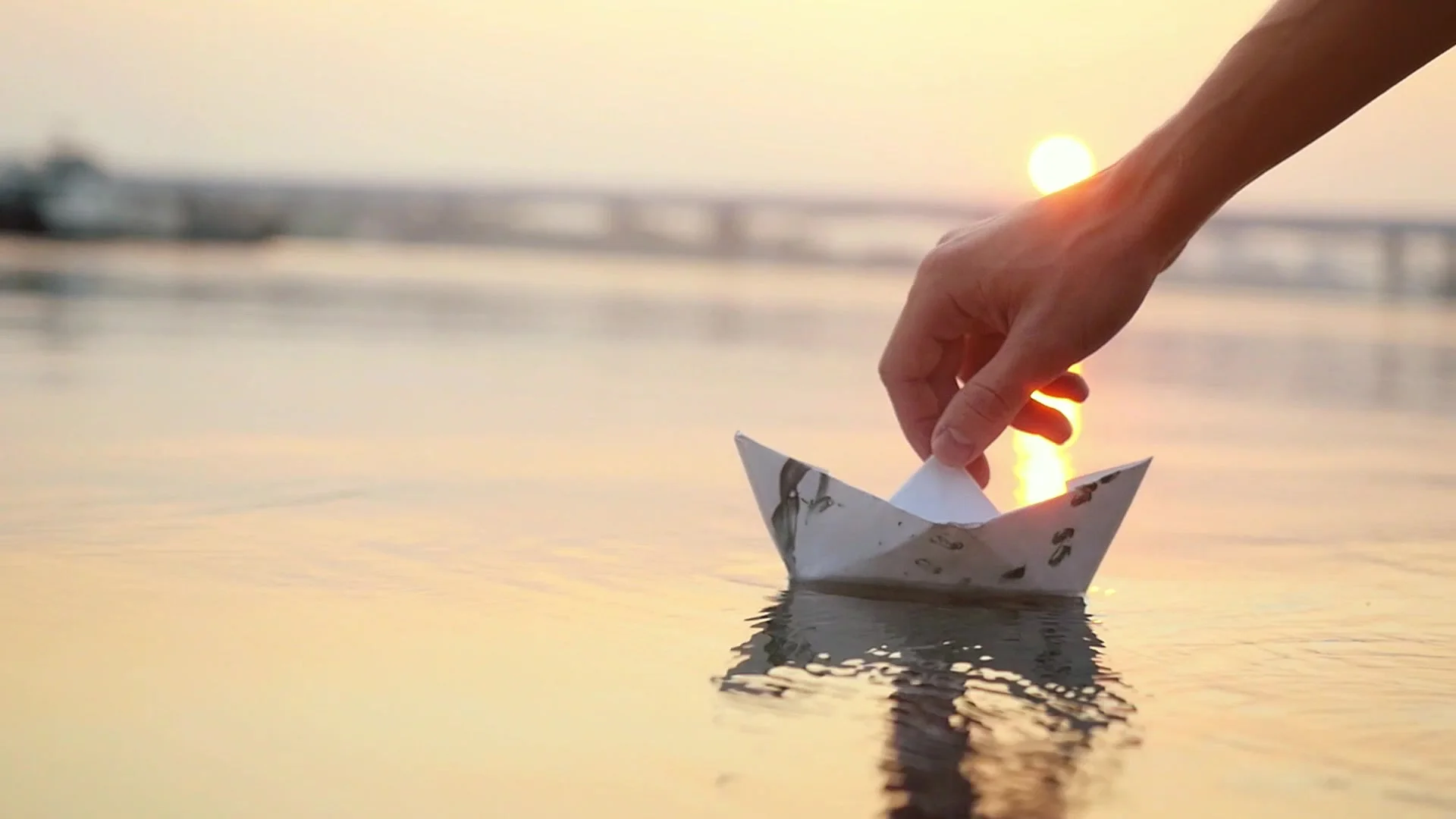
How to Make a Paper Boat: Easy Step-by-Step Guide

Bilge Pump - Boaters Need to Know: Essential Tips for Optimal Performance
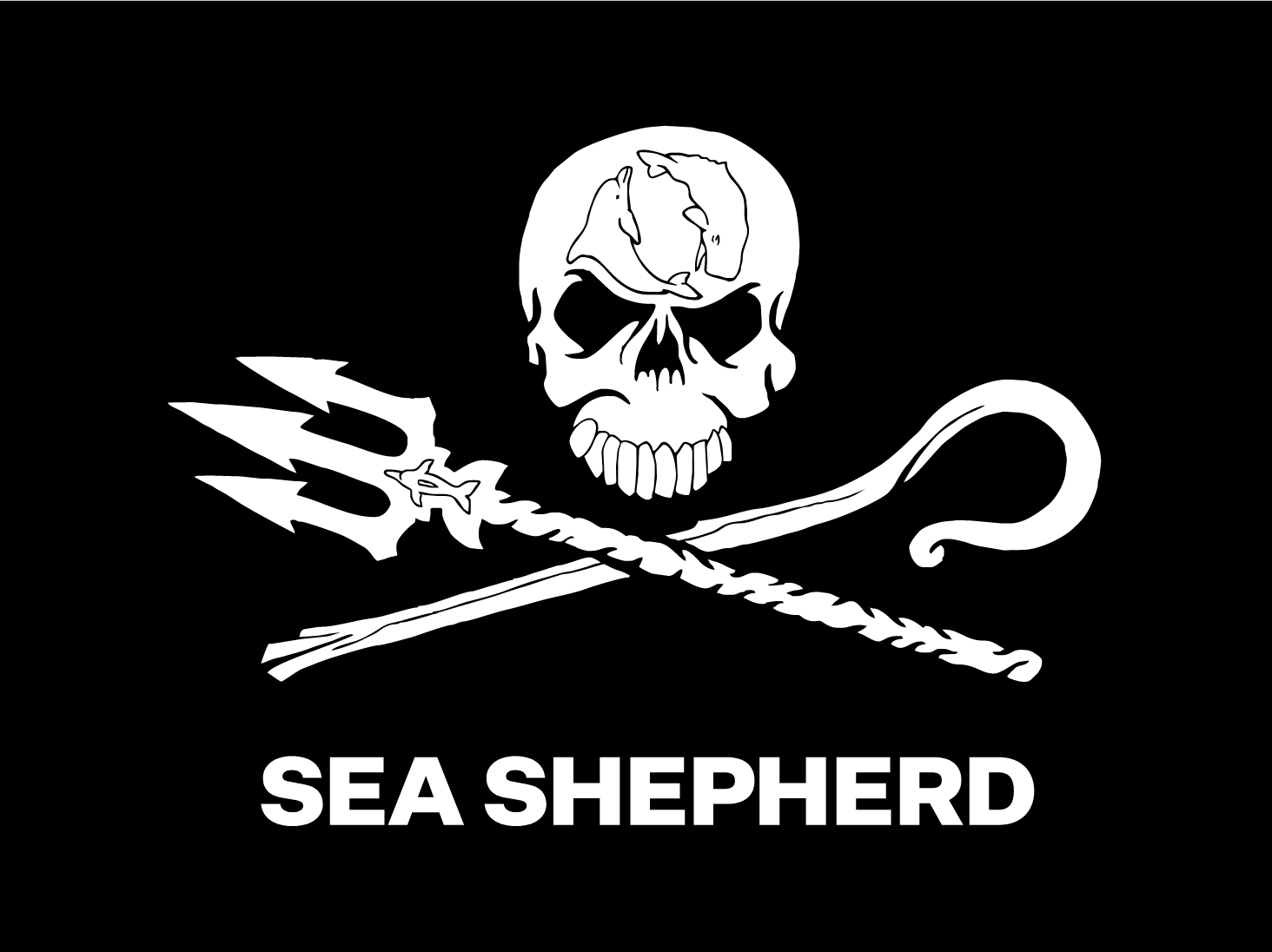
Eating Vegan on the Ocean Conservation Ship Sea Shepard: A Sustainable Journey at Sea
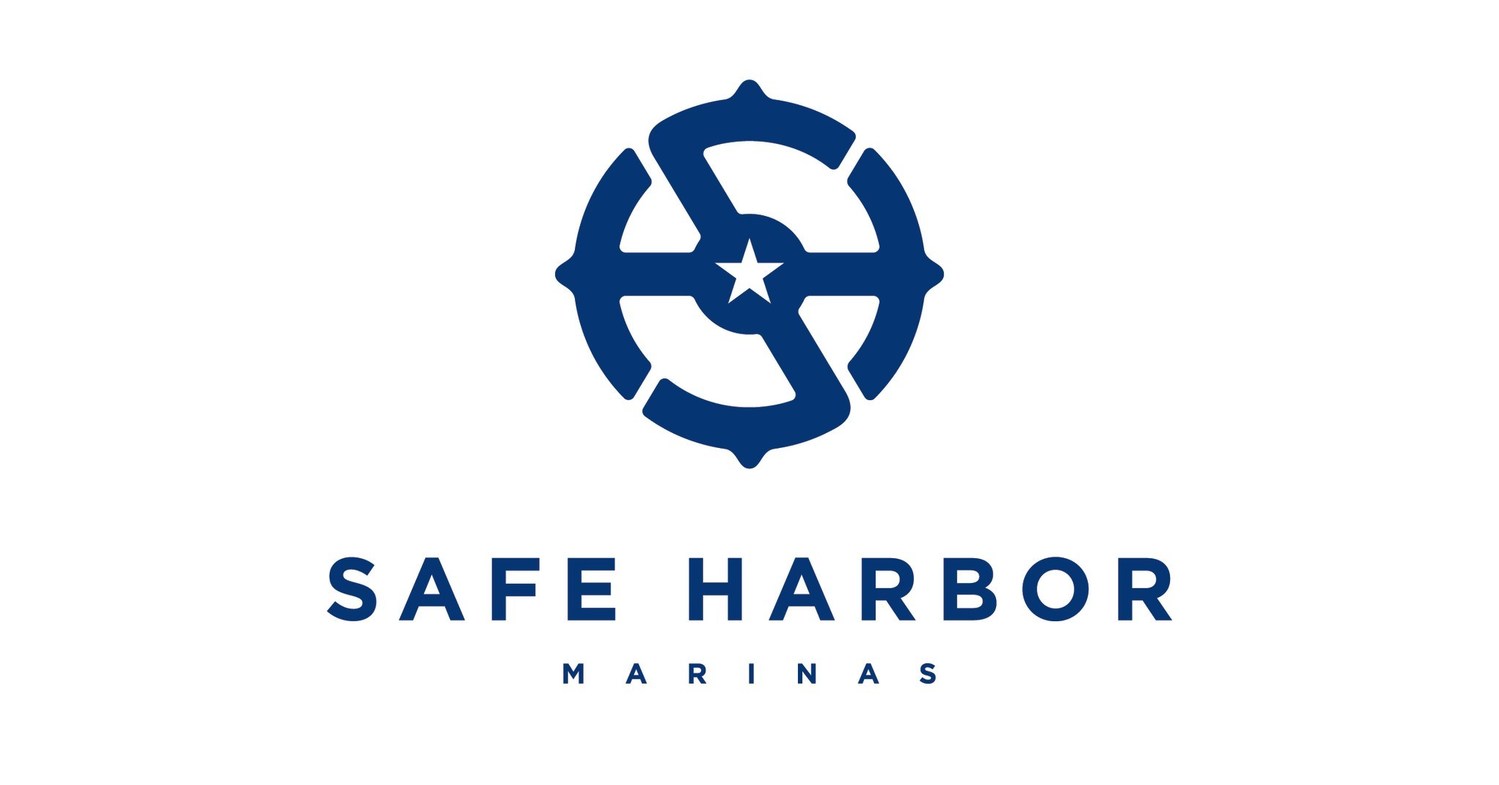
Safe Harbor - Ultimate Marina Guide: Essential Tips and Insights
Click on the button to load the content from www.googletagmanager.com.
Load content

- Tailored Vacation Planner
- Cabin Yacht Charter
- Family Sailing Holidays
- Romantic Sailing Vacations For Couples
- Sailing with friends
- Greece all inclusive yacht charter
- Croatia all inclusive yacht charter
- Food & Wine Routes
- Yacht search
- Luxury sailing
Boat vs. Ship vs Yacht: What’s the Difference?
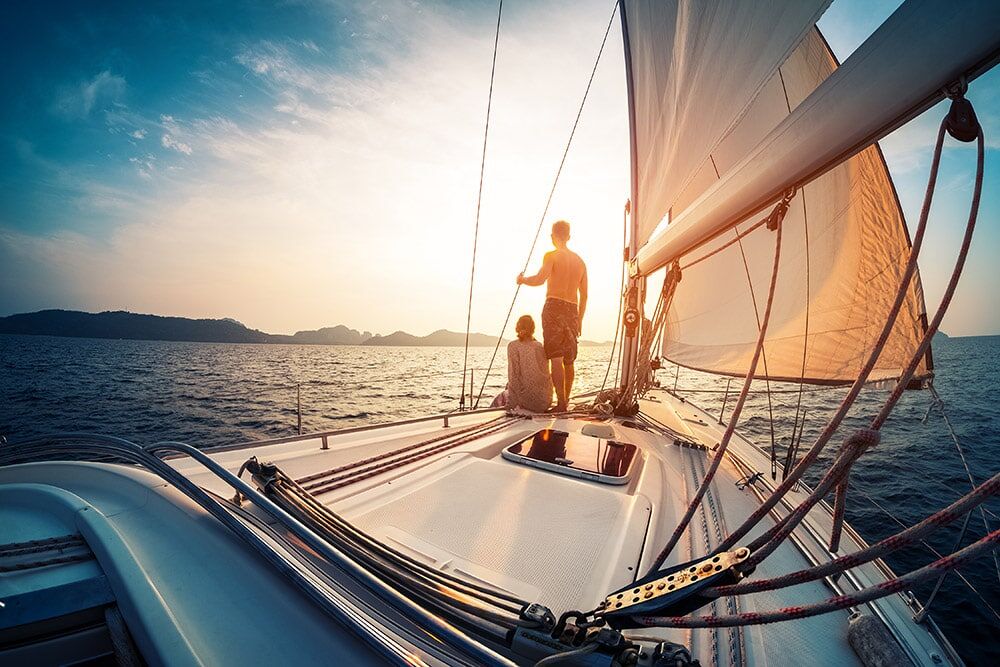
Language is a tricky thing, and picking out the differences between similar terms can be confusing. This is especially true when some of the definitions overlap. This is the case with the case of boat vs. ship vs. yacht . What’s the difference? We know in our gut that there are differences between these three seafaring vessels, but unless you’re a harbor master do you really know what counts as what?
Let’s get into some definitions, and we’re going to start with the easiest to explain: What is a yacht? What is a ship? And what is a boat?
Yacht vs. Ship vs. Boat
What is a yacht.
A yacht, I think everyone would agree, is fancier than a ship or a boat. “Yacht” infers some amount of luxury , and definitely recreation. There’s also something to be said about size. A yacht tends to be anywhere between 35 feet up to 160 feet. And some yachts, known as superyachts, go even beyond that. (Jeff Bezos just built a 417 foot yacht, but that’s really breaking yacht records.)
Because of the size, yachts tend to operate in larger bodies of water–generally the ocean. Yachts are able to handle rougher ocean waves, and they are also equipped with more advanced navigation and guidance instruments than smaller boats. Likewise, a yacht tends to have a full crew to help with the navigation, engineering, repairs, as well as having stewards that serve the yacht’s guests. This can be anywhere from a crew of four or five up to a crew of a few dozen on large yachts.
One interesting thing to note is that outside of the United States, a yacht refers to a sailboat , and a motorized yacht is called a “motor yacht”.
So, is a yacht a boat? Yes, technically a yacht is a boat. But a yacht is a very specific kind of boat.
Want to hop aboard?
Book your dream sailing vacation in top sailing destinations!
- Explore your charter options
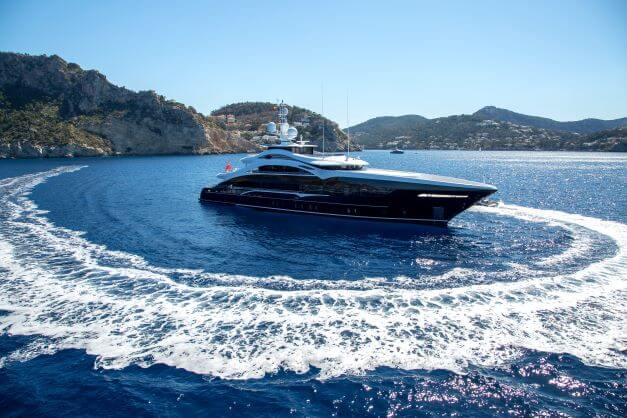
What is a Ship?
The term ship is most commonly associated with a very large boat, and something that is not as fancy as a yacht (one exception is that cruise ships can still be very fancy, but are referred to as ships because of their size and power.)
Ships are generally so large that they would never be found in a lake, with some exceptions for the Great Lakes, and are made for navigating the high seas of the open ocean. An ship can refer to a cruise ship, a naval ship, a tanker, a container ship, and many other commercial vessels.
Ships tend to have advanced navigation and technology, but much more advanced than that of a yacht due to the size, the speed, and the routes that a ship will take. They are meant to be traversing the open ocean for very long periods of time, from one continent to the next, while a yacht may only rarely set across the ocean and most often stays somewhat near land.
A ship will also have a much larger crew than a yacht or a boat. Ships are typically so large that they need not only one trained navigator but a set of navigators, plus an entire engineering team, and includes many more positions.
Finally, a ship is meant to carry things. This may be passengers, yes (in reference to cruise ships and some navy ships) but most ships are for carrying cargo–or even carrying equipment to do work on other ships including repair work or refueling.
What is a Boat?
Well, a boat is harder to define, because a yacht is technically a boat, and a ship is technically a boat. But when people refer to boats, they are almost always referring to something smaller than either a yacht or a ship. Boats may be motorized, like a speed boat, or they may sail, or they may be man-powered, like a rowboat or a kayak. Really, anything up to and including a liferaft, can be called a boat.
(As a side note that will just muddy the waters even further, submarine captains are adamant that their subs are boats. They are not ships.)
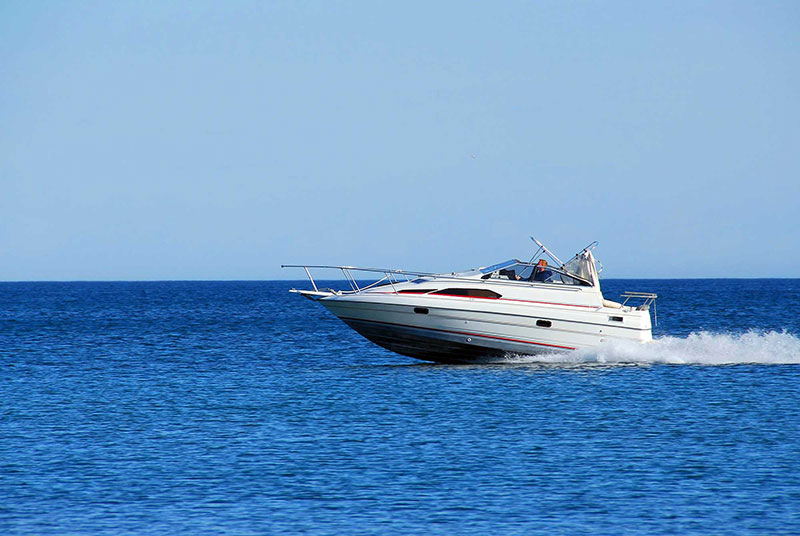
So, Boat vs. Ship Vs. Yacht?
Ultimately it comes down to this: all three of them are boats, but yachts are fancier, larger, and used for recreation, and ships are even larger, used commercially or by the navy, and are meant to cross oceans. The dividing line is sometimes thin, but generally speaking, when it comes to boats vs. ships.vs. yachts you can go by the adage “ I know it when I see it .”
Share article:
Have a question.
We have answers to your questions. So don’t hesitate to get in touch with our team today!
- GET MORE INFO
Feel free to ask us anything. All hands on deck. Let's sail
Thank you for sending us an inquiry, thank you so much for your enquiry.
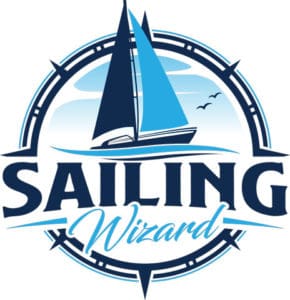
What’s the Difference Between a Boat, Yacht & Ship?
Whether you are a brand new sailor or just wanting to brush up on some terms, it is essential to know what to call a particular watercraft if you’re going to fit in while you’re at the docks or out on the water. There are many nuances and subtle differences between water vessel types, but below are some of the main differences.
In general, yachts are either sailing or motor vessels used for pleasure. Yachts are often luxurious and equipped with an overnight cabin. Boats can be either propelled sail or a motor and come in varying sizes. On the other hand, ships are usually motor-powered and much larger than boats.
Some of the differences between watercraft types can be a little fuzzy, but once you grasp the main differences between them, it becomes relatively easy to tell them apart. If you have no previous knowledge of watercraft, you are likely very confused about what defines a yacht, boat, and ship, so I’ll try to clarify any confusion you might have in the next few sections.
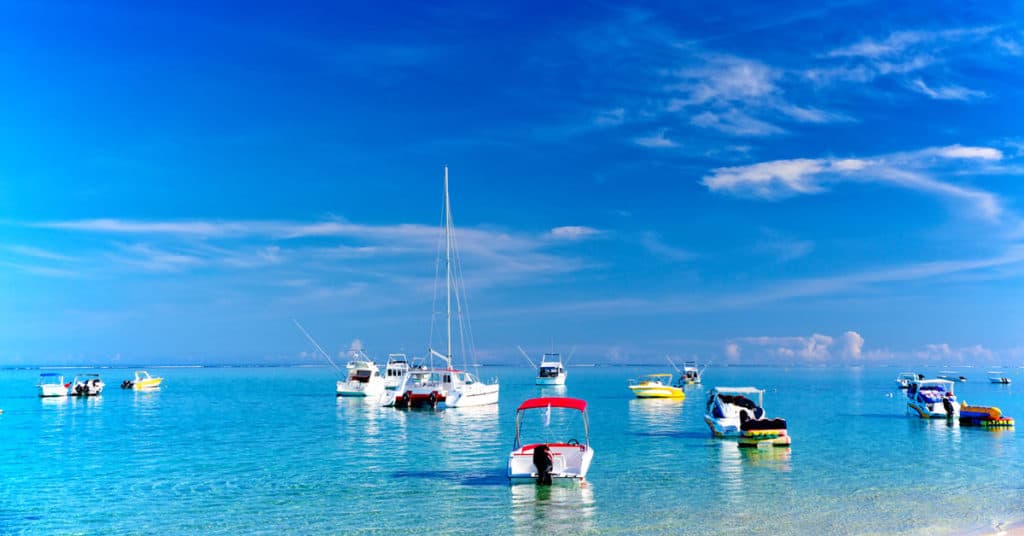
Similarities and Differences Between Boats, Yachts, and Ships
The many bodies of water all over the world are home to an extensive collection of different watercraft. There are so many shapes and sizes that they come in that it is nearly impossible to fit every single one into a specific classification.
However, in the following table, I did my best to loosely define ships, yachts, and boats so that it is easy to see the differences between the types of watercraft.
| Less than 197ft (60m) (usually ~25ft) | $15000 – $100,000+ | Pleasure, Residential, or Commercial | Motor, Wind, or Man Powered | |
| Greater than 33ft | $250,000 – $50,000,000+ | Pleasure | Motor or Wind Powered | |
| Greater than 197ft | $10,000,000 – $500,000,000+ | Pleasure, Residential, or Commercial | Motor Powered (Ancient Ships Used Wind or Man Power) |
As I mentioned earlier, it is impossible to fit EVERY SINGLE water vessel into a particular category, so there are tons of exceptions out there. In addition to the exceptions, different organizations, laws, and people classify types of boats slightly differently.
There is no universally accepted definition for ships, boats, and yachts, but instead many different sets of rules and regulations. In this article, I have tried my best to use the most commonly accepted definitions for each watercraft type.
Now that we’ve gone over some of the main differences and similarities between boats, ships, and yachts, let’s take a look at each type of vessel individually and look at their most prominent characteristics and attributes.
What Exactly is a Boat?
Boats come in a vast array of sizes and shapes. To many people, the term “boat” simply refers to nearly any watercraft, but there are actually a few restrictions and defining characteristics that all boats have. So let’s just get right into it and take a quick look at what exactly qualifies a vessel as a boat.
Overall Size of Boats
As I said before, there is a massive catalog of different types of boats, and they come in a variety of sizes. There are huge boats that hold lots of cargo or people, and then there are smaller ones that barely can stay afloat with a single person on board.
Typically, boats are defined as watercraft that are less than 197 feet long. However, most boats you are likely to encounter on the water are usually around 30 feet long.
General Price Range of Boats
Again, it is hard to accurately give a price range for all boats because they come in so many different sizes, styles, and types, but most modern boats seem to fall in the $1,500 to $100,000 range.
Small Jon boats can cost even less than $1,500, while large sailboats and houseboats can cost well above $100,000.
Most Common Uses of Boats
Boats are used all over the world for a variety of different reasons and to do many tasks. Many types of boats serve a wide range of uses, but most are primarily used as a residence, for pleasure, or commercially.
Some of the most popular types of boats, such as sailboats, bowriders, and dinghies, are commonly used for enjoyment, fishing, racing, or other pleasurable activities. There are also many types of houseboats used as residences and commercial boats used for chartering or moving goods or people.
Propulsion Method of Boats
Due to the wide variety of boats, you are likely to find boats propelled by almost every propulsion method imaginable. Some of the more popular propulsion methods for boats to use are man-power, wind power, and motor power.
Boats on the smaller end often use the power of the people on board to row or paddle, while larger boats rely on sails or powerful motors attached to the stern. Many boats use more than one propulsion method, either together or with one of them as a backup.
What Exactly is a Yacht?
Yachts have many of the same attributes as boats, but their quality, size, and luxury really set them apart. When someone says “yacht,” many people imagine watercraft that are SUPER LARGE, and while there are lots of massive yachts, many smaller boats also qualify as yachts, which might surprise you.
Overall Size of Yachts
There are many different sized yachts, and the rules regarding how big they have to be are not very strict. In general, luxury watercraft greater than 33 feet in length are considered yachts. However, boats smaller than 33 feet are sometimes called yachts if they are exceptionally luxurious and elegant.
There is no upper limit to how large a yacht can be. Yachts longer than 100 feet are often referred to as mega yachts, and ones over 150 feet long called are super yachts.
General Price Range of Yachts
Because the very definition of a yacht requires it to be very luxurious, they often come with quite a price tag as a result. There is quite a range of different price points for yachts, ranging from $250,000 to $50,000,000 and beyond.
Most Common Uses of Yachts
Yachts, because they are so expensive to maintain and purchase, are primarily used for pleasure purposes. Day trips out on the water are typical for yachts, although they often have overnight cabins, so longer excursions are popular.
Chartered yachts are also very popular, which bridges the gap between commercial and pleasure. Although, when you are on a chartered yacht, it is usually for the sole purpose of having a great time and enjoying yourself.
Propulsion Method of Yachts
Because yachts are considered very luxurious and often so large, they are usually solely propelling using motor power. Even if a yacht is on the smaller end of the spectrum, they often only use a motor as a means of driving the craft through the water.
However, many large sailing yachts out there use sails and the wind to propel the vessel. So while the large majority of yachts use motors, keep in mind that some large and luxurious sailboats can be considered yachts.
What Exactly is a Ship?
Throughout history, large ships have been a helpful tool for many civilizations and have allowed them to transport goods and explore places beyond their homes. In modern times, ships are quite common and are used for a variety of different reasons.
Overall Size of Ships
One of the primary characteristics of ships that set them apart from boats is their size. Ships, especially in modern times, are often MASSIVE and are restricted to navigating only extensive waterways.
Vessels greater than or equal to 197 feet long are often considered ships. However, most ships today are huge and often fall in the 1,000-foot range or larger.
General Price Range of Ships
Most individuals will never own a ship due to their extreme maintenance and the cost of purchasing one. While many smaller ships are far less expensive, most modern ships cost anywhere between $50 and $500 million.
Large and luxurious cruise ships can even cost upwards of $1 billion to construct, and that’s not even taking into account staff, maintenance, and other costs.
Most Common Uses of Ships
Ships perform many different duties throughout the world, but usually, they are used to transport passengers or goods over long distances. In addition, they are also often used by military, scientists, fishers, and a plethora of other professions and people. They are also often used for pleasure purposes, in the form of passenger cruise ships.
Overall, ships encompass a large selection of vessels that perform many different duties.
Propulsion Method of Ships
Due to their large size, most modern ships are propelled using motors. However, even though ships are equipped with massive motors, they are still pretty slow and often move at around 20 knots per hour, although some move much quicker.
While most, if not all, ships today use motors to propel themselves through the water, this was not always the case. Before motors were around, many civilizations used ships for military, exploration, transportation, shipping, and many other uses. During these times, ships were powered primarily by man and wind power. Even today, you can occasionally find a sail-powered ship, though they are quite rare.
James Gerard
Hi, I'm James! I started sailing at a very early age here in the UK, and have enjoyed so many opportunities to sail all over the world. I created this website to share the many sailing tips I've leaned over the years, so that you can also discover the joy of sailing with safety and confidence.
Recent Posts
How to Predict Wind Direction & Speed from a Surface Pressure Chart
Learning how to read a surface pressure chart will allow you to predict the wind speed and direction based on the weather chart. This will help you in planning your next sailing trip.
What Does a Black & Yellow Buoy Mean? (Cardinal Marks Explained)
If you see a black and yellow buoy while you're sailing, don't ignore it. Cardinal Marks are there to help you avoid hidden hazards in the water. This helpful article will help you to identify a...

Types of Sailboats: A Complete Guide

Last Updated by
Daniel Wade
June 15, 2022
Learning the different types of sailboats can help you identify vessels and choose the right boat.
In this article, we'll cover the most common kinds of sailboats, their origins, and what they're used for. We'll also go over the strengths and weaknesses of each design, along with when they're most useful.
The most common kind of sailboat is the sloop, as it's simple to operate and versatile. Other common sailboat types include the schooner, cutter, cat, ketch, schooner, catamaran, and trimaran. Other sailboat variations include pocket cruisers, motorsailers, displacement, and shoal-draft vessels.
The information found in this article is sourced from boat reference guides, including A Field Guide to Sailboats of North America by Richard M. Sherwood and trusted sources in the sailing community.
Table of contents
Distinguishing Types of Sailboats
In this article, we'll distinguish sailboats by traits such as their hull type, rig, and general configuration. Some sailboats share multiple characteristics with other boats but fall into a completely different category. For example, a sailboat with a Bermuda rig, a large engine, and a pilothouse could technically be called a sloop, but it's more likely a motorsailer.
When discerning sailboat type, the first most obvious place to look is the hull. If it has only one hull, you can immediately eliminate the trimaran and the catamaran. If it has two or more hulls, it's certainly not a typical monohull vessel.
The next trait to consider is the rig. You can tell a lot about a sailboat based on its rig, including what it's designed to be used for. For example, a long and slender sailboat with a tall triangular rig is likely designed for speed or racing, whereas a wide vessel with a complex gaff rig is probably built for offshore cruising.
Other factors that determine boat type include hull shape, overall length, cabin size, sail plan, and displacement. Hull material also plays a role, but every major type of sailboat has been built in both wood and fiberglass at some point.
Sailboat vs. Motorsailer
Most sailboats have motors, but most motorized sailboats are not motorsailers. A motorsailer is a specific kind of sailboat designed to run efficiently under sail and power, and sometimes both.
Most sailboats have an auxiliary engine, though these power plants are designed primarily for maneuvering. These vessels cannot achieve reasonable speed or fuel-efficiency. Motorsailers can operate like a powerboat.
Motorsailers provide great flexibility on short runs. They're great family boats, and they're popular in coastal communities with heavy boat traffic. However, these features come at a cost. Motorsailers aren't the fastest or most efficient powerboats, and they're also not the most agile sailboats. That said, they make an excellent general-purpose sailing craft.
Monohull vs. Multi-hull: Which is Better?
Multihull sailboats are increasingly popular, thanks to advances and lightweight materials, and sailboat design. But are they better than traditional sailboats? Monohulls are easier to maintain and less expensive, and they offer better interior layouts. Multihulls are more stable and comfortable, and they're significantly easier to control. Multihull sailboats also have a speed advantage.
Monohull Sailboats
A monohull sailboat is a traditionally-shaped vessel with a single hull. The vast majority of consumer sailboats are monohulls, as they're inexpensive to produce and easy to handle. Monohull sailboats are proven and easy to maintain, though they lack the initial stability and motion comfort of multi-hull vessels.
Monohull sailboats have a much greater rig variety than multi-hull sailboats. The vast majority of multihull sailboats have a single mast, whereas multi-masted vessels such as yawls and schooners are always monohulls. Some multi-hull sailboats have side-by-side masts, but these are the exception.
Catamaran Sailboats
The second most common sailboat configuration is the catamaran. A catamaran is a multihull sailboat that has two symmetrical hulls placed side-by-side and connected with a deck. This basic design has been used for hundreds of years, and it experienced a big resurgence in the fiberglass boat era.
Catamarans are fast, efficient, and comfortable. They don't heel very much, as this design has excellent initial stability. The primary drawback of the catamaran is below decks. The cabin of a catamaran is split between both hulls, which often leaves less space for the galley, head, and living areas.
Trimaran Sailboats
Trimarans are multi-hull sailboats similar to catamarans. Trimarans have three hulls arranged side-by-side. The profile of a trimaran is often indistinguishable from a catamaran.
Trimarans are increasingly popular, as they're faster than catamarans and monohulls and considerably easier to control. Trimarans suffer from the same spatial limitations as catamarans. The addition of an extra hull adds additional space, which is one reason why these multi-hull vessels are some of the best-selling sailboats on the market today.
Sailboat Rig Types
Rigging is another way to distinguish sailboat types. The rig of a sailboat refers to it's mast and sail configuration. Here are the most common types of sailboat rigs and what they're used for.
Sloops are the most common type of sailboat on the water today. A sloop is a simple single-mast rig that usually incorporates a tall triangular mainsail and headsail. The sloop rig is easy to control, fun to sail, and versatile. Sloops are common on racing sailboats as they can sail quite close to the wind. These maneuverable sailboats also have excellent windward performance.
The sloop rig is popular because it works well in almost any situation. That said, other more complex rigs offer finer control and superior performance for some hull types. Additionally, sloops spread their entire sail area over just to canvases, which is less flexible than multi-masted rigs. The sloop is ideal for general-purpose sailing, and it's proven itself inland and offshore.
Sloop Features:
- Most popular sailboat rig
- Single mast
- One mainsail and headsail
- Typically Bermuda-rigged
- Easy to handle
- Great windward performance
- Less precise control
- Easier to capsize
- Requires a tall mast
Suitable Uses:
- Offshore cruising
- Coastal cruising
Cat (Catboat)
The cat (or catboat) is a single-masted sailboat with a large, single mainsail. Catboats have a thick forward mast, no headsail, and an exceptionally long boom. These vessels are typically gaff-rigged, as this four-edged rig offers greater sail area with a shorter mast. Catboats were popular workboats in New England around the turn of the century, and they have a large following today.
Catboats are typically short and wide, which provides excellent stability in rough coastal conditions. They're hardy and seaworthy vessels, but they're slow and not ideal for offshore use. Catboats are simple and easy to control, as they only have a single gaff sail. Catboats are easy to spot thanks to their forward-mounted mast and enormous mainsail.
Catboat Features:
- Far forward-mounted single mast
- Large four-sided gaff sail
- Short and wide with a large cockpit
- Usually between 20 and 30 feet in length
- Excellent workboats
- Tough and useful design
- Great for fishing
- Large cockpit and cabin
- Not ideal for offshore sailing
- Single sail offers less precise control
- Slow compared to other rigs
- Inland cruising
At first glance, a cutter is difficult to distinguish from a sloop. Both vessels have a single mast located in roughly the same position, but the sail plan is dramatically different. The cutter uses two headsails and often incorporates a large spar that extends from the bow (called a bowsprit).
The additional headsail is called a staysail. A sloop only carries one headsail, which is typically a jib. Cutter headsails have a lower center of gravity which provides superior performance in rough weather. It's more difficult to capsize a cutter, and they offer more precise control than a sloop. Cutters have more complex rigging, which is a disadvantage for some people.
Cutter Features:
- Two headsails
- Long bowsprit
- Similar to sloop
- Gaff or Bermuda-rigged
- Fast and efficient
- Offers precise control
- Superior rough-weather performance
- More complex than the sloop rig
- Harder to handle than simpler rigs
Perhaps the most majestic type of sailboat rig, the schooner is a multi-masted vessel with plenty of history and rugged seaworthiness. The schooner is typically gaff-rigged with short masts and multiple sails. Schooners are fast and powerful vessels with a complex rig. These sailboats have excellent offshore handling characteristics.
Schooners have a minimum of two masts, but some have three or more. The aftermost large sail is the mainsail, and the nearly identical forward sail is called the foresail. Schooners can have one or more headsail, which includes a cutter-style staysail. Some schooners have an additional smaller sale aft of the mainsail called the mizzen.
Schooner Features:
- At least two masts
- Usually gaff-rigged
- One or more headsails
- Excellent offshore handling
- Precise control
- Numerous sail options (headsails, topsails, mizzen)
- Fast and powerful
- Complex and labor-intensive rig
- Difficult to adjust rig single-handed
- Offshore fishing
Picture a ketch as a sloop or a cutter with an extra mast behind the mainsail. These vessels are seaworthy, powerful, excellent for offshore cruising. A ketch is similar to a yawl, except its larger mizzen doesn't hang off the stern. The ketch is either gaff or Bermuda-rigged.
Ketch-rigged sailboats have smaller sails, and thus, shorter masts. This makes them more durable and controllable in rough weather. The mizzen can help the boat steer itself, which is advantageous on offshore voyages. A ketch is likely slower than a sloop or a cutter, which means you aren't likely to find one winning a race.
Ketch Features:
- Headsail (or headsails), mainsail, and mizzen
- Mizzen doesn't extend past the rudder post
- Good offshore handling
- Controllable and mild
- Shorter and stronger masts
- Easy self-steering
- Slower than sloops and cutters
- Less common on the used market
A dinghy is a general term for a small sailboat of fewer than 28 feet overall. Dinghys are often dual-power boats, which means they usually have oars or a small outboard in addition to a sail. These small boats are open-top and only suitable for cruising in protected waters. Many larger sailboats have a deployable dinghy on board to get to shore when at anchor.
Dinghy Features:
- One or two people maximum capacity
- Easy to sail
- Works with oars, sails, or an outboard
- Great auxiliary boat
- Small and exposed
- Not suitable for offshore use
- Going from anchor to shore
- Protected recreational sailing (lakes, rivers, and harbors)
Best Sailboat Type for Stability
Stability is a factor that varies widely between sailboat types. There are different types of stability, and some sailors prefer one over another. For initial stability, the trimaran wins with little contest. This is because these vessels have a very high beam-to-length ratio, which makes them much less prone to rolling. Next up is the catamaran, which enjoys the same benefit from a wide beam but lacks the additional support of a center hull section.
It's clear that in most conditions, multihull vessels have the greatest stability. But what about in rough weather? And what about capsizing? Multihull sailboats are impossible to right after a knockdown. This is where full-keel monohull sailboats excel.
Traditional vessels with deep displacement keels are the safest and most stable in rough weather. The shape, depth, and weight of their keels keep them from knocking over and rolling excessively. In many cases, these sailboats will suffer a dismasting long before a knockdown. The primary disadvantage of deep-keeled sailboats is their tendency to heel excessively. This characteristic isn't hazardous, though it can make novice sailors nervous and reduce cabin comfort while underway.
Best Sailboat Type for Offshore Cruising
The best sailboat type for offshore cruising is the schooner. These graceful aid robust vessels have proven themselves over centuries as durable and capable vessels. They typically use deep displacement keels, which makes them stable in rough weather and easy to keep on course.
That said, the full answer isn't quite so simple. Modern multihull designs are an attractive option, and they have also proven to be strong and safe designs. Multihull sailboats are an increasingly popular option for offshore sailors, and they offer comfort that was previously unknown in the sailing community.
Many sailors cross oceans in basic Bermuda-rigged monohulls and take full advantage of a fin-keel design speed. At the end of the day, the best offshore cruising sailboat is whatever you are comfortable handling and living aboard. There are physical limits to all sailboat designs, though almost any vessel can make it across an ocean if piloted by a competent skipper and crew.
Best Sailboat Type for Racing The modern lightweight Bermuda-rigged sailboat is the king of the regatta. When designed with the right kind of hull, these vessels are some of the fastest sailboats ever developed. Many boats constructed between the 1970s and today incorporate these design features due to their favorable coastal and inland handling characteristics. Even small sailboats, such as the Cal 20 and the Catalina 22, benefit from this design. These boats are renowned for their speed and handling characteristics.
Related Articles
I've personally had thousands of questions about sailing and sailboats over the years. As I learn and experience sailing, and the community, I share the answers that work and make sense to me, here on Life of Sailing.
by this author
Learn About Sailboats
Most Recent

What Does "Sailing By The Lee" Mean?
October 3, 2023

The Best Sailing Schools And Programs: Reviews & Ratings
September 26, 2023
Important Legal Info
Lifeofsailing.com is a participant in the Amazon Services LLC Associates Program, an affiliate advertising program designed to provide a means for sites to earn advertising fees by advertising and linking to Amazon. This site also participates in other affiliate programs and is compensated for referring traffic and business to these companies.
Similar Posts

Affordable Sailboats You Can Build at Home
September 13, 2023

Best Small Sailboat Ornaments
September 12, 2023

Discover the Magic of Hydrofoil Sailboats
December 11, 2023
Popular Posts

Best Liveaboard Catamaran Sailboats
December 28, 2023

Can a Novice Sail Around the World?
Elizabeth O'Malley

4 Best Electric Outboard Motors

How Long Did It Take The Vikings To Sail To England?

10 Best Sailboat Brands (And Why)
December 20, 2023

7 Best Places To Liveaboard A Sailboat
Get the best sailing content.
Top Rated Posts
Lifeofsailing.com is a participant in the Amazon Services LLC Associates Program, an affiliate advertising program designed to provide a means for sites to earn advertising fees by advertising and linking to Amazon. This site also participates in other affiliate programs and is compensated for referring traffic and business to these companies. (866) 342-SAIL
© 2024 Life of Sailing Email: [email protected] Address: 11816 Inwood Rd #3024 Dallas, TX 75244 Disclaimer Privacy Policy
Guide to Understanding Sail Rig Types (with Pictures)
There are a lot of different sail rig types and it can be difficult to remember what's what. So I've come up with a system. Let me explain it in this article.
What are the different types of sail rig? The sail rig is determined by the number of masts and the layout and shape of sails. Most modern ships are fore-and-aft rigged, while old ships are square-rigged. Rigs with one mast are sloops and cutters. Ketches, yawls, brigs, and schooners have two masts. Barques have three masts. Rigs can contain up to seven masts.
'Yeah, that's a gaff brig, and that a Bermuda cutter' - If you don't know what this means (neither did I) and want to know what to call a two-masted ship with a square-rigged mainsail, this article is definitely for you.
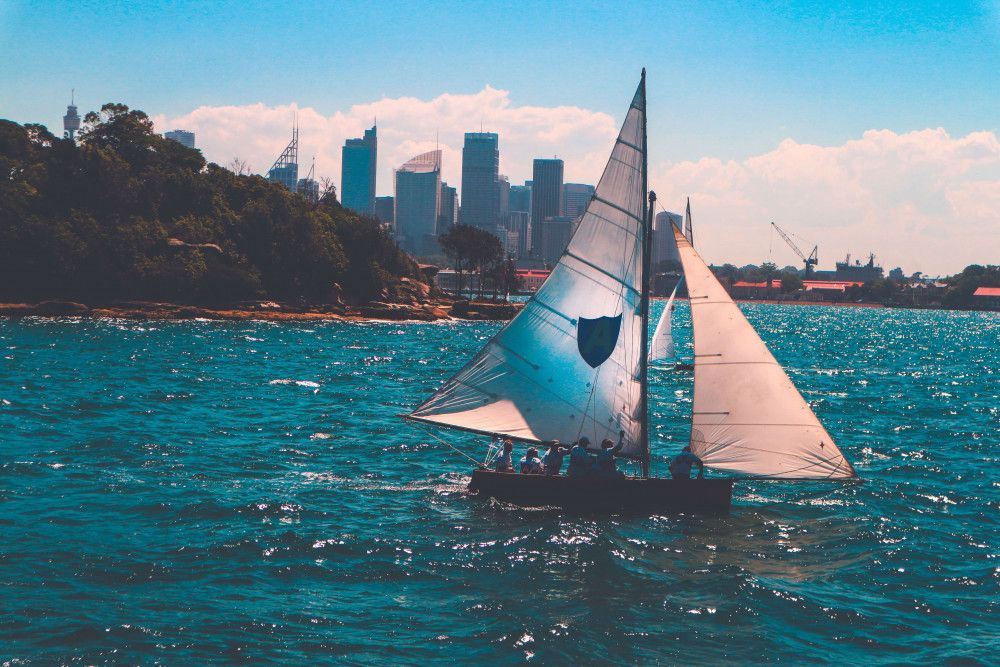
On this page:
More info on sail rig types, mast configurations and rig types, rigs with one mast, rigs with two masts, rigs with three masts, related questions.
This article is part 2 of my series on sails and rig types. Part 1 is all about the different types of sails. If you want to know everything there is to know about sails once and for all, I really recommend you read it. It gives a good overview of sail types and is easy to understand.
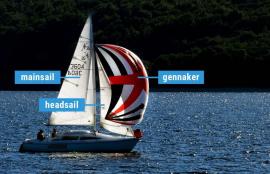
The Ultimate Guide to Sail Types and Rigs (with Pictures)
First of all, what is a sail rig? A sail rig is the way in which the sails are attached to the mast(s). In other words, it's the setup or configuration of the sailboat. The rig consists of the sail and mast hardware. The sail rig and sail type are both part of the sail plan. We usually use the sail rig type to refer to the type of boat.
Let's start by taking a look at the most commonly used modern sail rigs. Don't worry if you don't exactly understand what's going on. At the end of this article, you'll understand everything about rig types.
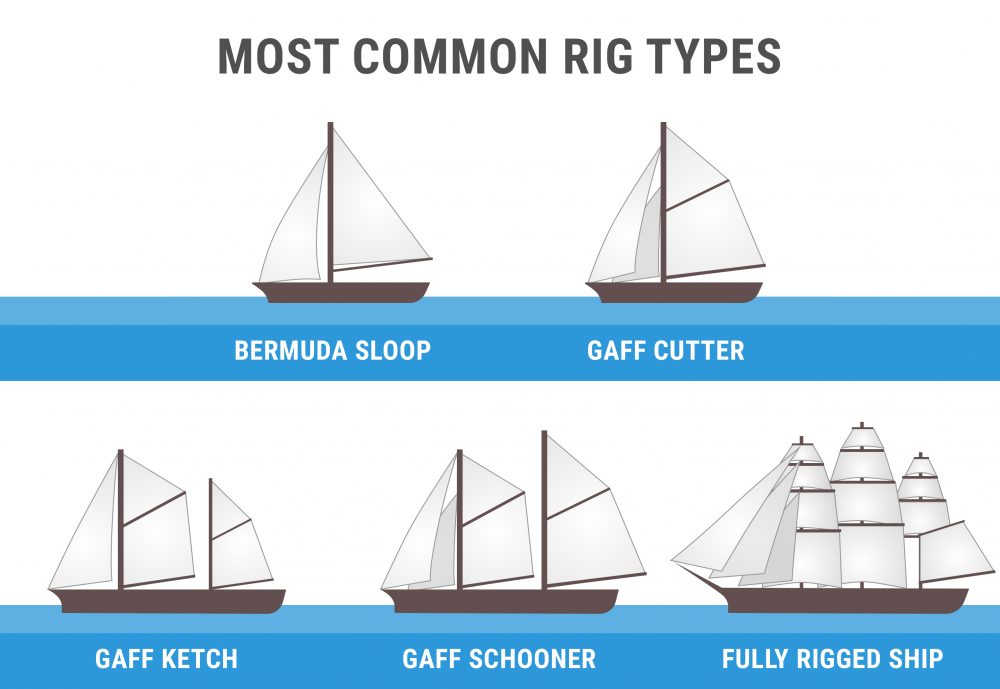
The sail rig and sail plan are often used interchangeably. When we talk of the sail rig we usually mean the sail plan . Although they are not quite the same. A sail plan is the set of drawings by the naval architect that shows the different combinations of sails and how they are set up for different weather conditions. For example a light air sail plan, storm sail plan, and the working sail plan (which is used most of the time).
So let's take a look at the three things that make up the sail plan.
The 3 things that make up the sail plan
I want to do a quick recap of my previous article. A sail plan is made up of:
- Mast configuration - refers to the number of masts and where they are placed
- Sail type - refers to the sail shape and functionality
- Rig type - refers to the way these sails are set up on your boat
I'll explore the most common rig types in detail later in this post. I've also added pictures to learn to recognize them more easily. ( Click here to skip to the section with pictures ).
How to recognize the sail plan?
So how do you know what kind of boat you're dealing with? If you want to determine what the rig type of a boat is, you need to look at these three things:
- Check the number of masts, and how they are set up.
- You look at the type of sails used (the shape of the sails, how many there are, and what functionality they have).
- And you have to determine the rig type, which means the way the sails are set up.
Below I'll explain each of these factors in more detail.
The most common rig types on sailboats
To give you an idea of the most-used sail rigs, I'll quickly summarize some sail plans below and mention the three things that make up their sail plan.
- Bermuda sloop - one mast, one mainsail, one headsail, fore-and-aft rigged
- Gaff cutter - one mast, one mainsail, two staysails, fore-and-aft rigged
- Gaff schooner - two-masted (foremast), two mainsails, staysails, fore-and-aft rigged
- Gaff ketch - two-masted (mizzen), two mainsails, staysails, fore-and-aft rigged
- Full-rigged ship or tall ship - three or more masts, mainsail on each mast, staysails, square-rigged
The first word is the shape and rigging of the mainsail. So this is the way the sail is attached to the mast. I'll go into this later on. The second word refers to the mast setup and amount of sails used.
Most sailboats are Bermuda sloops. Gaff-rigged sails are mostly found on older, classic boats. Square-rigged sails are generally not used anymore.
But first I want to discuss the three factors that make up the sail plan in more detail.
Ways to rig sails
There are basically two ways to rig sails:
- From side to side, called Square-rigged sails - the classic pirate sails
- From front to back, called Fore-and-aft rigged sails - the modern sail rig
Almost all boats are fore-and-aft rigged nowadays.
Square sails are good for running downwind, but they're pretty useless when you're on an upwind tack. These sails were used on Viking longships, for example. Their boats were quicker downwind than the boats with fore-and-aft rigged sails, but they didn't handle as well.
The Arabs first used fore-and-aft rigged sails, making them quicker in difficult wind conditions.
Quick recap from part 1: the reason most boats are fore-and-aft rigged today is the increased maneuverability of this configuration. A square-rigged ship is only good for downwind runs, but a fore-and-aft rigged ship can sail close to the wind, using the lift to move forward.
The way the sails are attached to the mast determines the shape of the sail. The square-rigged sails are always attached the same way to the mast. The fore-and-aft rig, however, has a lot of variations.
The three main sail rigs are:
- Bermuda rig - most used - has a three-sided (triangular) mainsail
- Gaff rig - has a four-sided mainsail, the head of the mainsail is guided by a gaff
- Lateen rig - has a three-sided (triangular) mainsail on a long yard
The Bermuda is the most used, the gaff is a bit old-fashioned, and the lateen rig is outdated (about a thousand years). Lateen rigs were used by the Moors. The Bermuda rig is actually based on the Lateen rig (the Dutch got inspired by the Moors).

Other rig types that are not very common anymore are:
- Junk rig - has horizontal battens to control the sail
- Settee rig - Lateen with the front corner cut off
- Crabclaw rig
Mast configuration
Okay, we know the shape of the mainsail. Now it's time to take a look at the mast configuration. The first thing is the number of masts:
- one-masted boats
- two-masted boats
- three-masted boats
- four masts or up
- full or ship-rigged boats - also called 'ships' or 'tall ships'
I've briefly mentioned the one and two mast configurations in part 1 of this article. In this part, I'll also go over the three-masted configurations, and the tall ships as well.
A boat with one mast has a straightforward configuration because there's just one mast. You can choose to carry more sails or less, but that's about it.
A boat with two masts or more gets interesting. When you add a mast, it means you have to decide where to put the extra mast: in front, or in back of the mainmast. You can also choose whether or not the extra mast will carry an extra mainsail. The placement and size of the extra mast are important in determining what kind of boat we're dealing with. So you start by locating the largest mast, which is always the mainmast.
From front to back: the first mast is called the foremast. The middle mast is called the mainmast. And the rear mast is called the mizzenmast.

What is the mizzenmast? The mizzenmast is the aft-most (rear) mast on a sailboat with three or more masts or the mast behind the mainmast on a boat with two masts. The mizzenmast carries the mizzen sail. On a two-masted boat, the mizzenmast is always (slightly) smaller than the mainmast. What is the purpose of the mizzen sail? The mizzen sail provides more sail area and flexibility in sail plan. It can be used as a big wind rudder, helping the sailor to have more control over the stern of the ship. It pushes the stern away from the wind and forces the bow in the opposite way. This may help to bring the bow into the wind when at anchor.
I always look at the number of masts first, because this is the easiest to spot. So to make this stuff more easy to understand, I've divided up the rig types based on the number of masts below.
Why would you want more masts and sail anyways?
Good question. The biggest advantage of two masts compared to one (let's say a ketch compared to a sloop), is that it allows you to use multiple smaller sails to get the same sail area. It also allows for shorter masts.
This means you reduce the stress on the rigging and the masts, which makes the ketch rig safer and less prone to wear and tear. It also doesn't capsize as quickly. So there are a couple of real advantages of a ketch rig over a sloop rig.
In the case of one mast, we look at the number of sails it carries.
Boats with one mast can have either one sail, two sails, or three or more sails.
Most single-masted boats are sloops, which means one mast with two sails (mainsail + headsail). The extra sail increases maneuverability. The mainsail gives you control over the stern, while the headsail gives you control over the bow.
Sailor tip: you steer a boat using its sails, not using its rudder.
The one-masted rigs are:
- Cat - one mast, one sail
- Sloop - one mast, two sails
- Cutter - one mast, three or more sails
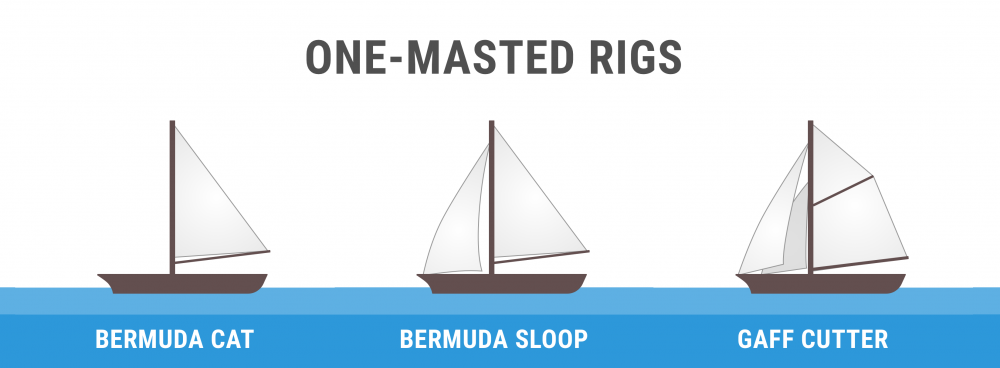
The cat is the simplest sail plan and has one mast with one sail. It's easy to handle alone, so it's very popular as a fishing boat. Most (very) small sailboats are catboats, like the Sunfish, and many Laser varieties. But it has a limited sail area and doesn't give you the control and options you have with more sails.
The most common sail plan is the sloop. It has one mast and two sails: the main and headsail. Most sloops have a Bermuda mainsail. It's one of the best racing rigs because it's able to sail very close to the wind (also called 'weatherly'). It's one of the fastest rig types for upwind sailing.
It's a simple sail plan that allows for high performance, and you can sail it short-handed. That's why most sailboats you see today are (Bermuda) sloops.
This rig is also called the Marconi rig, and it was developed by a Dutch Bermudian (or a Bermudian Dutchman) - someone from Holland who lived on Bermuda.
A cutter has three or more sails. Usually, the sail plan looks a lot like the sloop, but it has three headsails instead of one. Naval cutters can carry up to 6 sails.
Cutters have larger sail area, so they are better in light air. The partition of the sail area into more smaller sails give you more control in heavier winds as well. Cutters are considered better for bluewater sailing than sloops (although sloops will do fine also). But the additional sails just give you a bit more to play with.
Two-masted boats can have an extra mast in front or behind the mainmast. If the extra mast is behind (aft of) the mainmast, it's called a mizzenmast . If it's in front of the mainmast, it's called a foremast .
If you look at a boat with two masts and it has a foremast, it's most likely either a schooner or a brig. It's easy to recognize a foremast: the foremast is smaller than the aft mast.
If the aft mast is smaller than the front mast, it is a sail plan with a mizzenmast. That means the extra mast has been placed at the back of the boat. In this case, the front mast isn't the foremast, but the mainmast. Boats with two masts that have a mizzenmast are most likely a yawl or ketch.
The two-masted rigs are:
- Lugger - two masts (mizzen), with lugsail (a cross between gaff rig and lateen rig) on both masts
- Yawl - two masts (mizzen), fore-and-aft rigged on both masts. Main mast is much taller than mizzen. Mizzen without a mainsail.
- Ketch - two masts (mizzen), fore-and-aft rigged on both masts. Main mast with only slightly smaller mizzen. Mizzen has mainsail.
- Schooner - two masts (foremast), generally gaff rig on both masts. Main mast with only slightly smaller foremast. Sometimes build with three masts, up to seven in the age of sail.
- Bilander - two masts (foremast). Has a lateen-rigged mainsail and square-rigged sails on the foremast and topsails.
- Brig - two masts (foremast), partially square-rigged. The main mast carries small lateen-rigged sail.

The yawl has two masts that are fore-and-aft rigged and a mizzenmast. The mizzenmast is much shorter than the mainmast, and it doesn't carry a mainsail. The mizzenmast is located aft of the rudder and is mainly used to increase helm balance.
A ketch has two masts that are fore-and-aft rigged. The extra mast is a mizzenmast. It's nearly as tall as the mainmast and carries a mainsail. Usually, the mainsails of the ketch are gaff-rigged, but there are Bermuda-rigged ketches too. The mizzenmast is located in front of the rudder instead of aft, as on the yawl.
The function of the ketch's mizzen sail is different from that of the yawl. It's actually used to drive the boat forward, and the mizzen sail, together with the headsail, are sufficient to sail the ketch. The mizzen sail on a yawl can't really drive the boat forward.
Schooners have two masts that are fore-and-aft rigged. The extra mast is a foremast which is generally smaller than the mainmast, but it does carry a mainsail. Schooners are also built with a lot more masts, up to seven (not anymore). The schooner's mainsails are generally gaff-rigged.
The schooner is easy to sail but not very fast. It handles easier than a sloop, except for upwind, and it's only because of better technology that sloops are now more popular than the schooner.
The brig has two masts. The foremast is always square-rigged. The mainmast can be square-rigged or is partially square-rigged. Some brigs carry a lateen mainsail on the mainmast, with square-rigged topsails.
Some variations on the brig are:
Brigantine - two masts (foremast), partially square-rigged. Mainmast carries no square-rigged mainsail.
Hermaphrodite brig - also called half brig or schooner brig. Has two masts (foremast), partially square-rigged. Mainmast carries a gaff rig mainsail and topsail, making it half schooner.
Three-masted boats are mostly barques or schooners. Sometimes sail plans with two masts are used with more masts.
The three-masted rigs are:
- Barque - three masts, fore, and mainmast are square-rigged, the mizzenmast is usually gaff-rigged. All masts carry mainsail.
- Barquentine - three masts, foremast is square-rigged, the main and mizzenmast are fore-and-aft rigged. Also called the schooner barque.
- Polacca - three masts, foremast is square-rigged, the main and mizzenmast are lateen-rigged.
- Xebec - three masts, all masts are lateen-rigged.

A barque has three or four masts. The fore and mainmast are square-rigged, and the mizzen fore-and-aft, usually gaff-rigged. Carries a mainsail on each mast, but the mainsail shape differs per mast (square or gaff). Barques were built with up to five masts. Four-masted barques were quite common.
Barques were a good alternative to full-rigged ships because they require a lot fewer sailors. But they were also slower. Very popular rig for ocean crossings, so a great rig for merchants who travel long distances and don't want 30 - 50 sailors to run their ship.
Barquentine
The barquentine usually has three masts. The foremast is square-rigged and the main and mizzenmast fore-and-aft. The rear masts are usually gaff-rigged.
Faster than a barque or a schooner, but the performance is worse than both.
The polacca or polacre rig has three masts with a square-rigged foremast. The main and mizzenmast are lateen-rigged. Beautiful boat to see. Polacca literally means 'Polish' (it's Italian). It was a popular rig type in the Mediterranean in the 17th century. It looks like the xebec, which has three lateen-rigged masts.
Fun fact: polaccas were used by a Dutch sailor-turned-Turkish-pirate (called Murat Reis).
The xebec is a Mediterranean trading ship with three masts. All masts are lateen-rigged. I couldn't find any surviving xebecs, only models and paintings. So I guess this rig is outdated a long time.
A boat with three or more masts that all carry square-rigged sails is called a ship, a tall ship, or a full-rigged ship. So it's at this point that we start calling boats 'ships'. It has nothing to do with size but with the type of rigging.
More sails mean less stress on all of them. These ships use a lot of sails to distribute the forces, which reduces the stress on the rigging and the masts. Square sails mean double the sail area in comparison to triangular sails.
They are quite fast for their size, and they could outrun most sloops and schooners (schooners were relatively a lot heavier). The reason is that tall ships could be a lot longer than sloops, giving them a lot of extra hull speed. Sloops couldn't be as large because there weren't strong enough materials available. Try making a single triangular sail with a sail area of over 500 sq. ft. from linen.
So a lot of smaller sails made sense. You could have a large ship with a good maximum hull speed, without your sails ripping apart with every gust of wind.
But you need A LOT of sailors to sail a tall ship: about 30 sailors in total to ie. reef down sails and operate the ship. That's really a lot.
Tall ships are used nowadays for racing, with the popular tall ship races traveling the world. Every four years I go and check them out when they are at Harlingen (which is very close to where I live).
Check out the amazing ships in this video of the tall ship races last year near my hometown. (The event was organized by friends of mine).
What is the difference between a schooner and a sloop? A schooner has two masts, whereas the sloop only has one. The schooner carries more sails, with a mainsail on both masts. Also, sloops are usually Bermuda-rigged, whereas schooners are usually gaff-rigged. Most schooners also carry one or two additional headsails, in contrast to the single jib of the sloop.
What do you call a two-masted sailboat? A two-masted sailboat is most likely a yawl, ketch, schooner, or brig. To determine which one it is you have to locate the mainmast (the tallest). At the rear: schooner or brig. In front: yawl or ketch. Brigs have a square-rigged foremast, schooners don't. Ketches carry a mainsail on the rear mast; yawls don't.
What is a sloop rig? A sloop rig is a sailboat with one mast and two sails: a mainsail and headsail. It's a simple sail plan that handles well and offers good upwind performance. The sloop rig can be sailed shorthanded and is able to sail very close to the wind, making it very popular. Most recreational sailboats use a sloop rig.
What is the difference between a ketch and a yawl? The most important difference between a ketch and a yawl are the position and height of the mizzenmast. The mizzenmast on a yawl is located aft of the rudder, is shorter than the mainmast and doesn't carry a mainsail. On a ketch, it's nearly as long as the mainmast and carries a mainsail.

There are a wonderful lots of DIY changeability shows on the cable airwaves these days.
Rick the rigger
There are SO many errors on this site it really should be taken down.
First major mistake is to say you are no longer afraid of the sea.
One that truly gets up my nose is the term ‘fully’ rigged ship. It’s a FULL rigged ship!! Your mast names are the wrong way round and just because there may be 3 it doesn’t automatically mean the one in the middle is the main.
I could go on and totally destroy your over inflated but fragile ego but I won’t. All I will say is go learn a lot more before posting.
Shawn Buckles
Thanks for your feedback. If you like to point out anything more specific, please let me know and I will update the articles. I’ve changed fully-rigged to full-rigged ship - which is a typo on my part. I try to be as concise as I can, but, obviously, we all make mistakes every now and then. The great thing about the internet is that we can learn from each other and update our knowledge together.
If you want to write yourself and share your knowledge, please consider applying as a writer for my blog by clicking on the top banner.
Thanks, Shawn
Well, I feel that I’ve learned a bit from this. The information is clear and well laid out. Is it accurate? I can’t see anything at odds with the little I knew before, except that I understood a xebec has a square rigged centre mainmast, such as the Pelican ( https://www.adventureundersail.com/ )
Hi, Shawn, You forgot (failed) to mention another type of rig? The oldest type of rig known and still functions today JUNK RIG!
Why are so many of the comments here negative. I think it is wonderful to share knowledge and learn together. I knew a little about the subject (I’m an Aubrey-Maturin fan!) but still found this clarified some things for me. I can’t comment therefore on the accuracy of the article, but it seems clear to me that the spirit of the author is positive. We owe you some more bonhomme I suggest Shawn.
As they say in the Navy: “BZ” - for a good article.
Been reading S.M. Stirling and wanted to understand the ship types he references. Thank you, very helpful.
This site is an awesome starting point for anyone who would like to get an overview of the subject. I am gratefull to Shawn for sharing - Thanks & Kudos to you! If the negative reviewers want to get a deeper technical knowledge that is accurate to the n-th then go study the appropriate material. Contribute rather than destroy another’s good work. Well done Shawn. Great job!
Good stuff Shawn - very helpful. As a novice, it’s too confusing to figure out in bits and pieces. Thanks for laying it out.
First of all I have to say that Rick ‘the rigger’ is obviously the one with the “over inflated but fragile ego” and I laughed when you suggested he share his knowledge on your blog, well played!
As for the content it’s great, hope to read more soon!
Alec Lowenthal
Shawn, I have a painting of a Spanish vessel, two masted, with. Lateen sails on both masts and a jib. The mainsail is ahead of the main mast (fore) and the other is aft of the mizzen mast. Would this be what you call lugger rig? I have not seen a similar picture. Thanks, Alec.
Thank you for your article I found easy to read and understand, and more importantly remember, which emphasises the well written.. Pity about the negative comments, but love your proactive responses!
This vessel, “SEBASTIAN” out of Garrucha, Almería, España, was painted by Gustave Gillman in 1899.
Sorry, picture not accepted!
Thank you for a very informative article. I sail a bit and am always looking for more knowledge. I like the way you put forth your info and I feel if you can’t say anything positive, then that person should have their own blog or keep their opinions to their-self. I will be looking for more from you. I salute your way of dealing with negative comments.
Thank you for a great intro to sailing boats! I searched different sailboats because I use old sails tp make bags and wanted to learn the difference. Way more than I ever expected. Thanks for all the work put in to teach the rest of us.
Your description of a cutter is lacking, and your illustrations of “cutters” are actually cutter-rigged sloops. On a true cutter, the mast is moved further aft (with more than 40% of the ship forward of the mast). A sloop uses tension in the backstay to tension the luff of the foresail. The cutter can’t do this.
Also, a bermuda-rigged ketch will have a line running from the top of the mainmast to the top of the mizzenmast.
wow great guide to rig types! thanks
Interesting guide, however I am confused about the description of the brig. You say the main mast on a brig can have a lateen sail, but in your picture it looks like a gaff sail to me. How is it a lateen sail?
Hi Shawn, thank you for taking the time to share this information. It is clear and very helpful. I am new to sailing and thinking of buying my own blue water yacht. The information you have supplied is very useful. I still am seeking more information on performance and safety. Please keep up the good work. Best Regards
mickey fanelli
I’m starting to repair a model sailboat used in the lake I have three masts that have long been broken off and the sails need replacement. So my question is there a special relationship between the three masts I do have reminents of where the masts should go. they all broke off the boat along with the sails I can figure out where they go because of the old glue marks but it makes no sense. or does it really matter on a model thank you mickey
Cool, total novice here. I have learnt a lot. Thanks for sharing - the diagrams along with the text make it really easy to understand, especially for a beginner who hasn’t even stepped on a sailing boat.
Daryl Beatt
Thank you. Cleared up quite a few things for me. For example, I was familiar with the names “Xebecs” and “Polaccas” from recent reading about the Barbary War. I had gathered that the two Barbary types were better suited to sailing in the Med, but perhaps they were less able to be adaptable to military uses,(but one might assume that would be ok if one plans to board and fight, as opposed to fight a running gun duel). Specifically, the strangely one sided August 1, 1801 battle between the USS Enterprise under Lt. John Sterett and the Polacca cruiser Tripoli under Admiral Rais Mahomet Rous. On paper both ships seemed nearly equal in size, guns and crew, but pictures of the battle are confusing. While the Enterprise is usually rendered as the familiar schooner, the polacca Tripoli has been pictured in radically different ways. Thus the Wikipedia picture by Hoff in 1878 used to illustrate the Battle shows a Brig design for Tripoli, indicating 77 years later, polaccas were no longer common.
Lee Christiansen
I am curious as to what you would call a modern race boat with a fractional jib,not equipped for full masthead hoist? Thanks Lee
Thanks Guy: The information and pictures really eliminate a lot of the mystery of the terminology and the meanings. Also appreciate the insight of the handling idiosyncrasies “hand” (staff) requirements to manage a vessel for one that has not been on the water much. I long to spend significant time afloat, but have concern about the ability to handle a vessel due to advancing age. The Significant Other prefers to sit (in AC comfort)and be entertained by parties of cruise line employees. Thanks again for the information.
Gordon Smith
Your discussion made no mention of the galleon, a vessel with either square-rigged Fore and Main masts and a shorter lateen-rigged Mizzen, or, on larger galleons, square-rigged Fore and Main masts, with a lateen-rigged Mizzen and a lateen-rigged Bonaventure mast, both shorter than either the Fore or Main masts. Also, it was not uncommon for a galleon to hoist a square-rigged bowsprit topsail in addition to the usual square-rigged spritsail.
Leave a comment
You may also like.
What's that sail for? Generally, I don't know. So I've come up with a system. I'll explain you everything there is to know about sails and rigs in this article.

17 Sailboat Types Explained: How To Recognize Them

Different Types of Sailing and Racing Explained

How Are Sail Numbers Assigned? (And how to pick yours)

- Search forums
- Sailing Anarchy
56m luxury sailing yacht sinks off Sicily, 7 missing
- Thread starter Matagi
- Start date Aug 19, 2024
More options
Super Anarchist
- Wednesday at 2:39 AM
chris360 said: I think in this situation it sounds like they only just managed to make if off the boat. With the number of injuries and close proximity to shore, taking a handheld would have been low on the priority list if not impossible. If the handheld was not clipped to your belt (which at night they generally are not) I don't think anyone was going looking for one when the boat is capsizing. This would have been very different to the abandon ship drills where each crew member has a given task. I would be interested to know if the crew manually launched the life raft or they were released by the HRU. Click to expand...
long island
- Wednesday at 2:43 AM
Matagi said: Not really happy that he uses Tad Roberts imaginary linesplan. Didn't someone here get flicked from 'The Facebook' for using it? Also, I think esys misreads the meaning of the captain's lawyer's legal course of action. He has the right to remain silent and is -as far as I know- not admitting any form of guilt in doing so. But the 32 minutes seem plausible to me. Can anyone of the more experienced people here ( @chris360 ? ) shed light if / why we have not heard of any radio communication? I would imagine that at night, in an all hands situation on such a large boat, the deck crew is equipped with handheld radio, possibly some even with marine VHF handhelds? Click to expand...
- Wednesday at 2:52 AM
sailorlac said: There is absolutely no reason to blame the captain for surviving. He was on deck doing all possible in some bad weather when even worse weather struck them, the down burst. Click to expand...
- Wednesday at 2:55 AM
Virgulino Ferreira said: He has absolute immunity. Click to expand...
- Wednesday at 3:03 AM
TradingUp said: Over lunch a couple of days ago we discussed this situation with a colleague who is an HSSE brah from Italy. He mentioned that even workplace incidents have to be investigated through the criminal process; unlike Canada which has a strict liability procedure. The difference comes down to having to show you did everything reasonable to avoid the fatality vs having the prosecution prove you did a specific act or omission. So under Italian law (and others, I know…) there is specific reason to shut your pie hole and lawyer up. Strict liability: guilty unless you can show you did everything reasonable to avoid the incident. Criminal: innocent until proven guilty by the prosecution. Click to expand...
- Wednesday at 3:06 AM
Hello sailors! Some pretty good analysis here, and loads and loads of hogwash. I am not sure if someone went to the calculations, but I asked one of my best online friends, chatGPT the following question: "How big has to be a hole to sink a 543 Ton 56m sailboat with 200.000 litres internal volume, 4m draft and 72m awl mast in 10 minutes" Please note that I guesstimated a free volume of 200.000L to cater for the furniture, also a 10 min sinking time from the 16 min stated that the whole process took. No bulkheads were taken into consideration. The answer is astonishing. A 28.2cm diameter hole will sink this boat in 10 minutes. I then rephrased the question, stating that the hole was in the port aft section above the waterline. The answer was the same. Feel free to add to this or correct, and post results. Fun fact: the volume of water entering the boat to sink it in 10 minutes would be equivalent to 5.3 3 inch fire hoses spitting out 1000 gallons per minute each.
Methersgate
- Wednesday at 3:22 AM
Someone is looking after James Cutfield. Someone who knows who the top criminal lawyer in Sicily and the top maritime lawyer in Italy are and who could persuade them to take the case, starting on Monday. Maybe the union, maybe C&N, maybe someone else, but definitely someone who knows how to do these things. It’s a skill that I acquired at a P&I Club and I recognise it. Three days ago the London Times ran an interview with the late Mike Lynch which suggested that this was not a short cruise but a long holiday to get over a ten year long case. I don’t subscribe, but maybe someone does. The dead may have been quite familiar with the vessel.
- Wednesday at 3:31 AM
According to my italian wife translating, they are now investigating the guy on watch and the engineer.
- Wednesday at 3:36 AM
- Wednesday at 3:37 AM
SingleHull said: Here, it is criminal since somebody died not by natural cause. Which is evident given the situation. Also, the ship is a working place, above 24 mt it can no longer be a simple pleasure boat, so they will have to look at the facts from a employer/employed perspective, pull up all crew contracts etc etc. Since the vessel is Red Flagged, at least Italian law in this sense will not be applicable, still, the correct relationship between owner, operator, crew etc. will be under investigation. Capt. Cutfield will soon be joined by others, and not only people who were on board that night, in the list of the officially investigated by prosecutors. He is correctly advised to be quiet so far. Click to expand...
- Wednesday at 3:41 AM
Matagi said: Not really happy that he uses Tad Roberts imaginary linesplan. Didn't someone here get flicked from 'The Facebook' for using it? Also, I think esys misreads the meaning of the captain's lawyer's legal course of action. He has the right to remain silent and is -as far as I know- not admitting any form of guilt in doing so. But the 32 minutes seem plausible to me... Click to expand...
- Wednesday at 3:42 AM
long island said: yes i got banned from facebook Click to expand...
- Wednesday at 3:51 AM
long island said: obviously not Click to expand...
- Wednesday at 3:54 AM
oobayly said: Curious as to why you were banned. Click to expand...
aussieinlondon
- Wednesday at 3:59 AM
former master of bayesian told esysman that the downflooding angle is only 40-45 degrees !! At that point the yacht would be taking water through vents.
- Wednesday at 4:04 AM
OPAL said: Encore's entry point, the 145ft-44m Alloy superyacht that was laid flat in Auckland. Though not nearly as flash, is a much more seaman-like design. View attachment 705641 View attachment 705642 View attachment 705643 Click to expand...
- Wednesday at 4:05 AM
long island said: so why does he deny them on linkdin Click to expand...
- Wednesday at 4:07 AM
ttc546 said: I am sure owners of some super yachts are having a long think about the design and evacuation of their boats meanwhile. Especially PN boats. Sure, this may be a once in a lifetime event, and no real conclusions have yet been drawn, but am sure that going to bed down below in your super yacht may now give you some concerns Click to expand...
- Wednesday at 4:08 AM
aussieinlondon said: former master of bayesian told esysman that the downflooding angle is only 40-45 degrees !! At that point the yacht would be taking water through vents. Click to expand...
Latest posts
- Latest: enigmatically2
- A moment ago
- Latest: The_Alchemist
- Latest: Stingray~
- 1 minute ago
Sailing Anarchy Podcast with Scot Tempesta
Screen Rant
The fate of below deck sailing yacht after season 5 isn't promising (the show's reputation is damaged).

Your changes have been saved
Email is sent
Email has already been sent
Please verify your email address.
You’ve reached your account maximum for followed topics.
20 Best Reality TV Shows Right Now
I believe big brother 26’s tucker des lauriers may be evicted (why he should get the chance to return), 90 day fiancé: "heartbreaker" how jasmine's rubbing matt branis romance in gino's face.
- Gary's sexual misconduct scandal has permanently tarnished Below Deck Sailing Yacht.
- Bravo must remove Gary from future seasons for the show to regain its reputation.
- Season 5 may be in danger of cancellation due to Gary's scandal.
Below Deck Sailing Yacht season 5 is highly anticipated, but its fate isn't promising after Gary King 's sexual misconduct scandal was revealed. Captain Glenn Shephard leads the cast of the exciting spin-off aboard the Parsifal III, with Gary, Colin Macrae, and Daisy Kelliher's love triangle as the pinnacle of season 4's drama. However, after Gary's sexual misconduct allegations were revealed and later brushed under the rug by Bravo producers, the popular franchise staple could be in danger. Will Below Deck Sailing Yacht season 5 return?
During Below Deck Sailing Yacht filming in the summer of 2022, makeup artist Samantha Suarez escorted cast members back and forth for confessional interviews, including Gary. After a talking head in which Gary was visibly intoxicated, Samantha walked him back to his quarters, at which time Gary prevented her from leaving, even grabbing her from behind. While Bravo issued a statement, the allegations were barely addressed, and Gary still allegedly filmed Below Deck Sailing Yacht season 5.
Reality TV is more popular than ever. With so many to choose from, here are some of the best reality TV shows to stream or watch right now.
Gary King's Misconduct Scandal Has Put A Permanent Negative Stain On BDSY
Gary needs to go.
Gary's sexual misconduct scandal has put a permanent stain on Below Deck Sailing Yacht . He's openly struggled with professionalism and alcohol on the show for years. Additionally, this isn't the first time alcohol has gotten Gary in trouble with sexual harassment. While Daisy came to his defense, his love triangle with Daisy and Colin was also problematic, with Gary becoming distracted by the Below Deck drama. By casting Gary in Below Deck Sailing Yacht season 5, Bravo indicated that sexual misconduct wasn't taken seriously by the network .
Below Deck Sailing Yacht Season 5 Needs To Bring It For Bravo To Order Another Season
The series is in trouble.
Below Deck Sailing Yacht season 5 has allegedly already been filmed, with rumors swirling that Gary's scandal has halted its release. Given his prominence in the series, it would be difficult to edit Gary out of the show or even reduce his role. Therefore, it would be better for Bravo to scrap the current season entirely and film a new charter season for Below Deck Sailing Yacht season 5 .
It's the responsibility of Bravo producers to ensure the safety of the cast and crew during filming, and Samantha wasn't adequately protected from Gary's advances.
The cast and crew would need to bring it to revitalize the spin-off, or it's going to get canceled. Below Deck , Below Deck Mediterranean , and Below Deck Down Under are successful enough to continue without Below Deck Sailing Yacht . The popular cast members could go to another Below Deck series.
What Can Below Deck Sailing Yacht Producers Do To Fix The Show's Reputation?
They need to get rid of gary.
Below Deck Sailing Yacht is a sinking ship , but not all hope is lost. Bravo producers have already shown their understanding of the seriousness of Gary's sexual misconduct by disinviting him to BravoCon in 2023. However, they need to further distance themselves from Gary and fire him from future seasons. If it's impossible to decrease his presence in Below Deck Sailing Yacht season 5, the season needs to be scrapped. Only then can Below Deck Sailing Yacht return in good faith and conscience for another installment.
Below Deck Sailing Yacht is available to stream on Peacock.
Below Deck Sailing Yacht
Not available
Below Deck Sailing Yacht is a spin-off of the Below Deck reality television series. Premiering on Bravo, the show follows the life of a Yacht crew as they attempt to navigate a busy Charter season in which many customers make use of a 177-foot sailing yacht. Over the first three seasons, the yacht has been to Greece, Croatia, and Spain.
- Israel-Gaza War
- War in Ukraine
- US Election
- US & Canada
- UK Politics
- N. Ireland Politics
- Scotland Politics
- Wales Politics
- Latin America
- Middle East
- In Pictures
- Executive Lounge
- Technology of Business
- Women at the Helm
- Future of Business
- Science & Health
- Artificial Intelligence
- AI v the Mind
- Film & TV
- Art & Design
- Entertainment News
- Destinations
- Australia and Pacific
- Caribbean & Bermuda
- Central America
- North America
- South America
- World’s Table
- Culture & Experiences
- The SpeciaList
- Natural Wonders
- Weather & Science
- Climate Solutions
- Sustainable Business
- Green Living
UK tech tycoon among six missing after yacht sinks

British tech tycoon Mike Lynch and his 18-year-old daughter are among the six people missing after a luxury yacht sank off the coast of the Italian island of Sicily in the early hours of Monday morning.
The 56m (183ft) vessel was carrying 22 people including British, American and Canadian nationals. Fifteen people were rescued, including a one-year-old British girl, and authorities are continuing their search into the night.
Local media reported the yacht, named Bayesian, capsized at about 05:00 local time after encountering a heavy storm overnight that caused waterspouts, or rotating columns of air, to appear over the sea.
Mr Lynch, known by some as "the British Bill Gates", co-founded software company Autonomy, which was later bought by tech giant Hewlett-Packard for $11bn (£8.6bn).

Witnesses told Italian news agency Ansa that the Bayesian’s anchor was down when the storm struck, causing the mast to break and the ship to lose its balance and sink off the coast of village Porticello, near Sicilian capital Palermo.
A waterspout is similar to a tornado and can form over oceans, seas or large lakes.
Divers have identified a wreckage 50m below the water's surface and are searching for those missing.
The director general of Sicily's civil protection agency, Salvatore Cocina, told the BBC Mr Lynch, his daughter Hannah Lynch and the yacht's chef were among the missing.
He said the search, involving caving and rescue diving teams, would continue overnight.
The body of one man was found outside of the wreckage. His nationality has not been confirmed.
BBC Verify looked at corporate records and found the Bayesian's ownership is tied to Mr Lynch's wife, Angela Bacares.
Sources close to the matter have confirmed to the BBC Ms Bacares has been rescued.
Fifteen people managed to get to safety after the storm hit.
Ansa news agency reported a 35-year-old mother held her one-year-old daughter in her arms in the sea .
The woman, named as locally as Charlotte Golunski, said: "For two seconds I lost the little girl in the sea, then I immediately hugged her again amidst the fury of the waves.
"I held her tightly, close to me, while the sea was stormy. Many were screaming.
"Luckily the lifeboat inflated and 11 of us managed to get on board."
The baby is fine and the mother was treated with stitches, the agency said.
She added she had been on the boat with her husband, who is also safe, and colleagues from a London company.
A doctor based at the Di Cristina Hospital in Palermo, where some of the survivors were taken, said they were "very tired" and "constantly asking about the missing people".
Dr Domenico Cipolla told Reuters news agency: "We have given the survivors this information, but they are talking and crying all the time because they have realised that there is little hope of finding their friends alive."
Survivors said the trip has been organised by Mr Lynch for his work colleagues.
In the initial aftermath, a nearby Dutch-flagged vessel rescued survivors from the waves, tending to them until emergency services arrived.
Captain Karsten Borner said after the storm had passed, the crew noticed that the yacht that had been behind them had disappeared.
"We saw a red flare, so my first mate and I went to the position, and we found this life raft drifting," he told Reuters.
That life raft was carrying 15 survivors, three of whom were "heavily injured", he said.
A local fisherman told Reuters news agency he had seen people being rescued by an inflatable boat dispatched from another yacht.
The captain of a local fishing trawler said he saw debris, including cushions from the deck, floating in the sea.
Footage from the wreckage site showed helicopters circling over several coastguard vessels as divers wearing bright orange descended into the water.
Eight of those rescued are receiving treatment in hospital, the Italian coastguard said.

The western half of the Mediterranean has experienced severe storms since the middle of last week.
Through Sunday night and into Monday morning, a clutch of bad weather passed by the north coast of Sicily.
BBC Weather forecaster Matt Taylor said: "A waterspout is a tornado that has occurred over water rather than land.
"They can form during intense storms, on the base of cumulonimbus/thunder clouds.
"Turbulence, and the wind blowing in slightly different directions around the cloud, can cause rotation under the base of the cloud and the spout to form.
"Like tornadoes, they bring powerful winds, but instead of picking up dust and debris they cause a water mist around the column of rotating air."
The UK Foreign Office said it is supporting a number of British nationals and their families following an incident in Sicily. Britain's Marine Accident Investigation Branch is also sending a team of inspectors to conduct a "preliminary assessment" into the sinking of the UK registered-boat.
The Bayesian's registered owner is listed as Revtom Ltd. The superyacht can accommodate up to 12 guests in six suites.
The yacht's name is understood to be based on the Bayesian theory, which Mr Lynch's PhD thesis was based on.
Mr Lynch's wife Ms Bacares is named as the sole legal owner of Revtom registered in the Isle of Man.
A spokesperson for Camper and Nicholsons International, the firm that manages the 2008-built boat, told BBC Verify: "Our priority is assisting with the ongoing search and providing all necessary support to the rescued passengers and crew."
Mr Lynch sold his company Autonomy to American computing giant Hewlett-Packard (HP) in 2011 for $11bn (£8.6bn).
But an intense legal battle following the high-profile acquisition loomed over Mr Lynch for over a decade. He was acquitted in the US in June on multiple fraud charges, for which he had been facing two decades in jail.
The sinking of the yacht came on the same day that Mr Lynch's co-defendant in the fraud case, Stephen Chamberlain, was confirmed by his lawyer as having died after being hit by a car in Cambridgeshire on Saturday.
How sinking of luxury yacht off Sicily unfolded
Who is british tech tycoon mike lynch, 'for two seconds i lost my baby in the sea' - sicily yacht survivor.
Additional reporting by BBC Verify's Joshua Cheetham

IMAGES
VIDEO
COMMENTS
Size Matters. The size difference between a yacht and a sailboat is one of the most significant ones. Most of the time, a sailboat will almost certainly be smaller than a yacht. Of course, some sailboats are larger than others, but if we're talking about average sizes, a yacht will be larger.
Note: any vessel below Class B is referred to as a boat, hence the difference. Waters of Operation And Accommodations. Yachts, from their inception, have been constructed to endure lengthy voyages on open water. Thus, the most likely place to see a yacht is in a deepwater location such as the Atlantic or Pacific Oceans.
On top of this, a sailboat yacht is often designed for rough ocean passages. The spaces of these yachts will be smaller, such a tighter galley kitchen. This doesn't offer as much space for cooking but it does make it easier to cook without falling over during rough weather conditions. 3) Comfort Vs. Bunk Beds.
But you can't compare the motor yacht vs sailing yacht without mentioning some of the other ultra-modern takes on the classic sailboat. The Maltese Falcon is a well-known sailing superyacht with three masts. But unlike the conventional schooner rig found on the EOS, the 288-foot (88-meter) Maltese Falcon has DynaRig technology. It looks like ...
The average sailboat is smaller than the average yacht. For example, the average yacht measures 78 feet long and the average sailboat measures 30 feet long. Yachts can be as small as 40 feet long or they can even exceed 100 feet long. The world's largest yacht measures 511 feet long and it is unsurprisingly owned by a multi-billionaire.
Final Thoughts. Yacht and sailboat are two recreational watercraft that have distinct differences. Yachts are generally larger, more luxurious vessels, while sailboats are smaller and simpler. Yachts are motorized and are usually more expensive, with more amenities such as sleeping quarters, kitchens, and bathrooms.
Sailing Yacht vs Sailboat. The terms "sailing yacht" and "sailboat" are often used interchangeably, but there are some nuanced differences. While all sailing yachts are sailboats, not all sailboats are considered yachts as a yacht is classified as a vessel over 79ft. Sailing yachts are typically larger, more luxurious vessels, equipped ...
1. Size. One of the biggest differences between a yacht and a sailboat is its size. A sailboat is likely to be much smaller than a yacht. Of course, some sailboats can be bigger than some yachts but if we are working on average sizes a yacht is going to be bigger.
Sailboats typically have a shorter length and width than yachts, and their hulls are round or V-shaped. Yachts are often wider and longer than sailboats, with sharply angled bow and stern sections. Price. Sailboats are typically less expensive than yachts, with the average sailboat costing around $10,000.
Sailboats and yachts are both types of boats, but there are significant differences between them. Sailboats are typically smaller, more affordable, and used for recreational sailing. Yachts are typically much larger, more expensive, and are used for luxury trips and leisure activities. Sailboats rely on sails and the wind to move, while yachts ...
Buying a boat should not be an impulse purchase. The life of your crew and family, as well as your own safety, is largely dependant on the condition of your vessel. Taking time to make an informed choice will ensure that you buy a boat that will suit your needs and fulfill your desires. Written by: Heather Francis.
It also refers to a tender to a bigger boat or yacht. "Ship" is a large commercial boat, often used for distance travel and transport of goods or passengers - cruise ship, container ship, etc. "Yacht" is typically a larger boat with luxury amenities used as a recreational vessel— motor yacht, sailing yacht. "Superyacht" is a ...
Understanding the differences between various sailboat types will help potential sailors select the perfect vessel for their sailing goals, skills, and preferences. Day Sailers, Racing Sailboats, and Cruising Sailboats each have their unique features, catering to distinct uses and sailing experiences. ... Yacht sailing provides tourists with a ...
Ultimately it comes down to this: all three of them are boats, but yachts are fancier, larger, and used for recreation, and ships are even larger, used commercially or by the navy, and are meant to cross oceans. The dividing line is sometimes thin, but generally speaking, when it comes to boats vs. ships.vs. yachts you can go by the adage " I ...
In general, yachts are either sailing or motor vessels used for pleasure. Yachts are often luxurious and equipped with an overnight cabin. Boats can be either propelled sail or a motor and come in varying sizes. On the other hand, ships are usually motor-powered and much larger than boats.
The most common kind of sailboat is the sloop, as it's simple to operate and versatile. Other common sailboat types include the schooner, cutter, cat, ketch, schooner, catamaran, and trimaran. Other sailboat variations include pocket cruisers, motorsailers, displacement, and shoal-draft vessels. The information found in this article is sourced ...
Racing sailboats can be built specifically for near-coastal sailing around buoys or for offshore distance races. Some offshore races are point-to-point and may have a crew of 10 or more while other races may circumnavigate the globe with only one sailor aboard. Above: The Wally JSA 100 is a race-winning is an exceptional sailing yacht. Image ...
When you browse sailboat prices and compare them with yacht prices, you might find the difference a bit overwhelming but yacht amenities are worth the price tag for many boaters. A yacht that's over one-hundred feet can cost one million dollars per 3.3 feet —with a little quick math, that somewhat over thirty-million dollars, the definition ...
What is the difference between a sailing yacht and a catamaran? Let's start with the basics. Sailing yachts are typically monohulls that are propelled by sails and have a single keel that runs along the bottom of the hull. Discover the latest review of the Bavaria 46, one of the most popular sailboats ...
one mast. triangular mainsail (called a Bermuda sail) a foresail (also called the jib) fore-and-aft rigged. medium-sized (12 - 50 ft) Fore-and-aft rigged just means "from front to back". This type of rigging helps to sail upwind. Any sailboat with one mast and two sails could still be a sloop.
June 17, 2024. Sailboats are powered by sails using the force of the wind. They are also referred to as sailing dinghies, boats, and yachts, depending on their size. Sailboats range in size, from lightweight dinghies like the Optimist dinghy (7'9") all the way up to mega yachts over 200 feet long. The length is often abbreviated as LOA (length ...
The two-masted rigs are: Lugger - two masts (mizzen), with lugsail (a cross between gaff rig and lateen rig) on both masts. Yawl - two masts (mizzen), fore-and-aft rigged on both masts. Main mast is much taller than mizzen. Mizzen without a mainsail. Ketch - two masts (mizzen), fore-and-aft rigged on both masts.
One man has died and six people are missing after a luxury yacht sank in freak weather conditions off the coast of Sicily. The 56m British-flagged Bayesian was carrying 22 people - 12 passengers ...
56m luxury sailing yacht sinks off Sicily, 7 missing ... The difference comes down to having to show you did everything reasonable to avoid the fatality vs having the prosecution prove you did a specific act or omission. ... is evident given the situation. Also, the ship is a working place, above 24 mt it can no longer be a simple pleasure boat ...
Below Deck Sailing Yacht season 5 has allegedly already been filmed, with rumors swirling that Gary's scandal has halted its release. Given his prominence in the series, it would be difficult to edit Gary out of the show or even reduce his role. Therefore, it would be better for Bravo to scrap the current season entirely and film a new charter season for Below Deck Sailing Yacht season 5.
British tech tycoon Mike Lynch and his 18-year-old daughter are among the six people missing after a luxury yacht sank off the coast of the Italian island of Sicily in the early hours of Monday ...